
On the right wicket World Cup caps off memorable year for Kardinia Park crew On the right wicket World Cup caps off memorable year for Kardinia Park crew Curatorial challenges Preparing early season international wickets Curatorial challenges Preparing early season international wickets Showdown spectacle All-female crew takes charge at Adelaide Oval Showdown spectacle All-female crew takes charge at Adelaide Oval Stepping up FTMI Class of 2022 Stepping up FTMI Class of 2022 www.agcsa.com.au CELEBRATING THE EFFORTS OF AUSTRALIA’S SPORTS TURF MANAGEMENT PROFESSIONALS ISSN 1442-2697 VOLUME 24.5 SEPT-OCT 2022
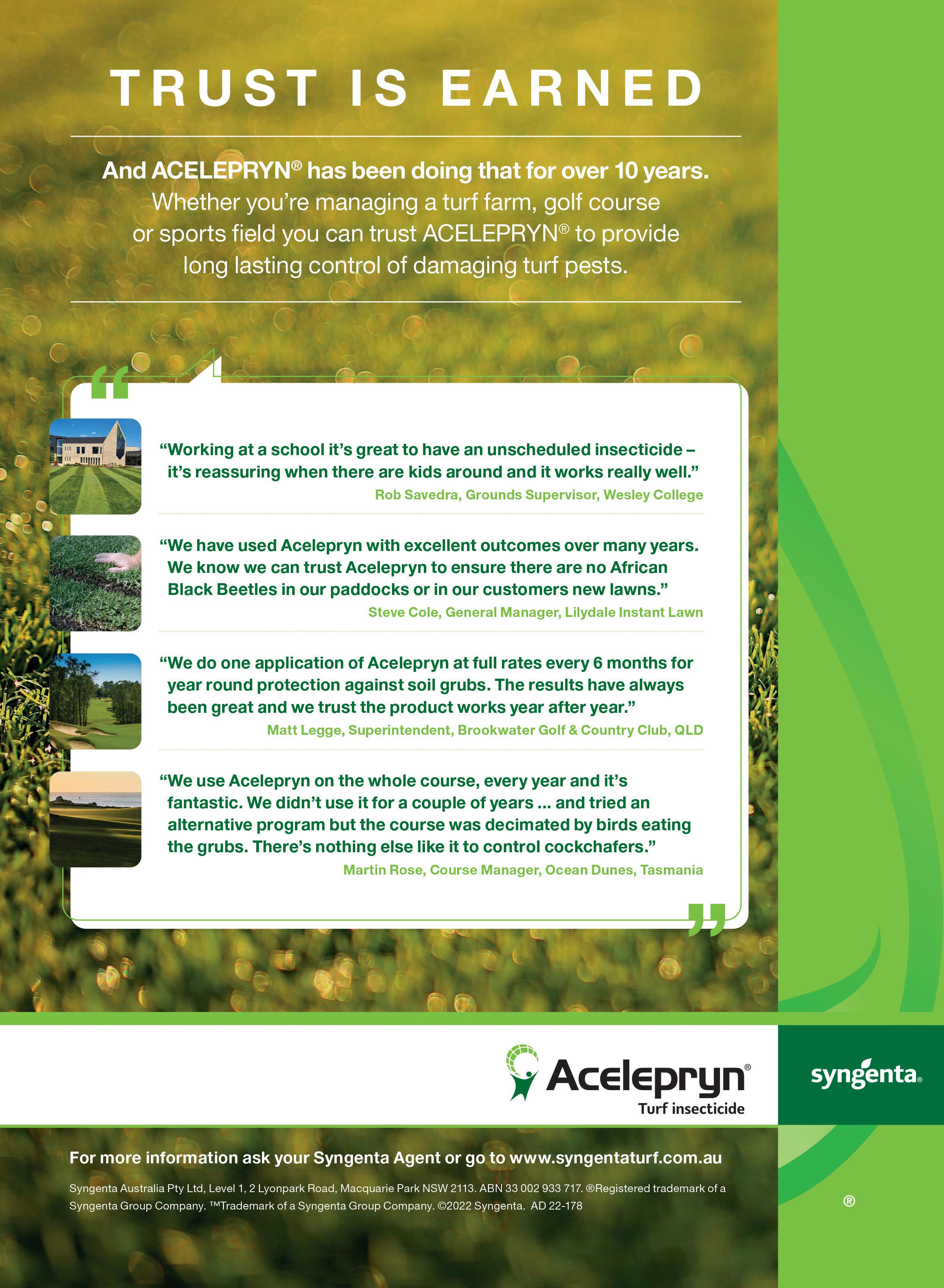
The
JOURNAL
Published by the Australian Sports Turf Managers Association (ASTMA)





























Editorial
Brett Robinson
Office: (03) 9548 8600
Mobile: 0434 144 779
Email: brett@agcsa.com.au
Advertising
Pam Irvine
Office: (03) 9548 8600
Mobile: 0402 069 489

Email: pam@agcsa.com.au
Art Direction & Design
Jo Corne
Printed By Southern Impact Pty Ltd



The
The
PREMIUM PARTNERS
PREMIUM PARTNERS
The
The
PREMIUM PARTNERS
The
PLATINUM
Suite 1, Monash Corporate Centre
752 Blackburn Road, Clayton, VIC 3168
P: (03) 9548 8600 E: admin@agcsa.com.au
W: www.agcsa.com.au



ABN 96 053 205 888
ASTMA Board




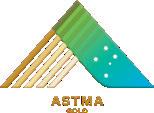



Ben Tilley (president), Chris Burgess (treasurer), David Thomson, Peter Lonergan, Damian Hough and Troy Jordan
Chief Executive Officer

Mark Unwin
Office: (03) 9548 8600


Mobile: 0438 320 919
E: mark@agcsa.com.au
Membership
Allison Jenkins
E: admin@agcsa.com.au
Accounts
Philip Horsburgh
E: philip@agcsa.com.au
Events and Education

Simone Staples
E: simone@agcsa.com.au
Pam Irvine
E: pam@agcsa.com.au
AGCSATech




Bruce Macphee (Senior
E: bruce@agcsa.com.au
Tim Fankhauser (Agronomist)
E: tim@agcsa.com.au


Keally
E: keally@agcsa.com.au




www.facebook.com/TheASTMA www.linkedin.com www.instagram.com/the_astma @TheASTMA
The
The
PARTNERS
The
The
PLATINUM
PLATINUM
The
PREMIUM PARTNERS
PLATINUM
PLATINUM
The
The
SEPTEMBER-OCTOBER 2022 1
Agronomist)
Social Media
Nankervis
Copyright © 2022 The ASTMA believes that material sourced and produced for Australian Turfgrass Management is accurate, but gives no warranty in relation thereto, and disclaims liability for all claims against the ASTMA, its subsidiary companies, its employees, agents or any other person which may arise from any person acting on the materials contained within. No portion, in whole or part, may be reproduced without the written permission of the ASTMA PREMIUM PARTNERS
Australian Sports Turf Managers Association is indebted to the support of the following premium partner companies PLATINUM GOLD SILVER BRONZE The Australian Sports Turf Managers Association encourages all members to support these companies who support your association PREMIUM PARTNERS The Australian Sports Turf Managers Association is indebted to the support of the following premium partner companies
GOLD SILVER BRONZE The Australian Sports Turf Managers Association encourages all members to support these companies who support your association
Australian Sports Turf Managers Association is indebted to the support of the following premium partner companies
GOLD SILVER BRONZE
Australian Sports Turf Managers Association encourages all members to support these companies who support your association
Australian Sports Turf Managers Association is indebted to the support of the following premium partner companies PLATINUM GOLD SILVER BRONZE
Australian Sports Turf Managers Association encourages all members to support these companies who support your association
Australian Sports Turf Managers Association is indebted to the support of the following premium partner companies
GOLD SILVER BRONZE
Australian Sports Turf Managers Association encourages all members to support these companies who support your association
Australian Sports Turf Managers Association is indebted to the support of the following premium partner companies
GOLD SILVER BRONZE
Australian Sports Turf Managers Association encourages all members to support these companies who support your association
Australian Sports Turf Managers Association support of the following premium partner
GOLD SILVER BRONZE
Australian Sports Turf Managers Association encourages these companies who support your association PREMIUM
Australian Sports Turf Managers Association is support of the following premium partner companies PLATINUM GOLD SILVER BRONZE
Australian Sports Turf Managers Association encourages all members these companies who support your association
Geelong’s
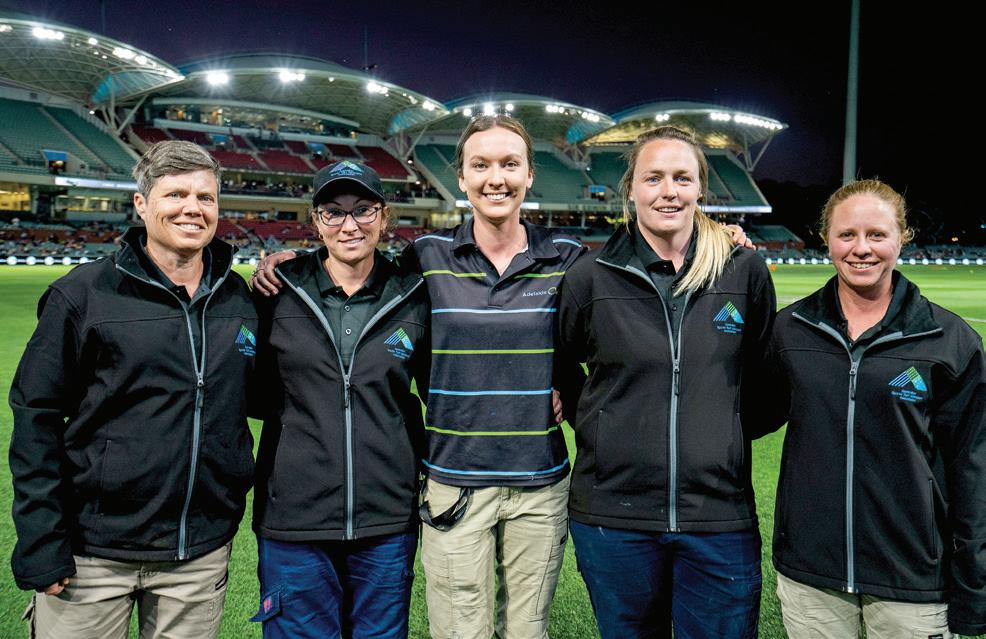

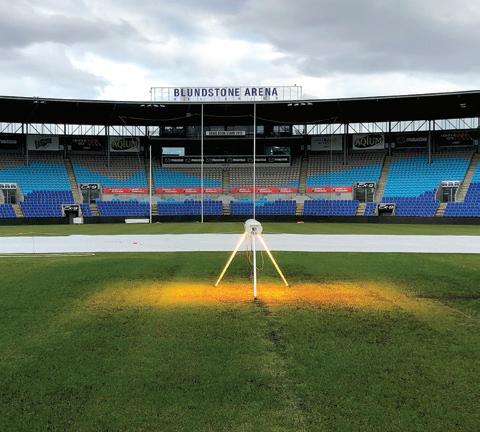
Getty
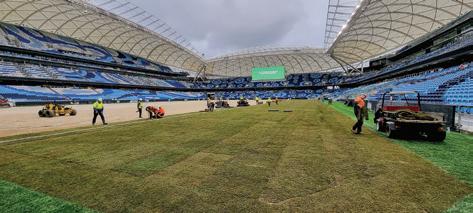
2 AUSTRALIAN TURFGRASS MANAGEMENT 24.5 8 COVER STORY ON THE RIGHT WICKET 8 2022 will be a year to remember for Liam Kirkman and Joel Ives. The Green Options curators, who oversee turf operations at GMHBA Stadium (Kardinia Park), not only saw Geelong lift the AFL Premiership trophy for the tenth time in the club’s history, but also had the honour of hosting the opening game of the ICC T20 World Cup in mid-October. ATM editor Brett Robinson catches up with Kardinia’s dynamic duo to see how they fared under the international spotlight. Cover:
Kardinia Park hosted the opening two games of the 2022 ICC Men’s T20 World Cup on 16 October (pictured is the UAE v Netherlands match). Photo:
Images/Daniel Pockett – ICC FEATURES World Cup balancing act 16 Back in session - 2022 FTMI 22 AFLW crew break new ground 28 ALSO IN THIS EDITION… Foreword Thinking 4 Best on ground – Socials 6 Women in Turf Profile – Sophie Warren 34 Regional Profile – Dunsborough Lakes GC, WA 58 Around the Trade 64 Association Reports 68
PHOTO: TRISTAN LINTERN/ADELAIDE OVAL
28 16 38 CONTENTS
COLUMNS
JOHN
Contributors to Australian Turfgrass Management Journal Volume 24.5 (September-October 2022): 2022 FTMI delegates; Adobe Stock Images; Australian Golf Media; Shane Baker, CSTM (GCSAWA); Oliver Bell (Dunsborough Lakes GC); Lisa Burley (Royal Sydney GC); Brenton Clarke (Warrnambool GC); Garth Cusick (Eastern Sward GC); Evergreen Turf (NSW); John Forrest (Forrest and Forrest Horticultural Consultancy Services); Brooke Francis (Adelaide Oval); Getty Images; Ben Gibson (The Toolbox Team); Monina Gilbey (Glenelg GC); Leon Hennessy (NSWGCSA); Damian Hough (Adelaide Oval); Joel Ives (Green Options/ Kardinia Park); Liam Kirkman (Green Options/Kardinia Park); Scott Lardner (Cricket Australia); Shaun Lehane (Eastern Sward GC); Tristan Lintern (Adelaide Oval SMA); Peter McMaugh AM (Turfgrass Scientific Services); Melissa Mills (Hawks Nest GC); John Neylan (Sporteng); Marcus Pamplin (Blundstone Arena); Jason Perkins (NZGCSA); Fiona PringleJones (Pembroke School); Peter Roach (Cricket Australia); Jayde Robson (City of Ballarat); Simon Snedden (ACTSTMA); Simone Staples (ASTMA); Yolanda Sulser (Adelaide Oval SMA); Kate Torgersen (Environmental Golf Solutions); Mark Unwin (ASTMA); Sophie Warren (Glenelg GC); Tim Warren, CSTM (Glenelg GC).
Groundhog day
It just doesn’t get any easier does it. As has been the theme for much of these columns this year, the weather has continued to confound and frustrate sports turf managers across the country. I was fully intending on doing a wrap up of conditions on the eastern seaboard that have transpired over the past year for this edition, but with the Bureau of Meteorology declaring a third consecutive La Nina event in mid-September, it almost seemed pointless. It was only going to be a matter of time before the weather dominated the headlines yet again and sure enough just as this edition was halfway through production it hit.
While the focus has been on Queensland and NSW for the much of the year, this time it was Victoria’s turn. While the rainfall totals weren’t enormous or anywhere near the figures that those further north usually cop, they were enough to cause moderate to severe flooding of many river systems whose catchments were already beyond saturation point. The Murray, Campaspe, Loddon, Goulburn, Yarra, Maribyrnong and Barwon rivers all burst their banks, with townships like Echuca on the Murray experiencing flood levels higher than the devastating peak of 1993.
Numerous sports turf facilities across the state were left cleaning up with one of the hardest hit being Barwon Valley Golf Club which resides on the banks of the Barwon River in Geelong. The course, which is home to superintendent Colin Foster, went under not once but twice in the space of a week. No sooner had Foster, his team and a band of member volunteers finished scraping and hosing off inch-thick silt deposits from all bar one-and-a-half greens, the rains returned along the river’s catchment and within 24 hours they were back under.
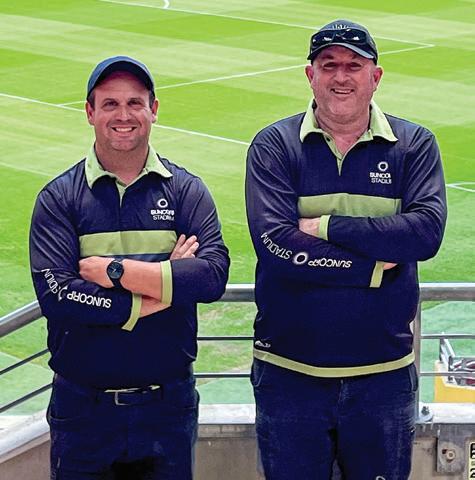
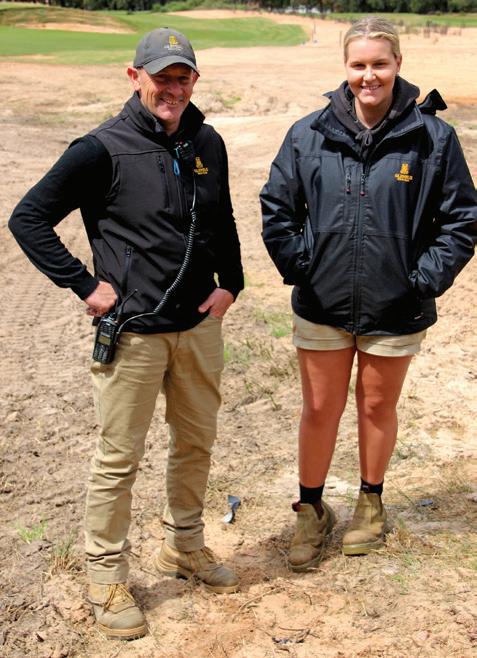
There was a striking image posted by Foster on his Facebook page showing just how close they came to losing their machinery. The photo (pictured right) shows equipment parked up on a bank at the end of the club’s driving range with no more than a metre’s gap to spare from the peaking floodwater. True to form the photo sparked the usual banter and even Foster’s daughter Ashleigh got in on the act, querying her father ‘Surely you could mow the dry strip in the meantime – think you’re slacking off a bit there.’
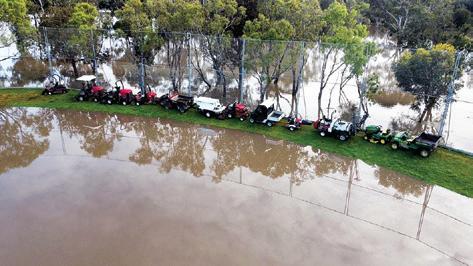
In Melbourne, courses along the Yarra River suffered their worst flooding in more than a decade. Rosanna, Yarra Valley, Kew, Green Acres and Latrobe were all swamped. Even my local footy grounds in the suburb of Heidelberg were left inundated, the likes of which I have not seen in my near 20 years living in the area.
The T20 World Cup, which we feature extensively in this edition, hasn’t escaped the vagaries of the weather either, with a number of games in Hobart and Melbourne having to be shortened or abandoned due to rain. As for local cricket competitions, well at least here in Victoria the start of the season has been pretty much a write off. As much as I’d like to think that conditions will improve, the Bureau’s regular missives would suggest otherwise and we could be in for quite the ride over the next few months.
Finally, to end on an upbeat note, congratulations to Royal Melbourne Golf Club director of courses Richard Forsyth for recently being inducted into the Victorian Golf Hall of Fame at the Victorian Golf Industry Awards. A doyen of our industry who has carved out an incredible career spanning more than 40 years, including 15 as superintendent at Metropolitan Golf Club and the past 13 at Royal Melbourne, Forsyth joins some illustrious company.
Instituted back in 2011, the Hall of Fame includes the likes of playing legends Peter Thomson, Ivo Whitton and David Graham, along with a who’s who of golf administrators and course architects. However, there are two particular names on the list which gives this honour so much more meaning for Forsyth – his Royal Melbourne predecessors Mick Morcom and Claude Crockford. To be considered in the same league as those industry luminaries is indeed wonderful praise and deserved recognition for the indelible mark Forsyth has left and continues to leave on our industry. Congratulations Richard. Enjoy the read…
Brett Robinson, Editor

SEPTEMBER-OCTOBER 2022 3
NEYLAN 38 PETER MCMAUGH AM 44 JOHN FORREST 48 KATE TORGERSEN 50 BEN GIBSON 54
SEPTEMBER-OCTOBER 2022 3 34 70
Employment and education focus as initiatives ramp up
Somemore favourable weather across large parts of New South Wales and Queensland in July and August have allowed turf management teams to undertake some much-needed reparation works and kick off renovations at venues impacted by flooding and heavy rainfalls. 2022 has seen almost all parts of the country bear witness to records shattered in terms of annual rainfall, with some venues still only partially open. In many ways, 2022 has been a year of relentless challenges for turf managers and with the Bureau of Meteorology recently declaring a third consecutive La Niña event, the months ahead are likely to bring above average rainfall to an already saturated east coast.
The slight respite in late August and through September has seen golfers come back out to play, with Golf Australia reporting an annualised increase in rounds played, up some six per cent year on year (seasonally adjusted). We are also transitioning over from winter sports to summer sports and with the ICC T20 World Cup being held in Australia across October and November, our leading curators and their teams will be in the global spotlight a little earlier this season.
As always, it’s appropriate at this time of the year to pay tribute to the turf management teams who have managed facilities throughout a difficult year for our leading winter codes. Whether playing host to an AFL or NRL grand final through to hundreds of community grounds that hosted their local competitions and finals series, those turf management teams have delivered some outstanding playing surfaces and presented them the best they can with the resources they have.
In so many ways, this year’s International Thank a Superintendent Day, held on 13 September, was well deserved, with the ASTMA joining all leading international bodies in recognising the efforts and diligence of turf management teams in preparing golf courses. This year, the early reporting from the USA, Europe, Canada and Australia has seen a 12 per cent increase in reach for the campaign. This is a great result for the promotion of the industry and those who work tirelessly to create and maintain our world-class courses.
FTMI, WOMEN IN TURF STRATEGY
September saw the ASTMA announce that applications were open for the 2022 Future Turf Managers’ Initiative (FTMI), presented in conjunction with Gold Partner Jacobsen. The FTMI continues to be a popular education offering, with a record number of applications received. In a similar approach to last year, the 2022 FTMI will deliver a hybrid approach to professional learning, with a series of facilitated online education seminars between November


and February, culminating in an intensive 2.5 day face-to-face gathering in Melbourne next March. Check out page 22 of this edition where we profile those who have been chosen as part of the FTMI ‘Class of 2022’.
The ASTMA’s Women in Turf Strategy continues to gain momentum, with the first initiatives under the program delivered in August and September. These included the formation of a mentoring program and work placement opportunities for apprentices and qualified female sports turf managers. The mentoring program has seen over 20 female turf managers paired with an experienced mentor, starting a structured program designed to provide the industry’s emerging talent a greater level of professional and personal support as their careers progress.
Following the success of the initial placement, we have been approached by a number of facilities and turf managers to host similar work placement opportunities. We are currently working through these with more details to be announced when finalised.
As noted to members in previous communications, our strategy continues to be prioritised toward the development of education and employment. Work is continuing on registering the association as a training organisation and supporting several states through a program of employment campaigns, coupled with the continual advocacy to state and federal representatives for industry employment support. As we move toward the end of 2022 and continue to deliver on these priorities, the ASTMA will continue to actively work with members and the industry for ways it can assist further, so if there is anything you would like to discuss, please get in touch.
JORDAN JOINS ASTMA BOARD

Finally, at the ASTMA Board of Directors meeting in late August, it was confirmed that Marvel Stadium arena manager Troy Jordan (pictured) would be co-opted to the ASTMA Board. Troy’s 20 years’ experience in sports field management will add strength and diversity to the Board and we look forward to his input.
Following completion of his apprenticeship at Camberwell Grammar (Melbourne) in 2006, Troy moved to the Hawthorn Football Club where he was head groundsman at Waverley Park for three years. That was followed by a move to what was then Etihad Stadium (now Marvel Stadium) for a further three years.
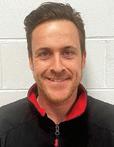
Under the work placement initiative, Adelaide Oval played host to four female turf managers who were provided the opportunity to assist the team preparing the ground for the historic first AFLW Showdown between Adelaide and Port Adelaide. The initiative received tremendous coverage through state and national media outlets (pictured above is an article which appeared in the Adelaide Advertiser). Such coverage provided significant awareness of the industry as a viable career option, with extraordinary opportunities available for aspiring sports turf managers.
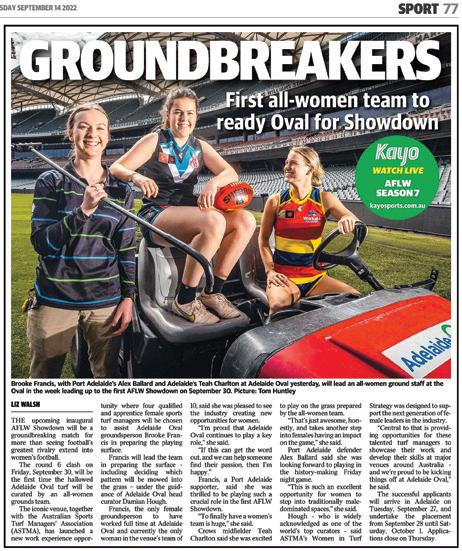
In 2011, Troy headed across the Tasman after being appointed as head turf manager at Forsyth Barr Stadium in Dunedin to lead preparations for that year’s Rugby World Cup. His experience in managing facilities for large scale international events also resulted in his appointment as a consultant for the 2014 FIFA World Cup in Brazil. After that he returned to Melbourne where he joined PGG Wrightson Turf for a period of time before returning to Marvel Stadium in 2015 where he took on the position of arena manager.
In being appointed to the Board, Troy noted his eagerness to join the executive and is looking forward to what is an exciting time for the association and its members.
“I have been fortunate enough to have had exciting and diverse experiences throughout my career and I now feel it is time for me to give something back to an industry that has given me so much,” says Troy. “I hope to use my extensive experience in sports turf management to contribute to the growing diversity of the ASTMA.”
4 AUSTRALIAN TURFGRASS MANAGEMENT 24.5 FOREWORD THINKING WITH MARK UNWIN, CEO


For information and support: www.jacobsen.com The Eclipse 360 ELiTE Lithium Ride-on Reel Mower cuts more than grass. Battery use, noise and maintenance downtime are all reduced by a mower with precision technology that gives you Jacobsen's greatest cutting and run range. The latest ELiTE Lithium-Ion battery and a hydraulic-free design makes the Eclipse 360 electric reel mower the greenest, quietest and highest quality Jacobsen cut available for your golf course or fine sports turf. OUR NEW LITHIUM GREEN MOWER ECLIPSE 360 CUTTING CAPACITY 143K SQ. FT. (13,285 SQ. M.) BLADES PER REEL 7, 9, 11 OR 15 0.062”0.438” CUT HEIGHT (1.6MM - 11.1MM) BATTERY PACK 250AH ELiTE LITHIUM 62” CUT WIDTH (1.6M) RUN TIME 12.2 KW/HRS
Best
on ground
JOEL IVES
“Another
CRICKET QUEENSLAND
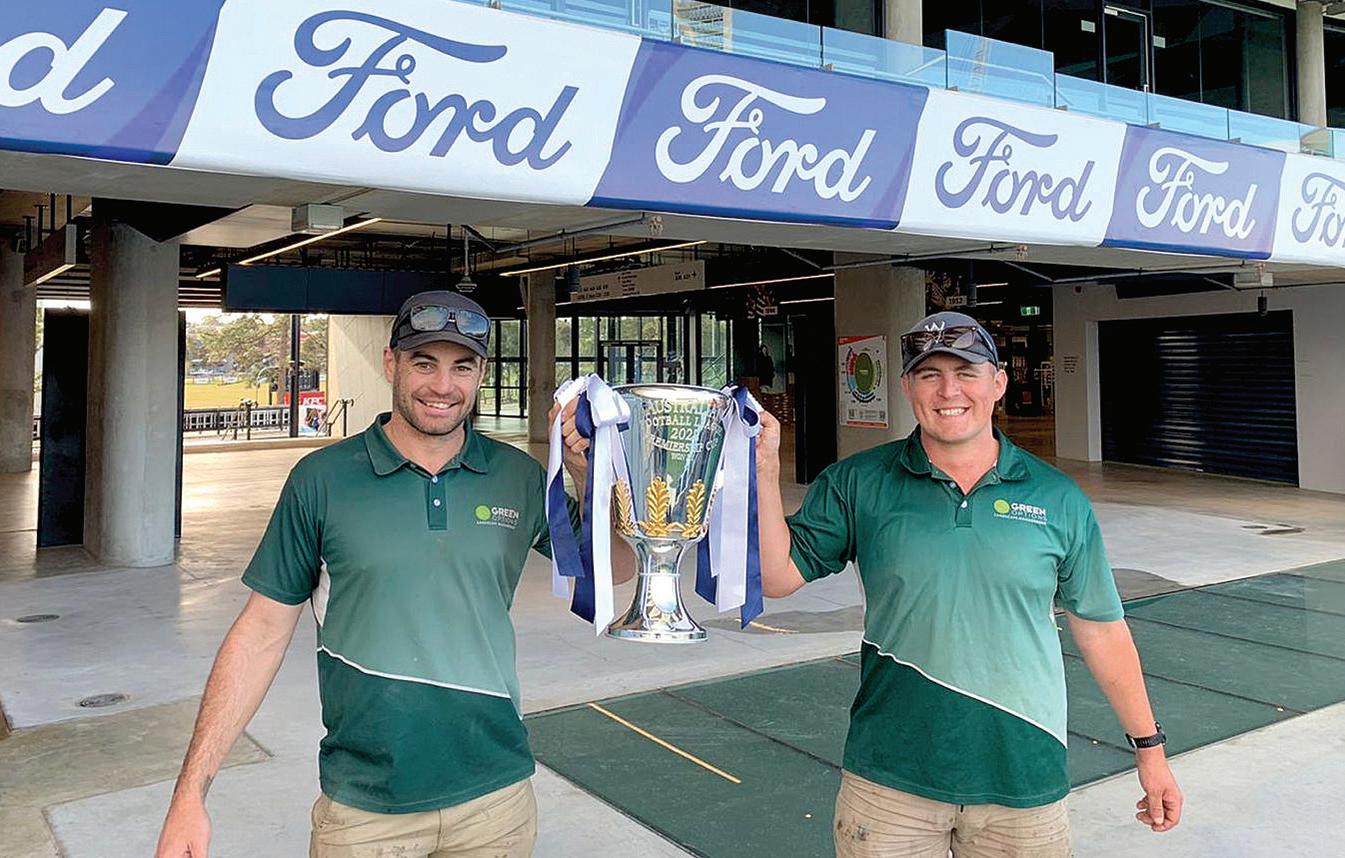



“The Curators building is the first facility to be officially unveiled as part of the newly developed Allan Border Field. We were thrilled to have had our groundskeepers together to celebrate the occasion over an afternoon BBQ with Queensland Cricket staff. We are immensely grateful for the tireless effort of all curators, past and present, who have nurtured the grounds and shaped the game into what it is today.” (A who’s who of the Queensland curating community – among them Kevin Mitchell Snr and Jnr – celebrate the new digs at Allan Border Field in Brisbane.)
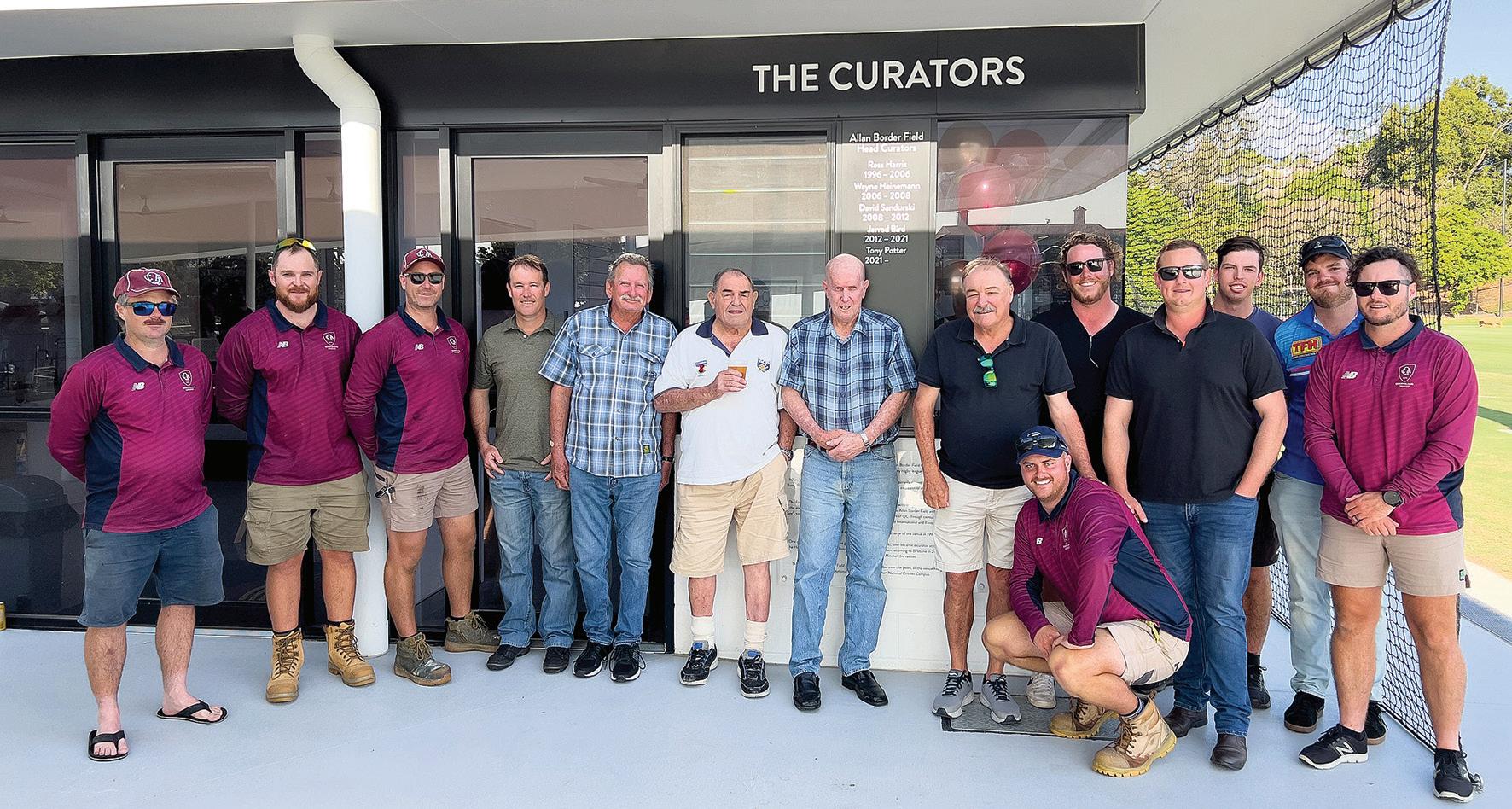
SIMON BLAGG
“Making the most of the sunshine before yet more rain. Today all tees were topdressed with USGA sand…” (Eastlake GC’s new super overees his first reno since taking the reins.)
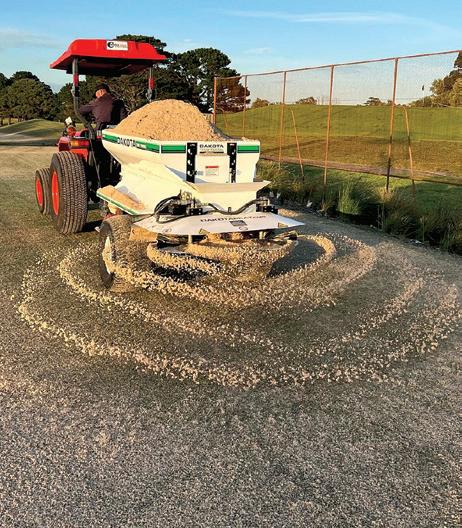
6 AUSTRALIAN TURFGRASS MANAGEMENT 24.5 SOCIAL MEDIA
pinch yourself moment being able to hold the silverware. Another season ticked off with lots of learning and new experiences under one of the finest!” (After a hectic winter, GMHBA Stadium crew members Joel Ives, right, and site manager Liam Kirkman, left, celebrate Geelong’s 2022 AFL Premiership by getting their hands on the highly sought after trophy.) ATM showcases some of the best social media images from around the industry in recent months.
NICHOLAS DOUGLAS




“A massive effort from the course staff at Cranbourne Golf Club today for our spring greens renovations… Greens were verti-cut in two directions before a 10mm solid-tine.” (It’s that time of year where corers fire up and apprentices earn their keep.)
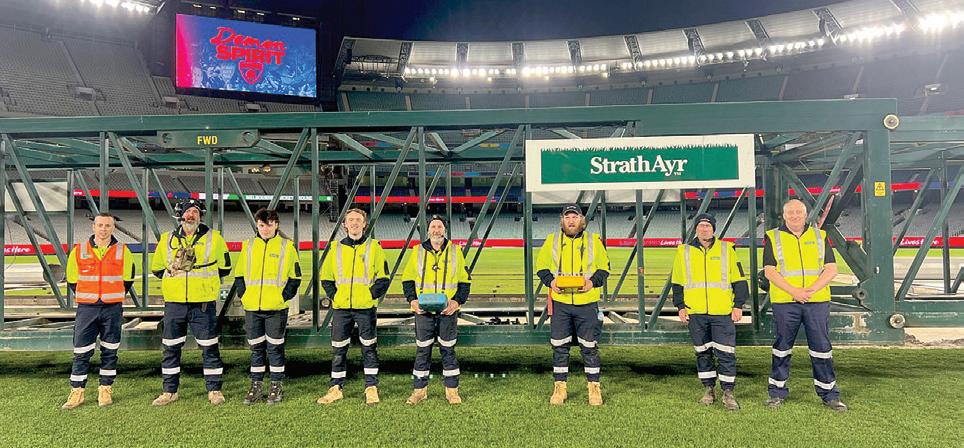
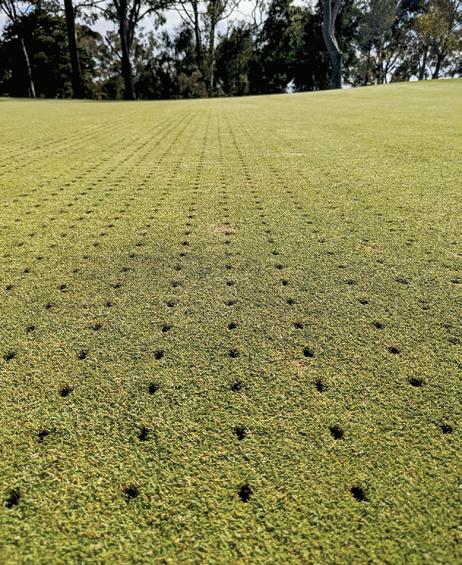
IDRIS EVANS
“Things are looking really good in preparation for the WA Open starting next week.” (Really good? More like stunning! The WAGC crew show just how good they are.)


SEPTEMBER-OCTOBER 2022 7
KEITH MCPHEE
“Maitland City Council sports facilities team’s tribute to Queen Elizabeth II.” (Paying respects to Her Majesty, turf management style.)
DAVID THOMSON
“The TransportAyr team worked through two nights last week at the MCG to relocate the wickets in readiness for the cricket season. The work was challenging after all the recent rain slowed down the progress, however, the end result was a perfect installation...” (Just days after the MCG hosted the 2022 AFL Grand Final, the drop-in wickets were installed.)
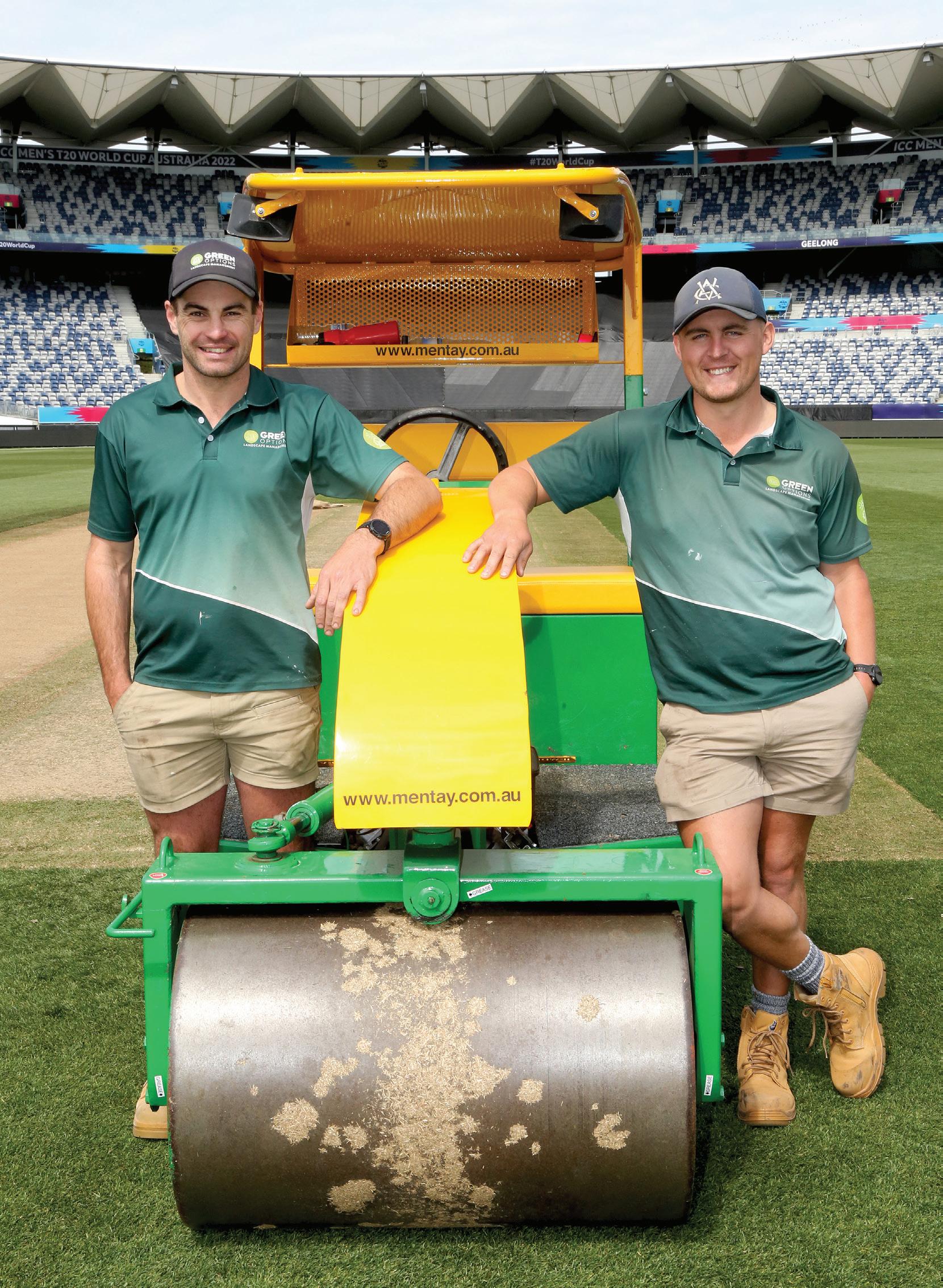
T20 WORLD CUP
PHOTOS: BRETT ROBINSON AND LIAM KIRKMAN
right wicketOn the
Standing outside Gate 9 on the southern side of Geelong’s Kardinia Park, an almost childlike grin comes across the face of site manager Liam Kirkman. He’s just been conversing with stadium management about the forthcoming opening day of the ICC Men’s T20 World Cup which Kardinia Park is getting ready to host. More than 14,000 tickets have been sold for the doubleheader on 16 October featuring Sri Lanka, Namibia, United Arab Emirates (UAE) and the Netherlands, but it was another figure he’d just been told which was slowly sinking in and making him appreciate the magnitude of the event that was about to unfold.
A global television audience in the vicinity of 65 million would likely be watching the first match of the tournament between Sri Lanka and Namibia, thrusting one of Australia’s premier regional stadiums firmly into the international spotlight. It was the sort of number to give Kirkman and his right-hand man, third-year apprentice Joel Ives, a shot of adrenalin as if to say ‘It’s here, it’s happening, game on!’ As the tournament slogan splayed across the advertising hoardings inside the stadium exclaimed ‘This is the big time’ and for two young Aussie turf managers they were about to play a key role in one of international cricket’s most colourful and burgeoning tournaments.
When the first ball of the World Cup was bowled by Sri Lankan offspinner Maheesh Theekshana five days later, it would be another career-defining moment for both Kirkman (31) and Ives (24). Together with their counterparts at Bellerive Oval in Hobart (head curator Marcus Pamplin and assistant Samantha Butler), they would host the first 12 matches of the tournament, with each venue hosting three doubleheaders on alternate days as part of the First Round.
Up until that point Kardinia Park (all venues used for the World Cup were referred to by their non-commercial names) had only ever hosted one other international cricket match. That was a T20 fixture between Australia and Sri Lanka in February 2017 which the tourists won on the very last ball. One of seven venues used for this World Cup – and the only regional one – Kardinia Park’s return to the world stage had been a long time coming, not helped of course by a global pandemic which forced the postponement of the original tournament back in 2020.
Nevertheless, when it did return Kirkman and Ives had the venue shining and it would provide a fitting stage for some early tournament drama, including the first major upset. Setting a heavily supported Sri Lankan side 164 for the win, minnows Namibia shocked everyone by rolling them for just 108 to win by 55 runs. Sri Lanka were then on the wrong side of another dramatic moment two days later in their match against the UAE. Despite going on to win the match comfortably, it was the heroics of UAE spinner Karthik Meiyappan who stole the show, becoming just the fifth player in the tournament’s 15-year history to take a hat-trick.
“It was an exciting week and great to be involved with,” reflects Kirkman. “Both Joel and I had been counting down for ages and after the tournament got postponed in 2020 we were really hoping it would come back so that we could have the opportunity to be involved. It was a long time coming, but we got there.
“It was a great experience and between myself, Joel and the stadium we were really pleased with how the wickets were. We wanted to produce some good consistent wickets for the three days of matches and I think we achieved that. It now shows we can put on international cricket matches and transition the venue quickly from one sport to another which is part and parcel of being a multipurpose facility these days.”
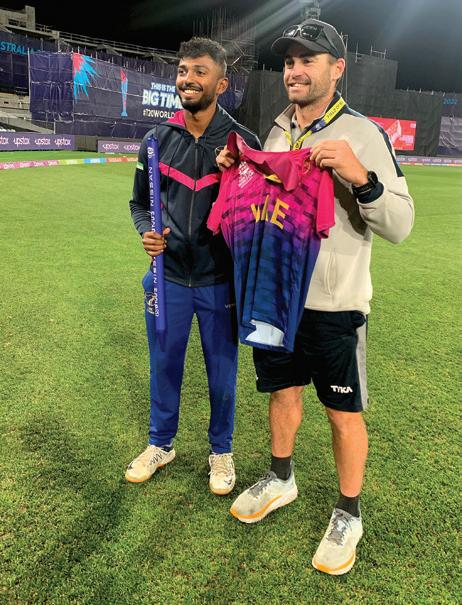
ONE TO REMEMBER
The World Cup was yet another pinch yourself moment for Kirkman and Ives who over the past couple of years have formed a tightknit two-man team overseeing turf management operations at Kardinia Park. Kirkman has been in charge since early 2019 and was joined by Ives at the start of 2020. Both were initially employed by Pitchcraft which oversaw the maintenance of the ground, but are now part of the Green Options stable after it took over Pitchcraft’s maintenance contracts in 2020.
Kirkman’s entry into the turf industry was somewhat by chance. Originally from Shepparton, Victoria, he moved to Melbourne
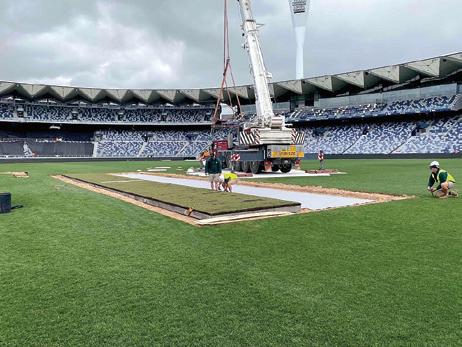
SEPTEMBER-OCTOBER 2022 9
2022 will be a year to remember for Liam Kirkman and Joel Ives. As ATM editor Brett Robinson writes, the Kardinia Park curators not only saw Geelong lift the AFL Premiership trophy, but also had the honour of hosting the opening game of the 2022 ICC Men’s T20 World Cup.
Opposite page: Over the past couple of years, site manager Liam Kirkman (left) and third year apprentice Joel Ives (right) have formed a tightknit two-man team overseeing turf management operations at Geelong’s Kardinia Park
For the first time, Kardinia Park installed two drop-in wickets this season instead of the usual one
Kirkman with UAE hat-trick hero Karthik Meiyappan
after finishing school and initially completed a film and digital media degree. He then moved to Geelong in search of a building apprenticeship but would end up stumbling across an advertised position with Pitchcraft. At the time Kirkman was playing footy for the Colac Tigers and it just so happened that Pitchcraft had recently completed the reconstruction of their oval. A few phone calls to owner Richard Winter and an interview later and Kirkman was on his way.
With Pitchcraft managing a number of other venues, including Junction Oval in Melbourne, Kirkman would work the footy season at Kardinia Park under then head groundsman Dave Gudgeon and spend summers under Adam Thorne at Junction Oval preparing wickets for the St Kilda Cricket Club. Pitchcraft was also undertaking a lot of construction work at that time and
Kirkman got to experience a number of those projects. Among them was the redevelopment of Junction Oval after which he became the assistant curator there. After a couple of seasons and following the departure of Gudgeon, Kirkman headed back down the Princes Highway and took over at Kardinia Park.
Ives, by contrast, came via a different route. A cricket tragic, he started with Cricket Victoria doing some volunteer work for the Melbourne Renegades BBL franchise. That turned into a placement with Cricket Australia and assisting the game and market development team in the lead up to the National Cricket Inclusion Championships and the National Indigenous Cricket Championships in Alice Springs. It was while there that he met NT Cricket head curator John Flynn who at one point needed some
help out in the middle. Without hesitation Ives put his hand up, jumped on a roller and as he describes “it was instant love”.
Ives found his way back to Melbourne and picked up a casual role at Junction Oval which eventually turned into an apprenticeship. Always keen to get into stadiums, his opportunity arose when a former apprentice at Kardinia Park moved on, paving the way for him to join Kirkman. Ives is currently in the final year of his apprenticeship which he is completing through The Gordon TAFE.
“We’re a good little team and we love what we do,” says Kirkman. “It’s a busy venue, especially with football eight months of the year and with just the two of us full-time it certainly keeps us on our toes. But we like to make sure we can provide the best field we can for any event we hold here – whether it’s AFL, cricket, soccer, concerts or other community events.”
While AFL forms a massive part of the year-round focus – Kardinia Park has been home to the Geelong Football Club since 1940 – the stadium is also now pushing hard to have more events during the summer months in its bid to be recognised as a true multipurpose venue. To that end the stadium has been undergoing a gradual staged redevelopment over a number of years with the latest Stage 5 works currently in progress. This stage sees the construction of a new grandstand at the northern end of the stadium which will increase overall capacity to more than 40,000.
A real feather in the cap moment, and a surreal one for Kirkman and Ives, came in March when rock icons the Foo Fighters chose Kardinia Park for a one-off show after Australia’s international borders re-opened following the pandemic. In what was their 13th trip to Australia, the Foo Fighters became the first international act to play in Australia postCOVID, announcing the show with just nine days’ notice. Tickets were quickly snapped up and a crowd of 30,000 would end up packing the stadium in what Kirkman describes as a real ‘We’re back’ moment after the travails of COVID.
A few weeks later the 2022 AFL season got underway, with normal service resumed after two disrupted seasons. It would ultimately prove a remarkable one for the home side and just weeks before the ICC moved into the venue to set up for the T20 World Cup, Geelong won their tenth AFL Premiership with a commanding Grand Final victory over Sydney. Kirkman and Ives certainly played a small part in that triumph and deservedly got their hands on the trophy when it came back
Kardinia Park’s older drop-in wicket (foreground) is more than 10 years old and constructed with Gabba wicket soil from Queensland. The newer wicket constructed in 2019 was built with clay sourced out of Dunkeld in Victoria’s Western Districts
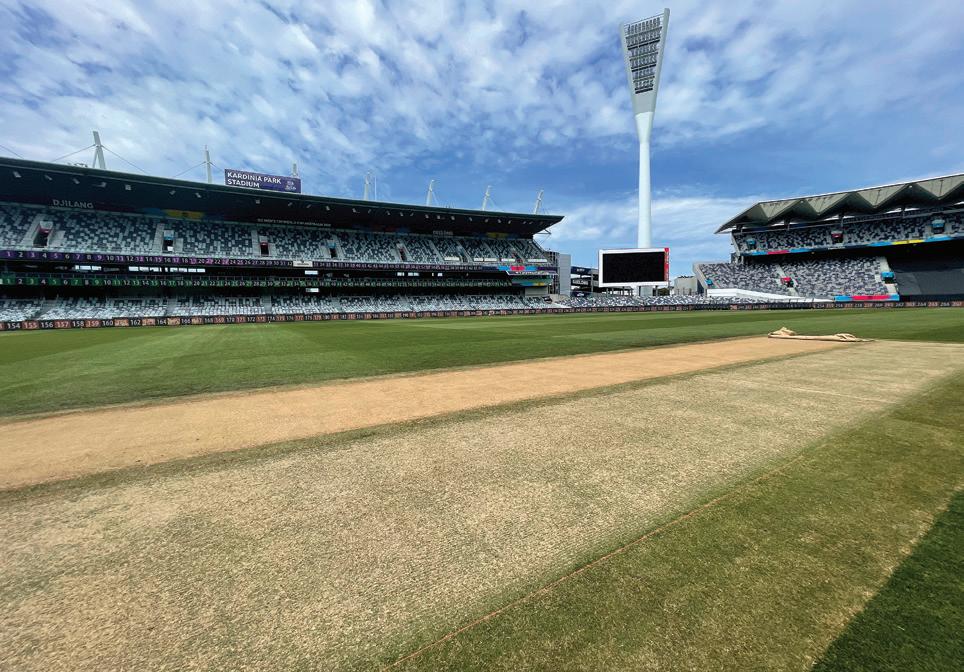

10 AUSTRALIAN TURFGRASS MANAGEMENT 24.5 T20 WORLD CUP
Kardinia Park hosted the opening match of the 2022 ICC Men’s T20 World Cup, one of six across three doubleheader match days in the first week of the tournament

Together we built a legacy, now let’s build the future ALWAYS READ THE LABEL BEFORE USE 2022 Environmental Science AU PTY LTD + Suite 206, 737 Burwood Rd, Hawthorn East, VIC. 3123 + Technical Enquiries: 1800 024 209 + www.au.envu.com Envu and the Envu logo are trademarks of Environmental Science U.S. Inc. ©2022 Environmental Science U.S. Inc. Envu is a new vision for a company built on top of the towering foundations laid by Bayer Environmental Science. While we value where we come from, we’re even more excited about moving forward with a new vision that is entirely dedicated to the future of our environments. Learn more at www.au.envu.com
to Geelong, Ives posting a photo of the two of them holding it on his LinkedIn profile (see page 6 earlier in this edition)
Kardinia Park, or GMHBA Stadium as it is better known commercially, is one of the more unique venues in the AFL. It is the only ground where the home side not only plays its competition matches but also trains there as well. Add to that VFL, AFLW and VFLW sides that also play and train there and Kardinia Park can lay claim to being one of the most heavily utilised of all the major AFL venues.
This past season saw the ground host nine AFL matches, eight VFL games and a VFLW game. At the start of the year it hosted four AFLW games between January and March and then, when the competition shifted to its new start time in August, hosted a further three games. As it has transpired, with their World Cup commitments completed, the ground briefly switched back to AFLW mode in late October and early November due to Geelong being in the finals running.
“It can be a challenging ground to manage, especially during the peak of the
footy season,” says Kirkman. “We had a bit of a hard year this year but we managed to get through it with more training on the field than ever before. Depending on playing schedules we can have up to 30 hours of training during the week on top of our match days. With the AFLW season moving, they started their preseason in June which meant we had another team using the ground at a time of year where it is very difficult to get any improvement in the surface.
“We are a ryegrass field on a sand profile, so it’s all about managing the decline. We always start at 100 per cent before Round 1 in March and then we try and keep it at that level for as long as we can. Unfortunately it only takes a few wet games or a week of wet training and then a wet game on top and the surface can start to struggle. After a really heavy June-July period this year, we did a major turf replacement and installed a 10-metre wide strip of HG Turf’s Hero hybrid product through the centre corridor, goal to goal, which will hopefully put us in good stead for next footy season.”
DOUBLING UP
While the recent footy season dominated much of their attention and efforts, Kirkman and Ives always had the T20 World Cup in the backs of their minds. No sooner had Geelong saluted, their focus quickly switched to cricket and getting the drop-in wickets prepped and out into the middle.
In a first for the venue, this year two dropin wickets were installed instead of the usual one. When it was announced back in 2019 that they would be hosting World Cup games, the stadium approved construction of a second drop-in wicket to enable them to host more games.
The venue’s existing Santa Ana couchgrass wicket, which is now more than 10 years old, was constructed from clay sourced from the Gabba in Brisbane. By contrast, the new wicket, also Santa Ana, was built with clay sourced out of Dunkeld in Victoria’s Western Districts. Built by Pitchcraft, a lot of time and effort went into its construction to get it compacted correctly and the levels right. The Dunkeld clay is much more reactive than the Gabba soil, something that neither Kirkman nor Ives had experience with before. As such it has been a gradual learning curve as they get to know its idiosyncrasies and they now have two very different wickets which require different management approaches.
“The Dunkeld clay swells a lot more vertically and generally wants to make life hard for you,” laughs Kirkman. “It requires a lot of heavy angle and cross rolling to work the bumps out of it. I guess the main difference is that it’s a brand new wicket compared to the other one and sometimes new wickets can be hard to work with.
“We certainly put a lot more time and effort into the Dunkeld wicket, more so than what we initially thought. But I think we’ve got it figured out pretty well now and we are at the point where we are more than comfortable presenting it for an international fixture. It’s been another learning curve for us and we now know for next time that as soon as it goes into the ground we need to start preparing it a lot earlier.
“The Gabba wicket on the other hand is a beauty – we love it. You just wet it up, put a few clippings in the bare areas, cut it and then roll. It sounds so simple but it really is compared to the other one. In saying that it has been down a lot longer and been prepared for matches over a longer period of time, so it has that maturity to it. I’m sure once the new wicket is down for a couple of seasons and we can put the work into it, it will settle down.”
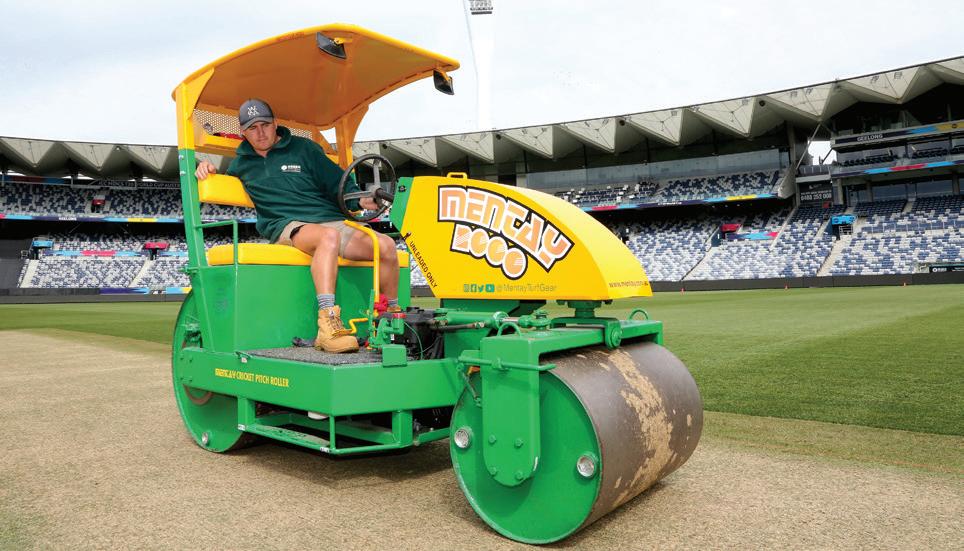
Kardinia Park has a 100 per cent ryegrass surface with a sand profile. Home of the Geelong Football Club, its AFL, VFL, AFLW and VFLW sides all train and play on the ground during the football season

12 AUSTRALIAN TURFGRASS MANAGEMENT 24.5
T20 WORLD CUP
With Geelong going all the way and winning the 2022 AFL Premiership, Kirkman and Ives (pictured) had just 18 days to get the drop-in wickets and outfield ready before the first ball of the tournament on 16 October
With Geelong going deep into September, Kardinia Park’s drop-ins didn’t go into the ground until the Wednesday after the AFL Grand Final. Utilising the services of Pitchcraft, on the Monday the existing turf was removed and the centre area dug out to depth before being graded and levelled. The wickets were placed on Wednesday with a perimeter strip of turf installed Thursday. By Friday, Ives was on the roller and was on it for much of the next two-and-a-half weeks.
“As soon as the wickets went in it was all about rolling and covering every angle we could,” explains Ives. “I don’t think we could’ve hit any other angle possible trying to iron out all the highs and lows. At the start we would normally have a 90 degree cross roll and a couple of 45 degree rolls for the old wicket, but with the Dunkeld one I reckon we pressed every angle possible.
“We used different weighted rollers this time as well and wet rolled it and dry rolled it. We pretty much did everything to it, but you also had to be mindful of not rolling the absolute life out of it. We used a 2-tonne roller to get a base and then brought in a big 4-tonne roller which we haven’t used before. It definitely worked. The Mentay 2-tonne is great, but that extra weight over the newer wicket, when there was still a bit of moisture in it, meant we were able to give it a nice even press along the whole length.”
NEW LEARNINGS
The biggest challenge for Kirkman and Ives, however, was before the wickets even went into the ground. With a much shorter turnaround time and needing to get the Santa Ana out of dormancy quicker and up in time for an international standard pitch, it meant that they had to be spot on with their preparations.
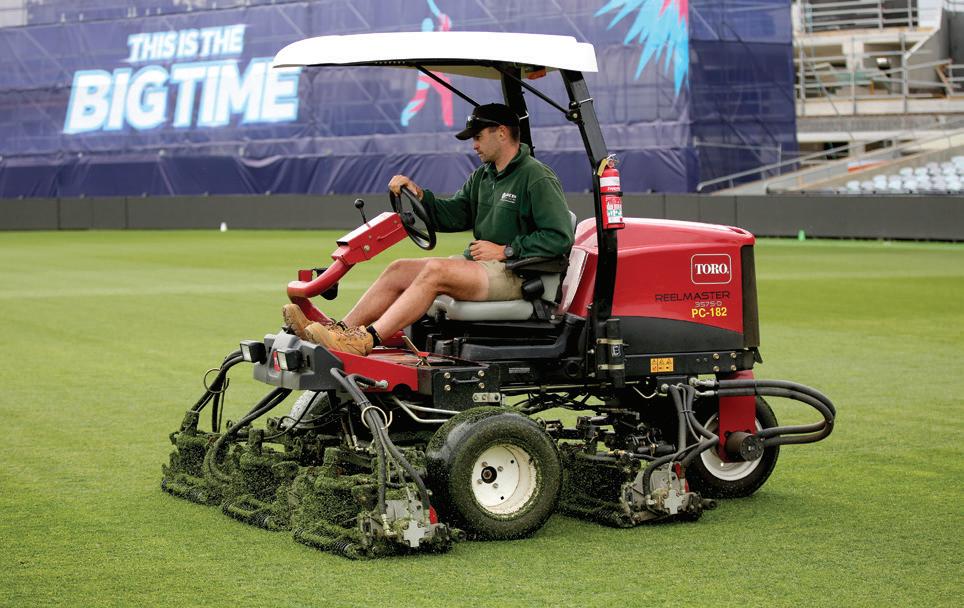
Mean temperatures for Geelong in August and September were just 15.8 and 16.2, with only two days over 20 for both months. The first half of October only saw three days above 20. Getting the balance right between pushing the couch just enough but not to the point of damaging it proved to be challenging, but they had a few different approaches to aid them in that endeavour this time around.
“We’re playing cricket in October – it’s challenging – but I think we managed them pretty well,” explains Kirkman. “Getting the couch out of dormancy was the biggest challenge. If we got a sunny period we’d put the growth mats on to get as much heat into the profile as we could. We did lots of spray applications but at the same time we had to be mindful of not going too hard and making them susceptible to disease. There were times where we had the growth mats down but then
you’re creating a perfect environment for algae to pop up which we had a bit of an issue with.
“Something new for us this year was using the Pogo device which I know a lot of the golf course guys use. It really helped to give us some solid data and took the guess work out of things. One day early on Joel and I were saying to each other that it still felt pretty cold and that we didn’t think the couch would be moving much. So we put the Pogo in about 50mm and to our surprise it showed us that soil and canopy temperatures were actually higher than we thought.
“Having that information meant we were able to get on them a little earlier than we would have if we were just going on gut feel. So we went out with a granular and low and behold the couch started to move. Obviously we didn’t try to overdo things especially going into such a high profile event period.

SEPTEMBER-OCTOBER 2022 13
It was a quick transition to get the outfield height of cut down from 26mm to 15mm for the World Cup
“We monitored leaf growth and tried to get as much coverage as quickly as possible. We used different products that we hadn’t used before and tried a lot of things that have worked. That has given us some good information and knowledge that we can take into the next cricket season or even postseason to try and keep that dormancy at bay a bit longer or to help get it out earlier. It has been a good learning experience.”
GAME ON
With just 18 days to turn the ground around from footy to cricket, Kirkman and Ives made sure they pulled out all the stops. The days were long and flew by as they counted down to the first game between Sri Lanka and Namibia. They were in there on the weekends as well, ensuring nothing was left to chance.

“After the wickets went in, Joel was on the roller most of the time and I was focusing on the outfield and getting the cutting height from 26mm back down to 15mm. Between the both
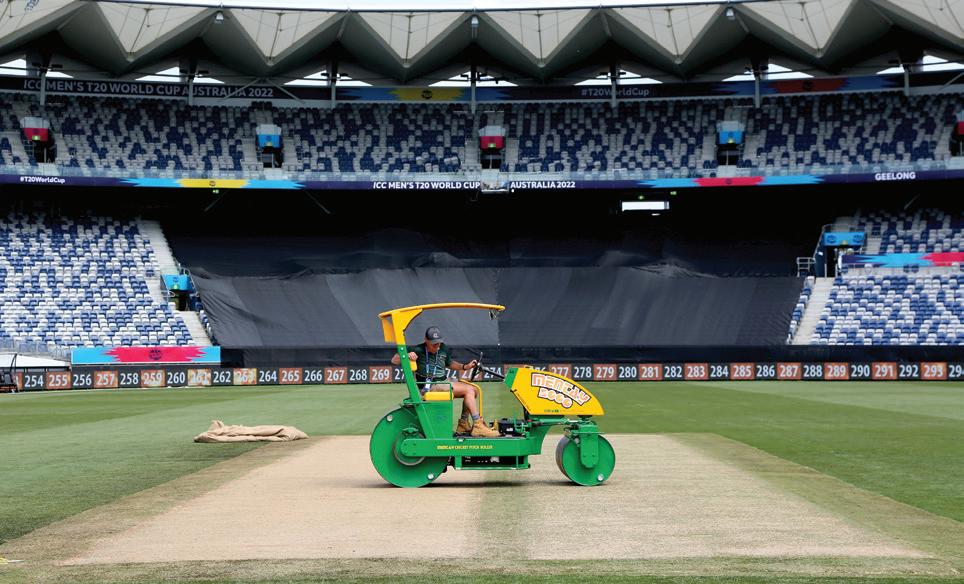
of us we love the game of cricket and we knew having the World Cup might be just a once in a lifetime event, so we were happy to work the long hours to make sure that everything was right for the week.”
And they certainly delivered. Across the six games they hosted, a total of 1559 runs were scored at an average of around 130 per innings, with a total of 87 wickets at an average of just over seven per innings. While some of the scores were on the lower side to start, come the third day scores were consistently between 140 and 160 and the matches highly competitive. Namibia’s opening match score of 163 was the highest posted, while three of the six games were decided in the last over. The older Gabba wicket hosted four games (on the first and third match days), while the newer Dunkeld wicket hosted two games on the second day.
“It was a great experience for the both of us and Joel did a fantastic job producing two really good wickets in a relatively short time,”
says Kirkman. “First and foremost we wanted to get our day one wicket right and then to be able to manage the new wicket and its challenges as well.
“We did feel on that first day, on the older Gabba wicket, that it was a touch dry and a little on the slower side. We had a lot of rain (50mm) on the Wednesday and Thursday before that opening day. We knew that rain was coming so we wanted to be ahead of the game and get the wicket prepared a little earlier. We didn’t want to leave ourselves with a soft wicket going into the weekend, but in hindsight the top probably dried out a little too much. We managed the top moisture levels a bit better for the second lot of matches on that wicket and the scores certainly reflected that.
“As for the new wicket, it was totally different. While the older one still had a bit of grass on it, there was hardly any grass on the newer wicket because we had to work it a lot harder to get some of the bumps out of it. It almost looked like a piece of glass! But it performed well and Karthik got his hat-trick on it.”
SPECIAL MOMENT
Aside from the overall World Cup experience and notching up a major international event on their resumes, from a spectating perspective the highlight of the three days for Kirkman and Ives was witnessing Karthik cut a swathe through the Sri Lankan middle order.
Kirkman even snared a prized souvenir from the man of the moment to add to a sporting memorabilia collection that already includes a number of footy jumpers as well as a stump from the 2015 T20 World Cup signed by leading wicket-taker Mitchell Starc.
“All the teams were great, but the UAE players in particular were really nice,” says Kirkman. “They all came up to us and introduced themselves at the start of the tournament. When we met Karthik he said to Joel and I with a big grin, ‘Guys, you watch me, I’m going to be really good. I’m going to be the next big thing.’ We had a good laugh and thought it was great to see someone so confident and enjoying themselves and that hopefully he’d go on and have a great tournament. Low and behold in that second game against Sri Lanka he goes and gets a hat-trick!
“I went up to him after the match, shook his hand and congratulated him and asked him would he mind if I swapped the spare stump from the game for his jersey and he said ‘Absolutely!’. It was a great moment and hopefully when we move into our new home soon my partner will let me have a little man cave where I can put it on display!”
Game day one – curators and ground all primed and ready for the opening match of the T20 World Cup
14 AUSTRALIAN TURFGRASS MANAGEMENT 24.5 T20 WORLD CUP
“We wanted to produce some good consistent wickets and I think we achieved that.” – Liam Kirkman
The Royal Canberra Golf Club is unique within Australia as the only golf course to have ‘Bentgrass’ – a high maintenance grass that requires skill and patience to care for. With the added challenge of Canberra’s varied climate from winter to summer, there’s also a requirement for equipment that can cover all bases. For Mr Stores, that meant choosing John Deere: “I was really familiar with the equipment and comfortable with the decision to move to John Deere.”
Contact your local John Deere Golf dealer or visit JohnDeere.com.au/Golf.


Committed to you. Committed to the game.

“I’ve used just about every piece of equipment you can use on a golf course and in my opinion the John Deere product comes out in front”
Royal Canberra Golf Club Superintendent, Ryan Stores
Balancing act
How’s this for a schedule... Seventeen games in just over four weeks, from 17 October to 17 November. Nine ICC Men’s T20 World Cup games, the most of any venue for the tournament, including four doubleheader match days. Two Marsh Sheffield Shield matches, one Marsh One-Day Cup match and five WBBL hub games, the latter played across five days. For good measure throw in all the practice sessions which accompany such a schedule, a World Cup infrastructure bump out and battling the vagaries of one of the coldest climates in Australia to get wickets ready for all of the above. Oh, and try doing all that when you are down two staff members.
Don’t talk to Marcus Pamplin about challenges. The Blundstone Arena curator of 14 years knows more than most just how challenging the job can be at times and this
season, for the start of it at least, he got dealt a full hand. True to form, however, he and his team have risen to the challenge and for the World Cup produced some excellent wickets which offered plenty for both batter and bowler.
Hosting the opening week in tandem with Geelong’s Kardinia Park, Bellerive Oval (as it was called for the tournament) had six matches across three game days, all doubleheaders, as part of the tournament’s First Round. Hosting four Group B teams for that first week – the West Indies, Scotland, Ireland and Zimbabwe – it would be the latter two which would progress through to the final Super 12 round.
As the tournament entered that phase in the second week, Bellerive hosted three more games including another doubleheader, with the only blemish coming when the final match between South Africa and Zimbabwe had to be abandoned because of rain.
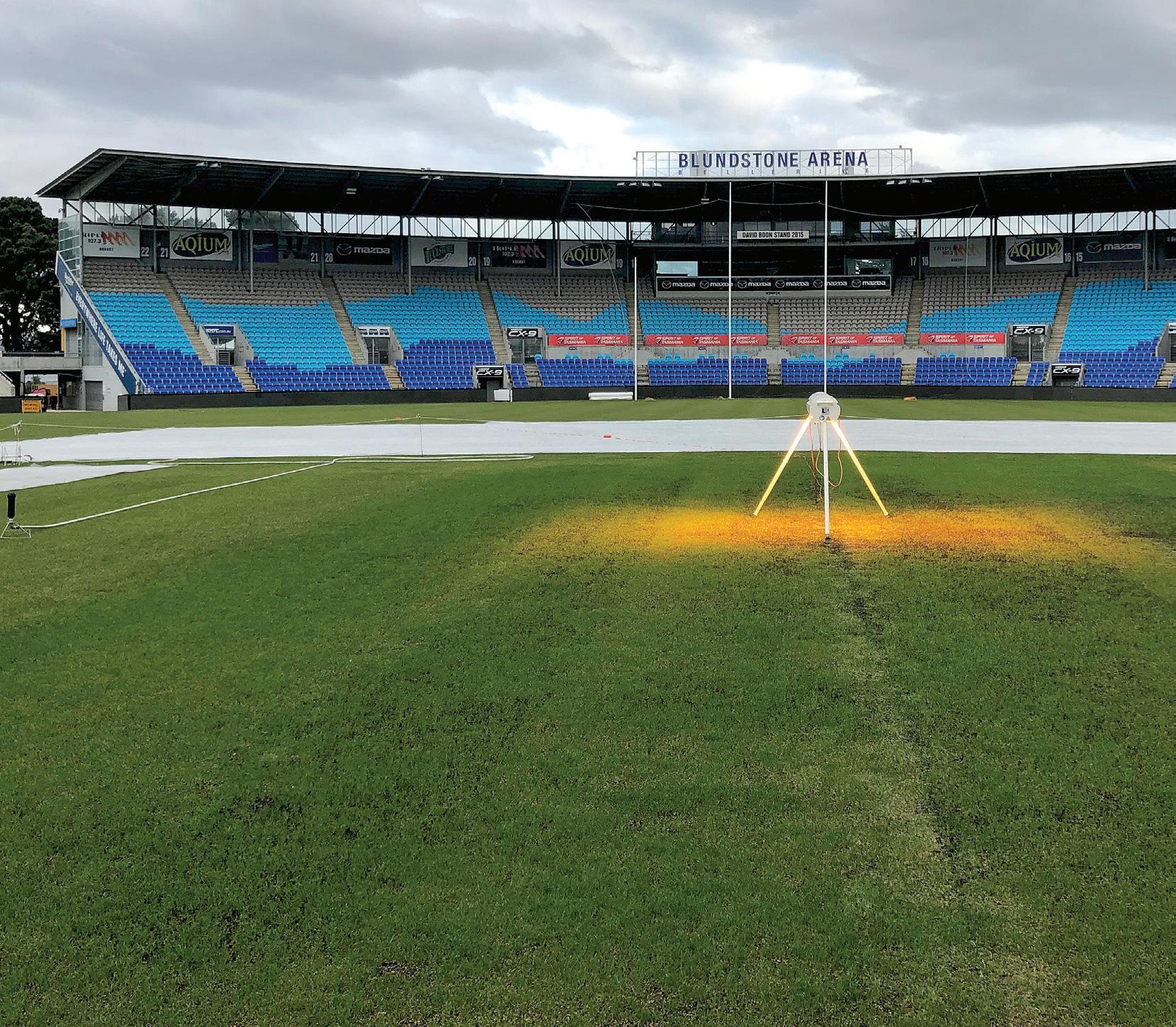
16 AUSTRALIAN TURFGRASS MANAGEMENT 24.5
Hosting the ICC T20 World Cup so early in a season has certainly presented some curatorial challenges. ATM editor Brett Robinson talks to Blundstone Arena’s Marcus Pamplin and Cricket Australia’s head of cricket operations and scheduling Peter Roach about some of the unique challenges this cricket season has thrown up already.
T20 WORLD CUP
“Considering some of the challenges we faced, we were very happy with how the wickets and outfield performed,” says Pamplin, winner of the ASTMA’s Excellence in Sportsfields and Grounds Management Award earlier this year. “The batsmen were playing 360 degree shots, the ball was coming on well and we had some good competitive scores posted. The weather was a bit of a pain though and it lingered. It was unusual because Mt Wellington was clear and it was clear to the right of it as well, but for some reason it just hung over us – a bit like the Munsters!”
SHEDDING NEW LIGHT
Preparations at Bellerive for the World Cup began in late August with a full renovation of the arena’s ryegrass wicket table and outfield. The day after the ground hosted its sole AFLW match of the new season on 27 August, Pamplin and his team got stuck in, with
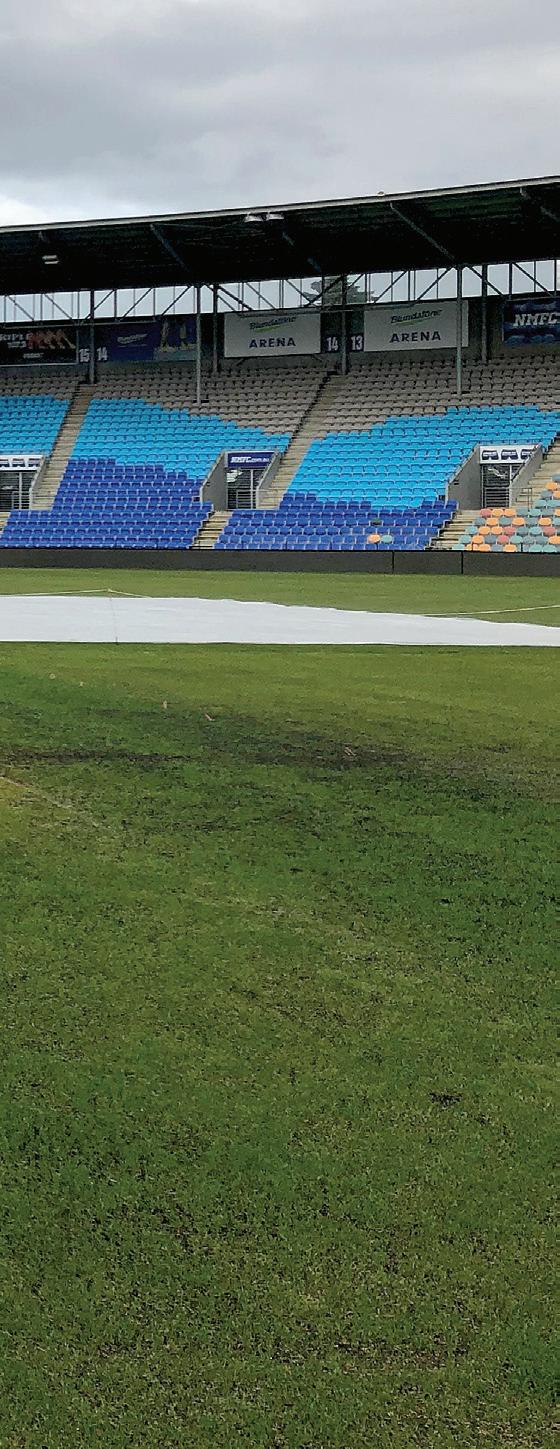
particular focus on the wicket table knowing they had a short lead-in ahead of their first World Cup game. On this occasion, however, they had some extra work to tend to as a result of a lingering issue from the football season.
Ask any ground manager that hosts AFL matches what one of their pet hates is and logos will often be top of the list. In Pamplin’s case it is the bright red Coles logo which covers the entire centre bounce area which just happens to be right in the middle of pitches 5 and 6 on the wicket table. At some venues, like the SCG and the Gabba which have in-situ wickets like Hobart, the logo is superimposed digitally during the television coverage, while at others it is painted white. However, as Hobart only hosts four AFL games a year it was decided that the normal painted red logo would be used.
Last season Pamplin had real difficulty germinating grass where the logo was due to the red pigment used in the paint. The grass also didn’t thrive once it had germinated so this season he sought to remedy things. As part of their renovations, the entire centre circle area was milled out to a depth of 10mm to ensure there was no pigment lingering in the soil. Fresh wicket soil was then incorporated and laser levelled before being reseeded.
To aid with recovery and to speed things up a little, Pamplin had earlier got approval to purchase three small SGL BU10 grow lights. The smallest offering in the SGL suite of light rigs, the BU10 units cast light across a 10m2 surface area with a light level of 250 micromoles/m2/s. Advertised by SGL as a “first aid kit” for turf, the compact units are designed primarily to help recover grass in damaged areas. While using light rigs to aid turf recovery is commonplace at many of Australia’s major arenas, using them on wickets is less so and Pamplin is experimenting to see how effective they can be.
“The use of the grow lights came about mainly because of the impact that footy was having out in the middle,” explains Pamplin.
“It also became a bit of a necessity because of the World Cup and the time of year that we needed to have the wickets up. We had a WBBL hub here around the same time last year when COVID was still impacting things and it was pretty tight to get the wickets ready in time, especially with our climate.
“Last year we also had a lot of problems germinating the grass where the Coles logo is, with the red pigment impacting the grass significantly. There’s obviously something about that red pigment that the turf doesn’t like as we have also had similar issues with the Chemist Warehouse logo used in the goal squares for AFLW and the KFC sign used during the BBL. In fact you can still see the KFC sign from last season because of the way the grass grows back. You can actually
make out the Colonel’s head when it’s cut at a certain height!
“I’ve done some testing on those areas too and we get a lot more diseases like rhizoctonia and pythium flaring up. I’m looking into it a bit more and have been talking with ICC pitch consultant Andy Atkinson about some of the likely chemicals in the pigments which may be influencing the growth habit of the turf.”
Placing the grow lights on the wicket area after it was repaired, Pamplin would move the lights every second day. For his own interest he experimented using them straight onto the turf and also with the growth mats on top of the turf. The lights were also used on the northern goal square which also had to be reseeded following the AFLW game.
“Given that we were only getting tops of 13 and 14 degrees at the time, the light and heat from the SGL units really did shoot the ryegrass up quickly,” says Pamplin. “The only negative was that the grass was hungry and it was elongated with very little body or strength to it. We had to feed it up with liquids to try and get some strength in, but overall it worked out alright and it gave us a surface much quicker than we would have otherwise.
“We had to baby it a fair bit. About two weeks in we gave it a light roll with a hand roller. Each week we would build up our rolling, first with a water-filled roller and eventually the ride-on to compact it more, but also being mindful of not overdoing it. The grass was obviously still very young by the time the World Cup matches came around, so it will be interesting to see whether it comes back during the remainder of the season.”
Pamplin also had a few challenges with the outfield, primarily thanks to the weather. Rain not only delayed their renovations by a day and a half, but made it difficult when collecting the cores. Due to the damp conditions many were pushed back into the ground, with Pamplin needing to put the Amazone back over the surface to collect those cores that didn’t get picked up. They also went around with rakes and manually collected them.
Despite that slight hiccup, the outfield was seeded with 300 kilograms of pre-germinated seed broadcast through a Dakota spreader into the core holes and scarifying lines before being topdressed with 30m3 of sand. The ground was oversown with a further 250kg of seed using a Blec Seeder with another light topdressing (5m3) three weeks later.
“We had a few issues with the rain which hampered our renovations, but the ground came up really well by the time the World Cup rolled around,” says Pamplin. “We also had to be very careful about not bringing the height of cut down too quickly and damaging the turf. Getting it down from 25mm to 10mm in a short period of time is pretty harsh and it’s always about finding that balance.”
SEPTEMBER-OCTOBER 2022 17
Blundstone Arena purchased and deployed small grow light rigs on their wicket table to help speed up recovery and aid growth with the T20 World Cup so early in the new cricket season
NORMAL SERVICE RESUMES
While not from a curating background, one member of the Australian cricketing community who can appreciate the challenges faced by the likes of Pamplin and his fellow curators is Cricket Australia’s head of cricket operations and scheduling Peter Roach.
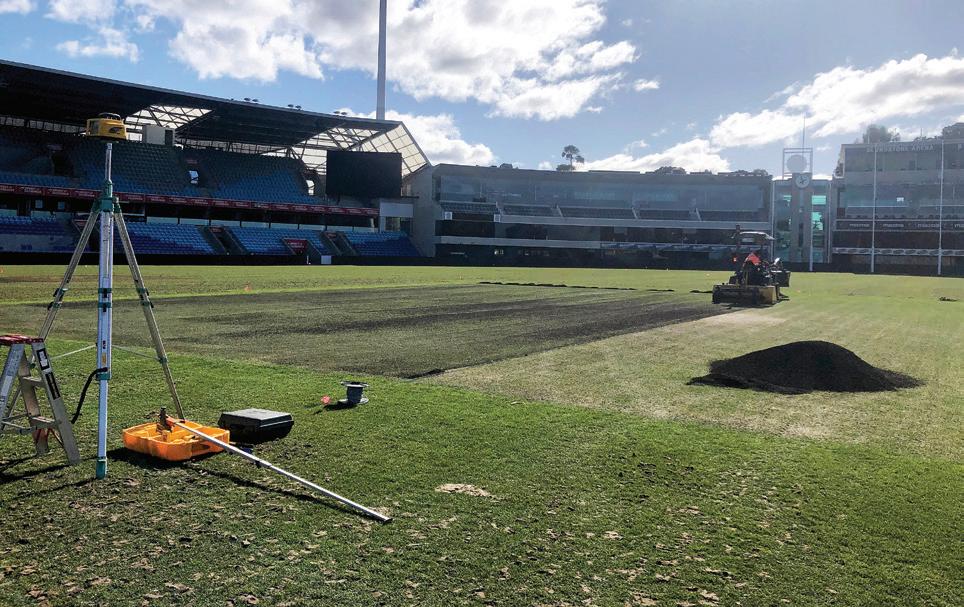
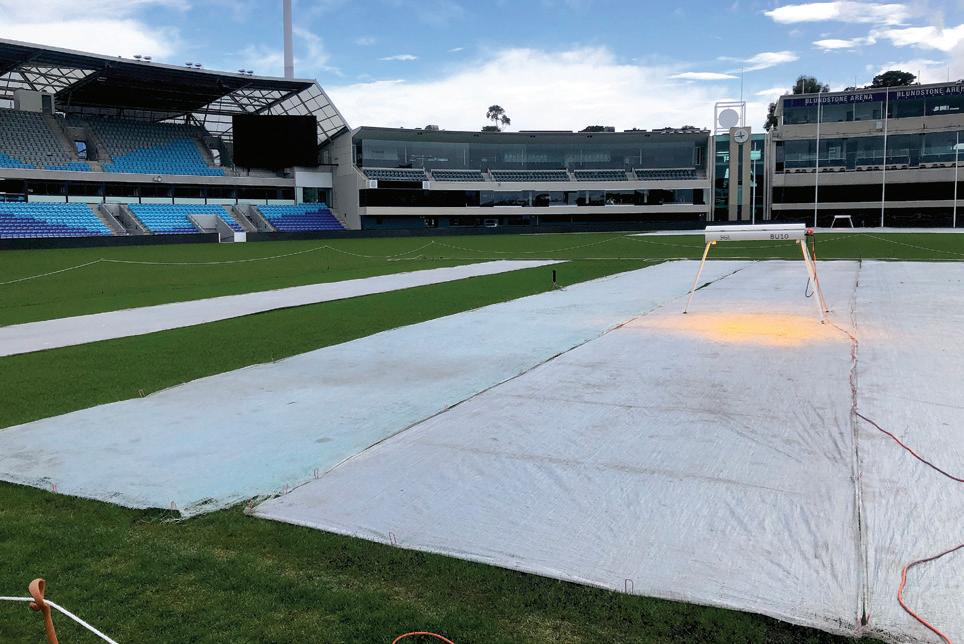
A former Victorian Sheffield Shield cricketer, Roach has been in the role for the past five years and is Cricket Australia’s central point of contact for the curators, working with them and the venues on scheduling and the challenges it can present in providing both international and domestic pitches.
After two seasons heavily disrupted because of COVID, the 2022/23 cricket season is effectively back to normal, with domestic competition fixtures kicking off on 23 September and going right through until the last week of March. That encompasses competitions such as the Marsh Sheffield
Shield, Marsh One-Day Cup, KFC BBL, Weber WBBL and the Women’s National Cricket League (WNCL) one-day competition. In addition to that there are Australia’s international fixtures which include five Tests (v West Indies and South Africa), three men’s ODIs (v England), six women’s ODIs and T20s (v Pakistan) and the Prime Minister’s XI match (v West Indies).
What has made this season different from a scheduling perspective, however, has been the need to factor in 45 games across seven of the country’s major venues for the World Cup (16 October to 13 November). Normally the international season doesn’t begin until late November, and historically they have been the Test matches, with ODI and T20 fixtures coming after. As a comparison, the last time Australia hosted the T20 World Cup in 2015, jointly with New Zealand, games were played in February and March.
As well as this year’s World Cup games, there were also a slew of warm-up games and two T20I Series which saw Australia play five games against England and the West Indies. Metricon Stadium and the Gabba hosted games on 5 and 7 October respectively (v West Indies), while Perth Stadium (9 October) and Manuka Oval (12 and 14 October) hosted the three England games.
While Australia’s domestic season usually begins in late September/early October, having major international matches so early in the season and with it the requirement of international standard pitches certainly presented challenges at some venues. Whether that’s been pushing the grass harder on the wickets or trying to get outfield heights of cut down quickly and getting them to firm up, the challenges have been plenty, especially when you factor in poor weather conditions which have impacted parts of the country. Roach is under no illusions of these difficulties and applauds the manner in which the curating teams have accommodated what has been a very different start to their season.
“It’s unusual to have an international event like the World Cup in October and November,” says Roach. “Normally they are in the back end of our season when you can produce white ball wickets relatively easier, so this is a different experience. When the tournament was announced by the ICC it fell into this particular window so it was up to us to create time in our schedule to accommodate it.
“Obviously we need to host our own domestic competitions in and around it, so we work with the ICC on the scheduling and looking at things like how close the games are and how much of a gap is needed in between games. We also have to factor in things like the ICC’s exclusivity periods whereby nothing can be played at a venue for up to three weeks before and three or four days after hosting an ICC match. We then work with the venues and the curators to make sure that they can deliver the best product possible. That is always our priority.
“Although probably just on the borderline for Hobart with their climate, generally by midOctober most of our major venues are good to go. It was probably the matches we needed to hold beforehand which was the challenge this time. We had those England and West Indies T20I games definitely a lot earlier than when we would normally hold international cricket at our major venues. Thankfully Gold Coast didn’t make the AFL finals, but the Brisbane Lions went pretty deep which meant a very short turnaround at the Gabba before the West Indies game. Dave (Sandurski) and his team
Curator Marcus Pamplin experimented using the lights with growth covers both on and off. The lights were also used to help aid the northern goal square (pictured in the background) after it had to be repaired
18 AUSTRALIAN TURFGRASS MANAGEMENT 24.5 T20 WORLD CUP
As part of the wicket table renovation, the AFL centre circle area was milled out to remove any trace of paint pigment. Fresh wicket soil was then incorporated and laser levelled before being reseeded
did a fantastic job to get cricket on so early and then follow that up with warm-up World T20 matches as well.
“It was the same with Sydney. Getting on grounds like the SCG, with in-situ wickets, in mid-October after Sydney made the AFL Grand Final, these are the sorts of challenges that you factor in when you do the schedule. You know that they all can’t have footy right up to the end, but there will be the likelihood that one or two of the major cricket venues – whether its Brisbane, Adelaide, Perth or Sydney – will go deep into September and that can be really challenging for those grounds and their curators.
“But what we know is that our curating teams are absolutely world class and can rise to the challenge and so far they have all come up spectacularly well. Hopefully we’ve been able to build in some breaks during and postWorld Cup where our grounds and curators can have a little bit of a recovery period. I think that’s where the challenge will be for some grounds. It’s not so much getting them up early for the World Cup, but we still have a long season to go afterwards.”
DOMESTIC FOCUS


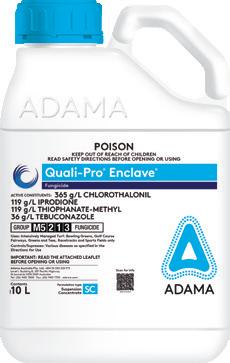
While the international fixtures are always the highlight of each season, it’s the domestic competitions which form the backbone of the schedule and where Roach devotes a fair amount of his focus. There is always particular interest with how the major venues are tracking as the international fixtures loom, but Roach says just as much attention is paid to the smaller venues.
The performance of such venues is closely monitored to see whether incremental improvements have been and can be made. As an example, for those venues hosting
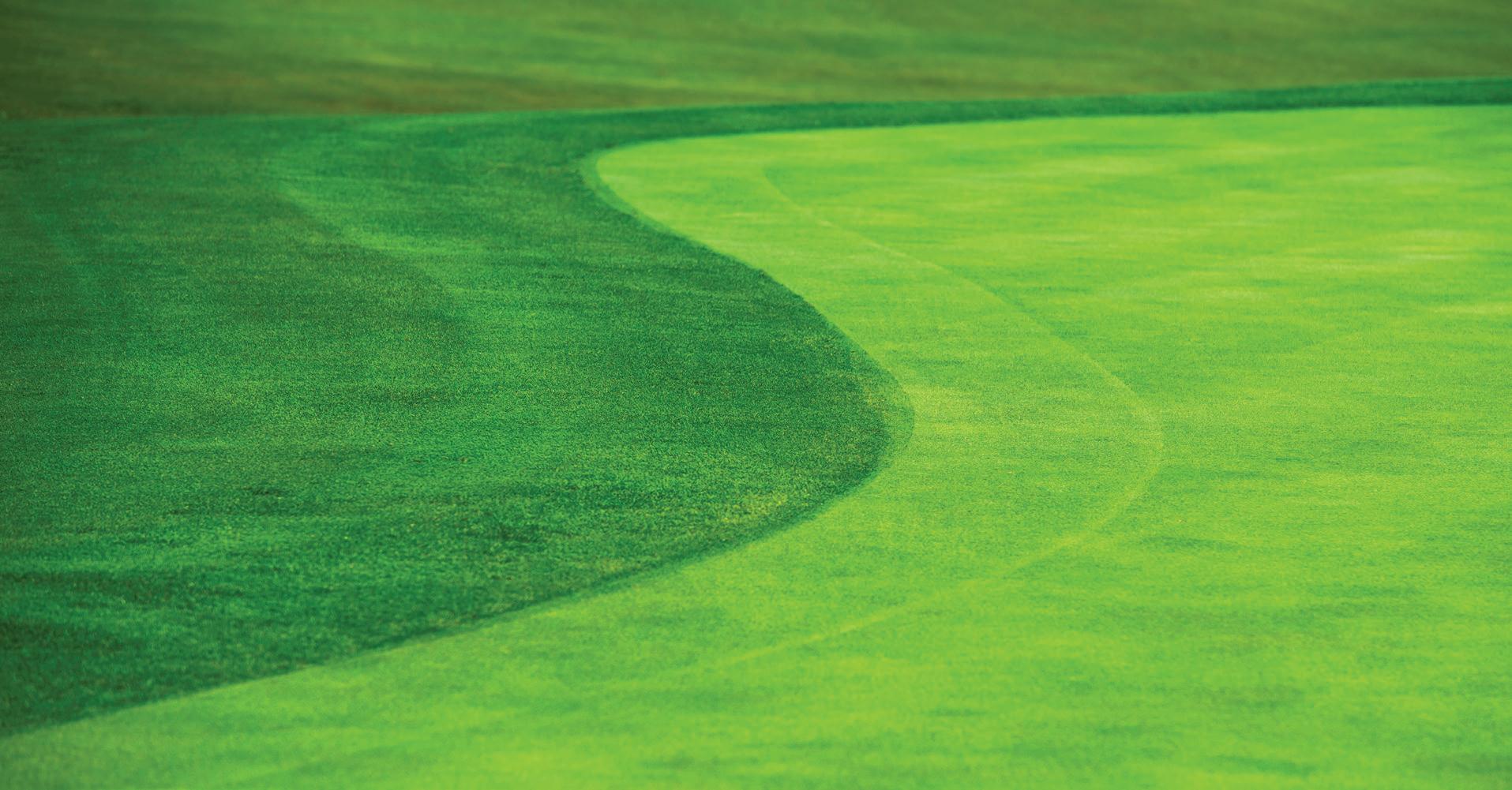
2022/23 DOMESTIC SEASON COMPETITION VENUES
NSW: SCG, Sydney Showgrounds, Drummoyne Oval, Blacktown International Sportspark, North Sydney Oval, Lavington Sports Ground (Albury), North Dalton Park (Wollongong), Wade Park (Orange) and C.ex Coffs International Stadium (Coffs Harbour). Victoria: MCG, Marvel Stadium, CitiPower Centre (Junction Oval), GMHBA Stadium (Geelong), Eastern Oval (Ballarat), Latrobe Recreation Ground (Latrobe) and Ted Summerton Reserve (Moe).
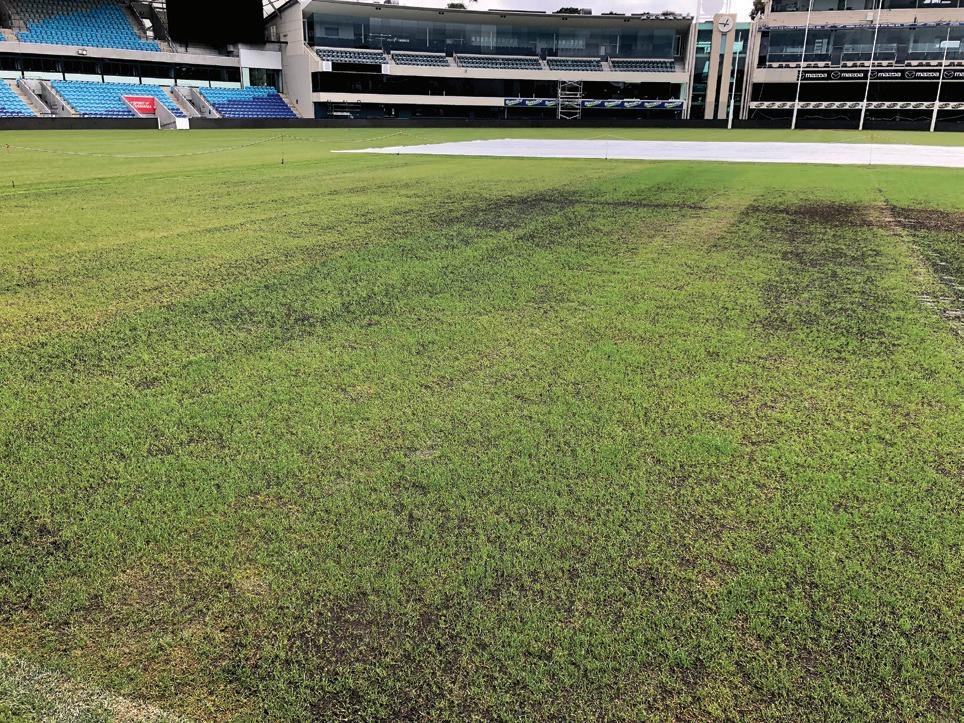
ACT: Manuka Oval and EPC Solar Park (Canberra).
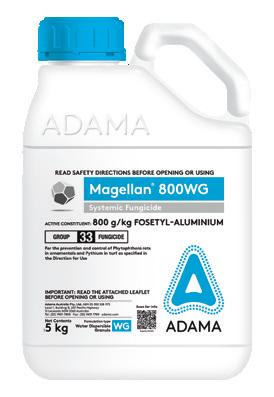
Queensland: The Gabba, Metricon Stadium, Cazalys Stadium (Cairns), Great Barrier Reef Arena (Mackay), Allan Border Field (Brisbane), Ian Healy Oval (Brisbane) and Bill Pippen Oval (Gold Coast).
South Australia: Adelaide Oval, Karen Rolton Oval (Adelaide) and Centennial Park Oval (Nuriootpa).
Western Australia: Optus Stadium, the WACA and Lilac Hill (Perth).
Tasmania: Blundstone Arena (Hobart) and University of Tasmania Stadium (Launceston).
SEPTEMBER-OCTOBER 2022 19
The grow lights definitely assisted with getting the ryegrass to shoot more quickly, however, the new growth was elongated with very little body or strength to it and required a delicate management approach
women’s matches, the discussion will often centre around ensuring the pitches have good pace and bounce. Both are important factors for keeping games moving along and is something that Roach says all venues have made great strides with in recent years.
Across all the major national domestic competitions this season, an impressive 33 venues are being used. They range from the major Test venues down to small regional grounds which may host just one national competition game for the season (the venues, by state, are listed on the previous page)
The WBBL competition, for example, is played across 14 of those venues, some having as many as six games while others have just the one. The Marsh Sheffield Shield is played across 11 venues and the Marsh One-Day Cup nine. The BBL, which utilises venues like Marvel Stadium and Sydney Showgrounds that only host cricket for the duration of that particular competition, is spread across 17 venues.
“We’re finally back to hosting the number of games we had pre-pandemic, so everyone is genuinely excited about that,” says Roach. “It’s a full season but I guess one of the things we have learned as an industry over the past couple of years during COVID is that we can do things now with the schedule that we had never really considered or thought possible before.
“If you look at the WBBL this year it’s being run a little bit differently in that we had five teams based out of Mackay and the other three out of Blacktown for the first week. At Mackay they played six games across four match days, including two doubleheaders. That is certainly different to what we would have been doing say five years ago.
“So there are different things we can do now to set the season up. Some of them are better for the curators, some probably not so, but we try wherever possible to balance the schedule. If they have a particularly busy part of the season, then we will try to give them
a lighter schedule elsewhere so they can refresh their grounds and, just as importantly, themselves.”
CLOSE KNIT COMMUNITY
If there is one thing that Roach has come to fully appreciate in his role, it’s the skill and dedication that Australia’s curators have for their craft. He also gets to witness the great fraternity that exists between them and their willingness to help each other out.
Every year the curators from around the country gather during the winter months to chew the fat on a range of topics. It could be anything to do with the approaching season, the performance of pitches in the season just gone, through to discussions around different types of clay and new techniques in wicket management.
Over the past couple of years those meetings have been held online, but this past winter they were able to get together once again face-to-face. As Roach notes these
ALLAN BORDER FIELD REVAMP COMPLETES NATIONAL CRICKET CAMPUS

The final stage of Australian Cricket’s ground-breaking National Cricket Campus (NCC) in Brisbane was officially unveiled in late July with the completion of the Allan Border Field redevelopment. As Australian Cricket’s leading national infrastructure project of recent times, the $19 million NCC undertaking was conducted over a three-year period and involved three stages of work across two separate sites. Stages A and B saw the redevelopment of the Northern Suburbs District Cricket Club’s Shaw Road grounds in the suburb of Kedron, with Stage C works comprising the Allan Border Field precinct redevelopment.
Located in the Brisbane suburb of Albion, the refurbishment upgrades to Allan Border Field have brought the ground up to ICC standard for international cricket. Redevelopment works included the addition of four new wickets to expand the centre block to a total of 11 turf pitches, while the playing surface was extended by 13 metres on the eastern side of the ground, complete with new ground profile, enhanced drainage and irrigation.
Other new features included field lighting, an electronic scoreboard, new sight screens and broadcast TV infrastructure, including wiring for stump cameras and microphones and permanent camera positions for broadcast and analyst content capture. New amenity buildings have been constructed to house high performance managers and coaches, change rooms as well as a curators office.
The adjacent Ray Lindwall Oval now features five new international training pitches, including a subcontinent pitch, additional field and training nets lighting and an activation area. The earlier Shaw Road redevelopment stage, completed in 2020, saw the inclusion of a new ultramodern pavilion, new turf wickets on three ovals, 16 turf practice wickets with nets, new lighting, additional carparking and better public facilities.
The Allan Border Field redevelopment was overseen by principal contractor Hutchinson Builders, with Sporteng engaged as the field of play consultants. The new turf wickets were constructed by Premier Greenkeeping (Rick Shenton), with field of play contractor Twin View Turf and turf supplied by Tinamba
Turf. The outfield was turfed with Wintergreen couchgrass, while AgriDark couchgrass was used on the wicket block.
With Allan Border Field coming back online, head groundsman Tony Potter has already prepared the ground for a number of fixtures in the early part of the domestic season and will also host a couple of women’s international fixtures early in the New Year. Late September saw four Marsh OneDay Cup games followed by the return of the Sheffield Shield. The ground will host further Shield and One-Day Cup games on 10 and 15 November respectively. It also hosted four WBBL games in late October and in January will host two WNCL matches and two Australia v Pakistan women’s ODI games.
20 AUSTRALIAN TURFGRASS MANAGEMENT 24.5 T20 WORLD CUP
Major upgrades to Allan Border Field in Brisbane, including the extension of the playing surface and expansion of the turf wicket block, have brought the ground up to ICC standard for international cricket
Blundstone Arena, or Bellerive Oval as it was referred to during the tournament, hosted nine T20 World Cup games, the most of any venue in the country
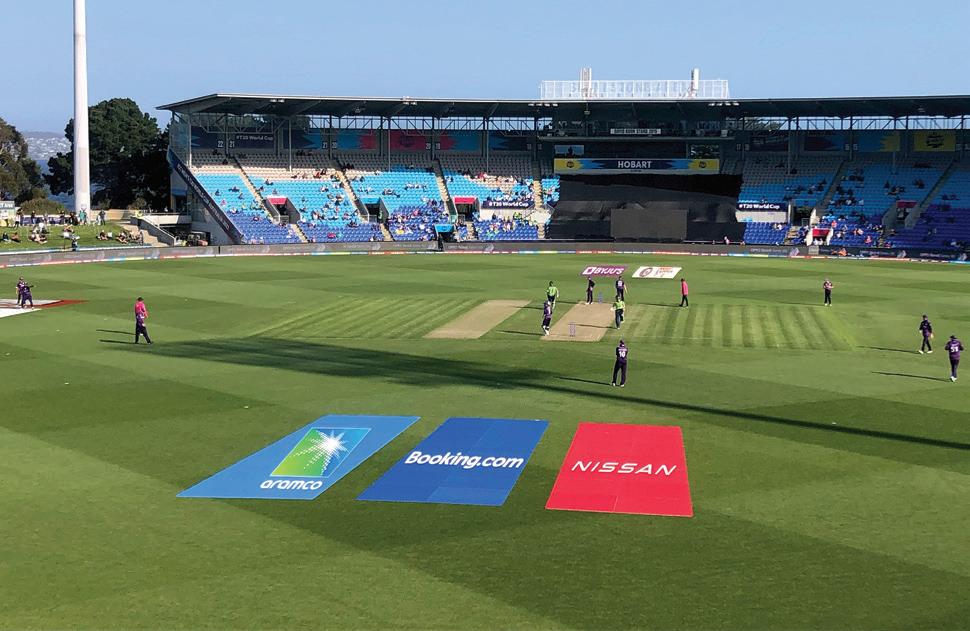
get-togethers are invaluable as it’s a network that they rely on, but more importantly it is a wonderful opportunity for developing curators to tap into the vast knowledge base of some of the best in the business.




Two of those up and coming curators are Kardinia Park duo Liam Kirkman and Joel Ives, who prepared their ground for six T20 World Cup games, including the tournament’s opening match. They have benefited from being in regular contact with their experienced counterparts and knowing that they can ask them anything.
“That’s the great thing about our part of the industry,” says Kirkman. “There’s not many of us cricket curators out there, but the guys that are doing it, especially those at the major venues, are always happy to answer a phone call, text or email from those of us at smaller regional venues if we have any queries. Whether it’s something big or small they’re always happy to assist. The community that exists has an absolute wealth of knowledge and you can ask any question and you’ll get the answers which can help you make the right decisions.”
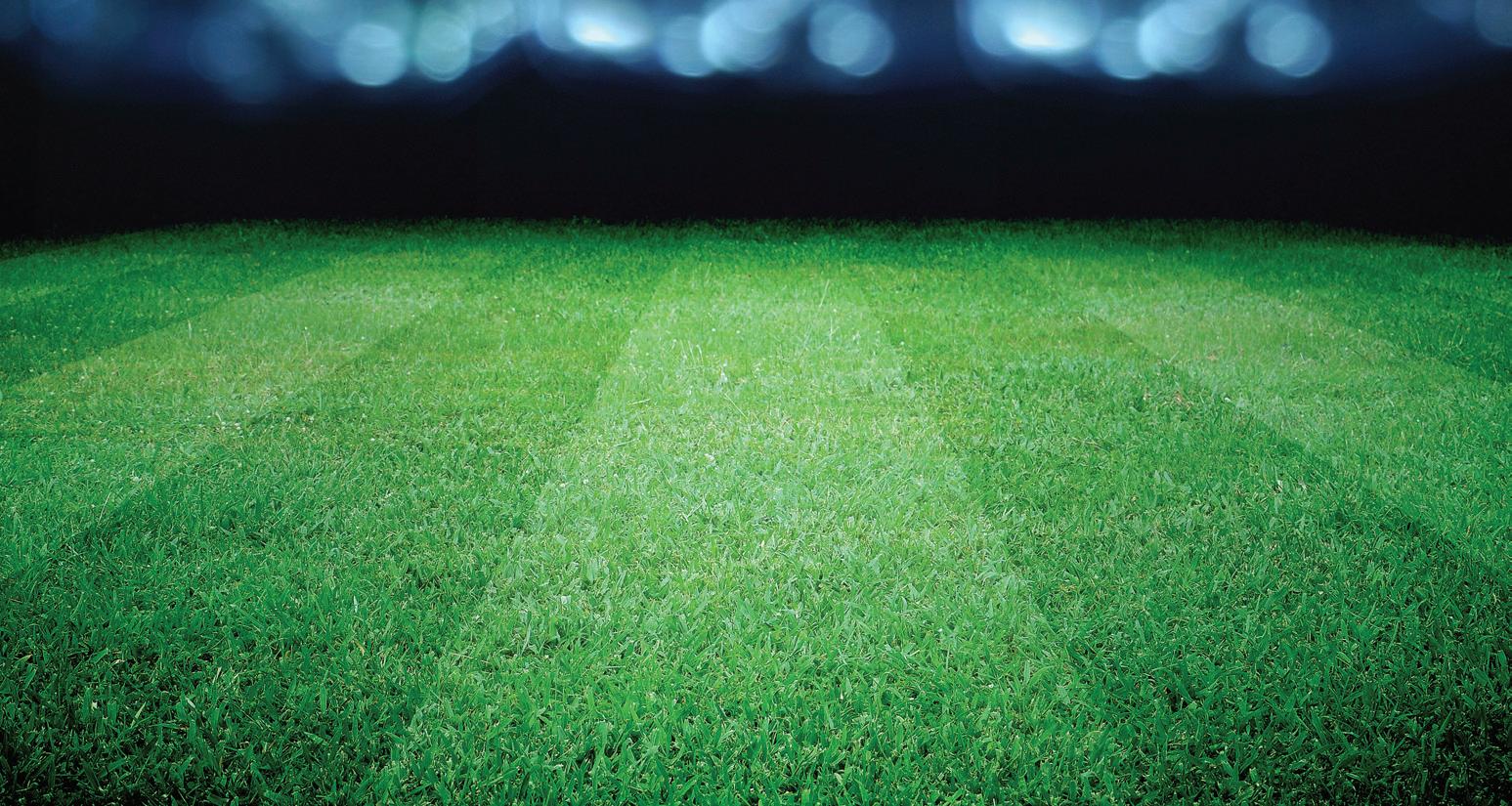
Sums up Roach: “In my opinion Australian curators are the absolute elite. What they deliver is beyond compare to any other group of people that I have dealt with in sport. They have such great pride in their work yet they’re probably the group that gets more heavily impacted by events outside of their control. When you combine those two things it can be enormously frustrating at times, especially when people – whether that’s the coaches, the
players or the public – don’t understand the challenges that they have to come up against.
“Their passion and work ethic has to be seen to be believed. I’ve heard some wonderful stories over the years of curators and their teams going to extraordinary lengths to ensure their facilities are delivered. Whether it’s a Test venue or a smaller domestic ground, they are all equally committed and just a great group of people that I’m lucky to deal with.”
SEPTEMBER-OCTOBER 2022 21
FTMI back
in session
In what will mark the seventh year of the program, the Australian Sports Turf Managers Association (ASTMA) has confirmed 21 up and coming sports turf managers to participate in the 2022 Future Turf Managers’ Initiative (FTMI) which kicks off in early November. Since it was first introduced at the 2016 Australian Turfgrass Conference in Melbourne, the Jacobsen-sponsored FTMI has equipped 140 of Australia’s and New Zealand’s top sports turf management talent with the skills to help progress their careers and take the step up into a management role.
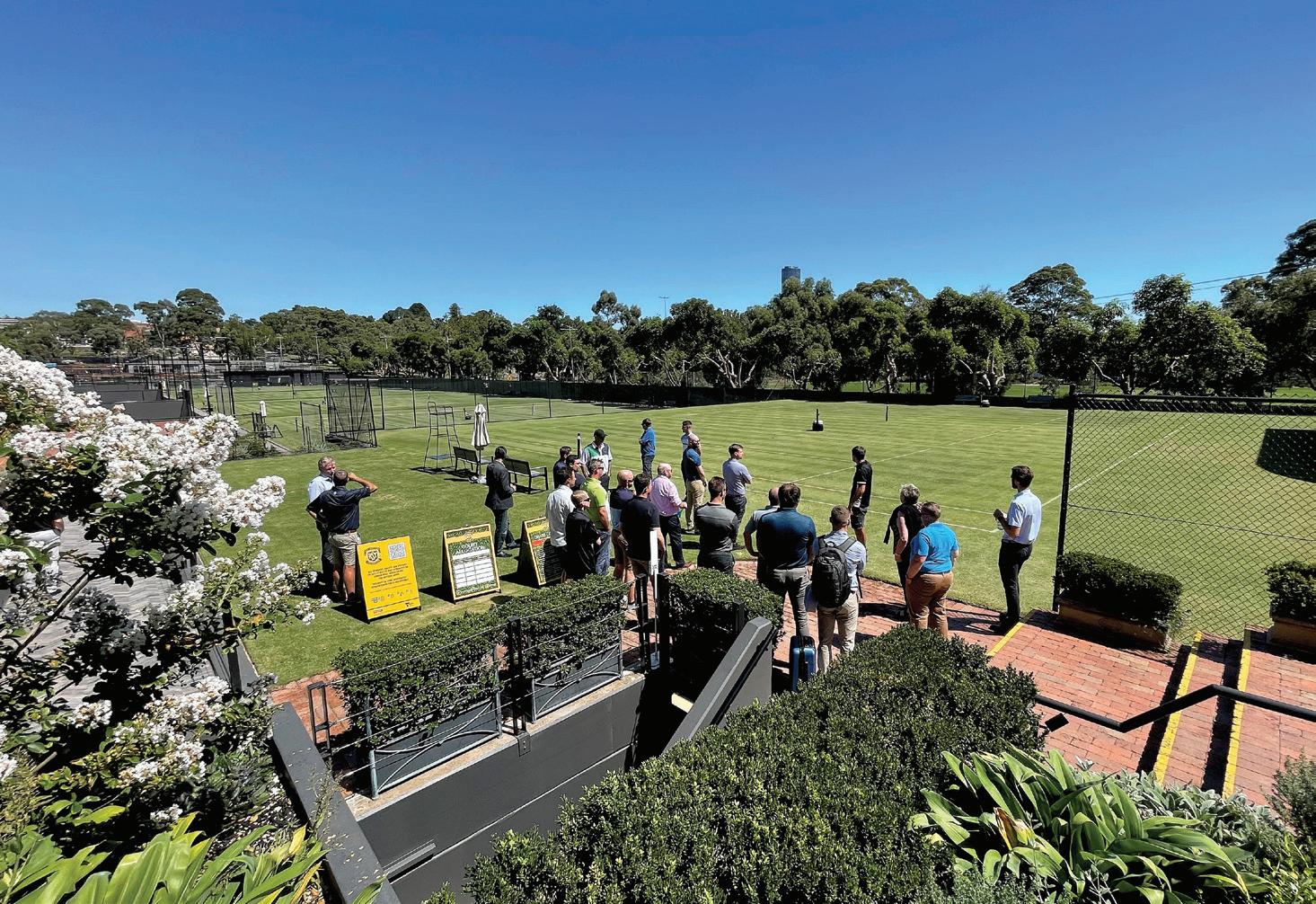
As it was with last year’s program, the 2022 FTMI will be delivered in a hybrid format with online modules starting on Tuesday 8 November. The online sessions will be conducted throughout November, January and February, before the group gathers for a final two-and-a-half-day face-to-face program at Royal South Yarra Lawn Tennis Club (Melbourne) in March 2023. Across those days the group will be involved a series of workshops, seminars and role play activities covering subjects such as communication, budgeting, team management, CV writing and interview techniques, networking and career development.
“The FTMI was a great learning opportunity I hope many get to experience,” says Marlon Johnston, assistant superintendent at The Australian Golf Club and member of last year’s FTMI intake. “The program allowed me to network with peers from all over the country and across several sectors of the turf management industry. Jacobsen and the ASTMA have worked hard to provide emerging industry leaders with a platform to grow and be exposed to the next level in our profession.”
The FTMI Class of 2022 was selected from one of the largest fields of applicants that the ASTMA has received for the program, further highlighting its stature as one of the industry’s most sought after education opportunities. The ASTMA, together with Jacobsen, is delighted to confirm the following participants for 2022: Christopher Baker (Mount Compass GC, SA), Brenden Benad (The Australian GC, NSW), Sam Bennetts (Australian Turf Club, NSW), Craig Chatillon (Maroochy River GC,
Qld), James Correll (Federal GC, ACT), Ben Engels (Queensland Rugby Union, Qld), Matthew Foenander (Keysborough GC, Vic), Thomas Foster (Sorrento GC, Vic), Christopher Hefford (Northbridge GC, NSW), Josh Henry (Melbourne Cricket Club, Vic), Mathew Isbester (Royal Melbourne GC, Vic), Dylan Keam (Bundaberg GC, Qld), Matthew Kelly (Redcliffe GC, Qld), Blair Kennelly (Royal Auckland and Grange GC, NZ), David Meadows (Royal Adelaide GC, SA), Mark Mills (Hastings GC, NZ), Chris Murphy (St Clair GC, NZ), Ryan Schimanski (Prince Alfred College, SA), Bobby Wallace (Barwon Heads GC, Vic), Tim Walsh (Haileybury College, Vic) and Troy Watchorn (Boroondara Council, Vic)
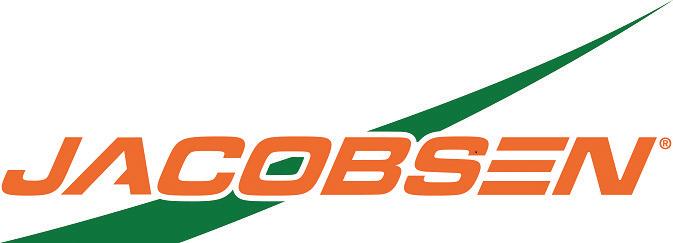
This year’s group will be mentored by four former FTMI graduates in Greg Askew (Lake Macquarie City Council, NSW), Sam Davis (The Hills GC, NZ), Brenton Clarke (Warrnambool GC, Vic) and Liam Ash (Pennant Hills GC, NSW). Clarke and Askew both return for a second year as mentors, while for Ash and Davis it will be their first time on the other side of the table.
Ash was part of the very first FTMI intake in 2016 when he was then assistant superintendent at Monash Country Club in Sydney. He went on to start up his own
22 AUSTRALIAN TURFGRASS MANAGEMENT 24.5 FTMI
ATM profiles the 21 successful applicants who will comprise the Future Turf Managers’ Initiative Class of 2022.
company before returning to golf when appointed as assistant at Pennant Hills. Following the departure of long-serving superintendent Richard Kirkby earlier this year, Ash was promoted to the top role.
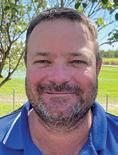
Davis was one of four Kiwis to come across for the 2018 FTMI program and was recently elected to the executive of New Zealand Golf Course Superintendents Association. Davis, who is currently at The Hills in Arrowtown, got into greenkeeping after a promising career as a junior golfer. For five years he played in the Bay of Plenty Interprovincial Men’s team, captaining it for three years and winning the title in 2012. After starting his apprenticeship at Tauranga Golf Club, Davis completed it at The Hills after being offered a role there having volunteered for the 2016 New Zealand Open.
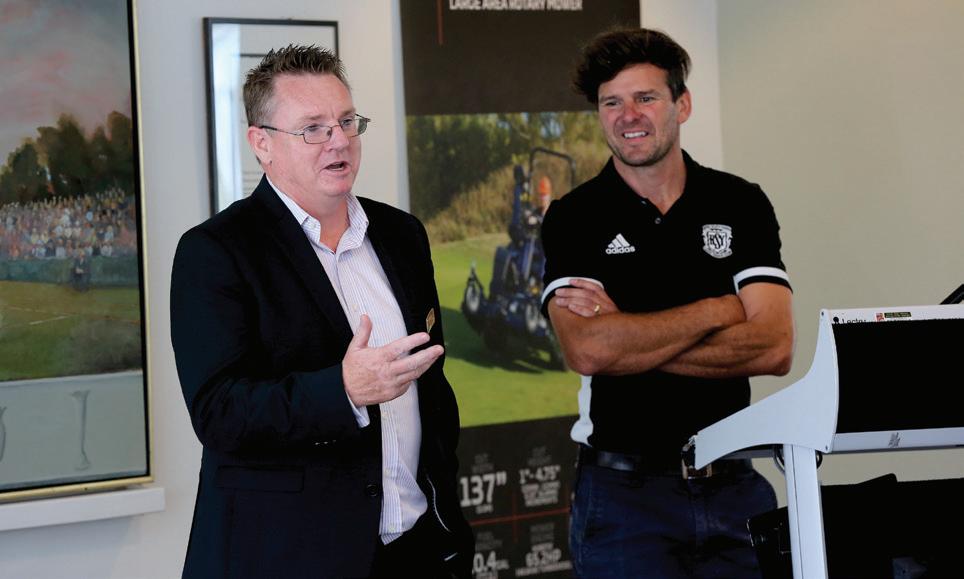
As it does every year ahead of the FTMI, ATM profiles the successful candidates. As you will read, a common denominator among many in this year’s group is the willingness over their careers to challenge themselves and take themselves out of their comfort zone. Doing so again in Melbourne will be…
CHRISTOPHER BAKER
Assistant superintendent, Mount Compass GC, SA
Originally from Devon in the UK, Baker started as an apprentice in 2004 at Padbrook Park Golf Club, a nine-hole parkland course that was extended to 18 holes in the six years he was there. During that time Baker achieved his NVQ Levels 2 and 3 in amenity horticulture – sports turf, before taking on brief stints at Dawlish Warren Golf Club and Exeter University.
In early 2012 Baker and his wife emigrated to Australia, settling in Adelaide where he initially secured a casual role at Kooyonga Golf Club. From there he got a full-time role at The Vines of Reynella, becoming a senior greenkeeper and spray technician under the guidance of long-serving superintendent Rob Millington. In 2019 he undertook the Diploma in Sports Turf Management through Melbourne Polytechnic, graduating in 2021. In March that year he took on the position of assistant superintendent at the picturesque Mount Compass Golf Club south of Adelaide, where he now works alongside a team of five, including two apprentices.
BRENDEN BENAD
Second assistant, The Australian GC, NSW Benad has clocked up 11 years in the industry, a time which has presented many challenges along


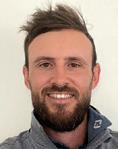

the way but also many rewarding and exciting moments. His tenure thus far has been split between racecourses and golf courses, during which time he has been mentored by some of the country’s leading turf managers including Jason Kerr, Greg Groves, Richard Forsyth and Daniel Cook.
Benad began his apprenticeship with the Melbourne Racing Club at Mornington before taking on a trainee racecourse manager position at Caulfield. In 2017 he switched to golf, working as a senior greenkeeper on the West Course at Royal Melbourne. He returned to Caulfield for three years as track foreman before heading back to Royal Melbourne, this time on the East Course. In March 2022 Benad moved to Sydney after accepting a qualified role at The Australian Golf Club and in August was promoted to second assistant.
SAM BENNETTS
3IC, Australian Turf Club (Rosehill Gardens), NSW Bennetts is currently third in charge at the Rosehill Gardens racecourse in Sydney, recently making the move across from fellow Australian Turf Club facility Royal Randwick. Bennetts got his start in the racing sector at Royal Randwick in 2008 and was there for 13 years prior to his recent shift to Rosehill in a quest to further his leadership opportunities.
Bennetts has always enjoyed being part of a team and the challenge of being a leader, skills which he has developed from playing rugby league and rugby union from a young age. That hobby has seen Bennetts represent the Philippines in both codes, travelling throughout Asia and playing for the national side as a lock forward. Bennetts has recently become a father for the first time and is looking forward to developing his technical and leadership skills while on the FTMI program.
CRAIG CHATILLON
Assistant superintendent, Maroochy River GC, Qld
An avid golfer from a young age, Chatillon grew up in Canberra and during his senior years at school did some work experience at Royal Canberra Golf Club. From this he was offered an apprenticeship and proceeded to work there for nine years, progressing to the role of construction foreman. From there, Chatillon moved to Brisbane where he spent seven years working in commercial irrigation. Travelling all over southeast Queensland, he installed irrigation in sports fields, golf courses, schools and everything in between.
After moving to the Sunshine Coast, Chatillon took up a role at Horton Park Golf Club just a few months before construction started on the new Maroochy River course. Once construction began, Chatillon was based on the new site and played a key role in the irrigation installation. Having now clocked up 10 years at the course, Chatillon has been assistant for the past three years under superintendent and former FTMI graduate and mentor Stuart Campbell.
JAMES CORRELL
Assistant superintendent, Federal GC, ACT Correll began his apprenticeship at Federal Golf Club in Canberra which he completed in 2020 and was duly nominated as the ACT representative for the ASTMA Graduate of the Year Award. After staying on as a qualified greenkeeper until July 2021, he was then appointed assistant superintendent at Queanbeyan Golf Club. Following a short stay there, he was offered a site manager role with Green Options looking after the grounds of the Australian War Memorial, Canberra Raiders Centre
SEPTEMBER-OCTOBER 2022 23
The 2022 FTMI will again conclude with a face-to-face gathering of participants at the Royal South Yarra Lawn Tennis Club next March
Royal South Yarra Lawn Tennis Club general manager Stewart Fenton (left) and head curator Ant Lewis (right) present during the FTMI program earlier this year
of Excellence and a top grade Australian Rules football oval for Ainslie Football Club. During that time he was part of ANZAC Day preparations at the Australian War Memorial which was a very rewarding experience.
Correll found himself moving back to where it all began after recently being appointed assistant superintendent at Federal. The next couple of years are set to busy, with the club about to embark on a major course redevelopment. Correll will also have his hands full on the home front after he and his wife recently welcomed twin girls to the family.
BEN ENGELS
Head groundsman, QRU
Growing up on a dairy farm in New Zealand, Engels started an apprenticeship at Cambridge Golf Club in early 2017 under superintendent Kevin Brown. Once industry qualified he further honed his skills at The Hills Golf Club in Arrowtown and also did volunteer work at Waikato Stadium (Hamilton), Eden Park (Auckland) and the local rugby fields in his home town of Putaruru.
Engels also volunteered at the 2019 Rugby World Cup in Japan and while there was offered a junior agronomist role with Brisbanebased Labosport by Dr Keith McAuliffe. Starting that role in January 2021, Engles has since moved on to be head groundsman at Ballymore Stadium in Brisbane for the Queensland Rugby Union. Alongside his fulltime role there he also fills in as a casual at Suncorp Stadium and the Gabba.
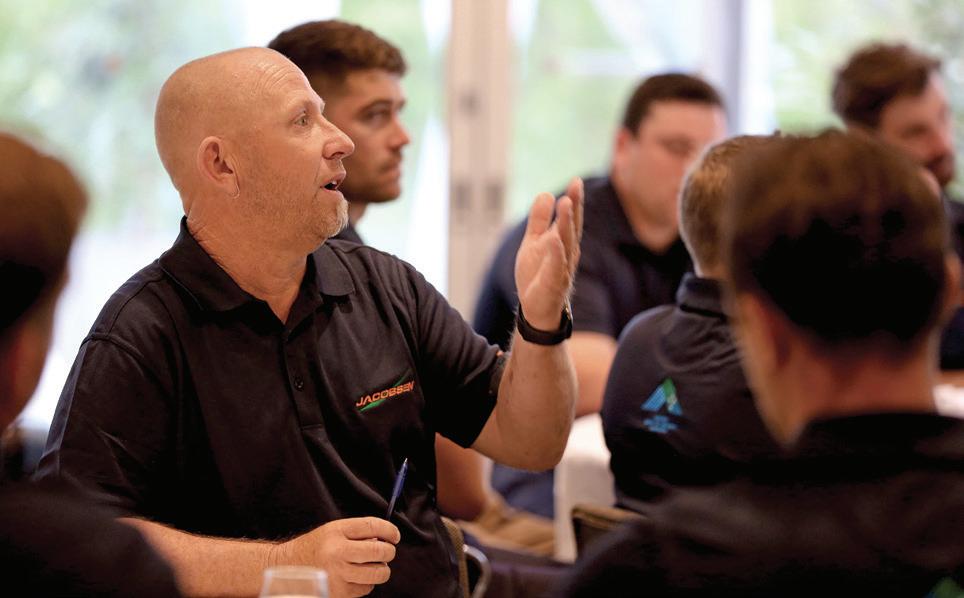
MATTHEW FOENANDER
Assistant superintendent, Keysborough GC, Vic Foenander started his career at Capital Golf Club as a turf apprentice in 2010 under the
Victoria and Kingston Heath golf clubs and in November will also embark on a Bachelor of Business degree through Swinburne University.
CHRIS HEFFORD
Senior greenkeeper, Northbridge GC, NSW Hefford has been at Northbridge Golf Club in Sydney’s inner northern suburbs for the past 16 years. He became a greenkeeper after being part of a bush regeneration project and realising that he found working outdoors and being able to step back and appreciate what he had accomplished very rewarding. During his time at Northbridge, under longserving superintendent Malcom Harris, Hefford has enjoyed being part of various projects, including the construction of the course’s dam, greens construction and the creation of endemic bushland.
watchful eye of long-time superintendent Graeme Rogers. After spending over eight years honing his skills and moving through the ranks, Foenander stepped away from sports turf for a period to work as an account manager overseeing horticultural sites throughout Victoria.
After gaining valuable experience as a leader in this role, he returned to golf and is currently assistant superintendent at Keysborough Golf Club in Melbourne under superintendent Nick Launer, a former FTMI graduate in 2017. Among some of his career highlights to date include volunteering on the ground staff at the USPGA Tour’s John Deere Classic in Chicago and the 2016 Australian Open at Royal Sydney Golf Club.


TOM FOSTER
Assistant superintendent, Sorrento GC, Vic Originally from Newborough in southeast Victoria, 35-year-old father of three Foster started an apprenticeship with DM Pro-Turf which had a number of bowling green, renovation and construction contracts across the Latrobe Valley. Once completing his apprenticeship, Foster went out on his own, maintaining a couple of bowling clubs, a golf club and the local cemetery. It was during this time that he transitioned more into golf, working as superintendent at Moe Golf Club for five years.
With the family moving to the Mornington Peninsula, Foster spent 18 months as foreman at Portsea Golf Club before moving down the road to Sorrento Golf Club where he has been for the past five years. Under superintendent Shane Greenhill, Foster started as foreman and was recently promoted to assistant superintendent. He has been selected as a course volunteer for the upcoming ISPS Handa Australian Open being jointly hosted by
JOSH HENRY
Turf supervisor, Melbourne Cricket Club, Vic
A keen cricketer, Henry initially started out as an apprentice at Box Hill Golf Club in Melbourne’s eastern suburbs. In 2014 a job arose at Etihad Stadium for a second or third year apprentice and with the blessing of Box Hill he transferred across and since then hasn’t looked back. Henry was soon curating Big Bash League pitches and being involved in world-class sporting events and concerts held on the arena surface. During this time he also took on a role at North Balwyn Cricket Club as their head curator outside of work hours.
In 2017 Henry headed to the UK, playing cricket and curating for a club near Manchester while also working days at Hazel Grove Golf Club. Upon returning to Melbourne he set himself up to curate for three local clubs before a position opened up with the Melbourne Cricket Club (MCC).

Starting as a turf groundsperson at the Albert ground in St Kilda, Henry has progressed to be turf supervisor at Beaumaris Secondary College which the MCC oversees. Henry curates the turf pitches there and in the 2021/2022 season the two Beaumaris ovals were ranked first and second in the 3rd and 4th XI grounds category of the Victorian Premier Cricket Awards. Henry is also involved in major events at the MCC’s other venues, among them the MCG, and this summer will notch up five years with the organisation.
MATHEW ISBESTER
East Course assistant, Royal Melbourne GC, Vic Isbester has been in the turf industry for 14 years, also undertaking his apprenticeship
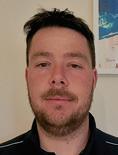
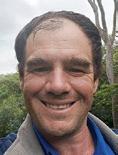

24 AUSTRALIAN TURFGRASS MANAGEMENT 24.5 FTMI
The FTMI allows sports turf managers from across all sectors of the industry to network, learn and share ideas
at Box Hill Golf Club. Once completed he headed to the US to take part in The Ohio Program where he spent 12 months working at Liberty National Golf Club in New Jersey. In that time he was involved in a major course reconstruction project as well as being able to work at the Northern Trust Championship at Riviera Country Club.
After returning home, Isbester picked up a qualified role on the West Course at Royal Melbourne Golf Club. After a few years he was promoted to water foreman in charge of the club’s large water treatment plant which is used to treat storm and bore water for irrigation. Isbester was part of the Royal Melbourne crew for the 2019 Presidents Cup and most recently has moved into a management role working alongside East Course superintendent Nic Staff.
DYLAN KEAM
Superintendent, Bundaberg GC, Qld
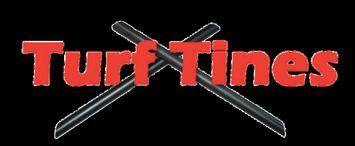
Keam’s turf management career began in 2008 at Club Barham Golf Resort on the Murray River. Taking on an apprenticeship, the club’s 18-hole golf course, lawn bowls rinks and grass tennis courts provided him with a solid turf management grounding. In 2012 he moved to Queensland as assistant superintendent at Coral Cove Golf Club, situated 20 minutes outside of Bundaberg on the coast.
At the beginning of 2017 Keam moved across to nearby Bargara Golf Club before joining Bundaberg Golf Club as an assistant superintendent. Working under former superintendent Sean Stuchbery, Keam was promoted to the top role after Stuchbery decided to move on in late 2019.
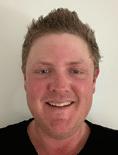
MATTHEW KELLY
Assistant superintendent, Redcliffe GC, Qld Greenkeeping runs in the family so it was no surprise that Kelly ended up taking on an
apprenticeship at Brisbane Golf Club where he would ultimately find his passion for turf. The following six years saw Kelly take on roles at Golf Central Brisbane, Indooroopilly, Brookwater and Royal Queensland before eventually landing his current position at Redcliffe Golf Club. Each of these courses challenged Kelly in different ways and helped instil the skills that he would need to take on the role of assistant superintendent at Redcliffe.
BLAIR KENNELLY
Foreman, Royal Auckland and Grange GC, NZ
Doing things that produce tangible results that are measurable and aesthetically pleasing is something that has always interested Kennelly. This, along with the hands-on nature of greenkeeping and being in an outdoor setting, piqued
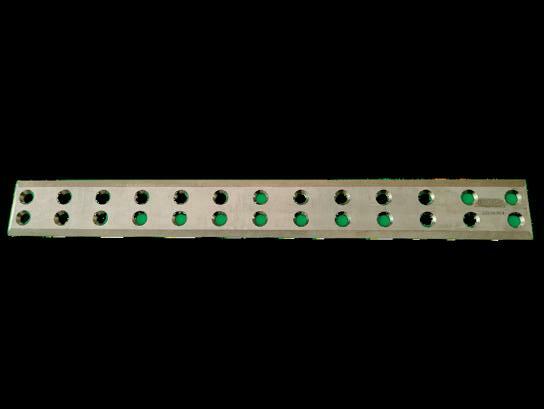
Kennelly’s interest in turf management and sparked a change of career several years ago. After 13 years in the New Zealand Defence Force, Kennelly took on an apprenticeship at Windross Farm Golf Course in south Auckland. Under superintendent David Smith, Kennelly was exposed to the work ethic, attention to detail and turf husbandry skills required to present a high-quality golf course.
With those fundamental skills developed, an opportunity then arose at Royal Auckland and Grange Golf Club (RAGGC) which recently underwent a major redevelopment following the amalgamation of two clubs. Working under the tutelage of director of agronomy Mark Hooker, Kennelly is relishing the opportunity to work with a larger team and delivering exceptional playing surfaces across the worldclass 27-hole facility.
DAVID MEADOWS
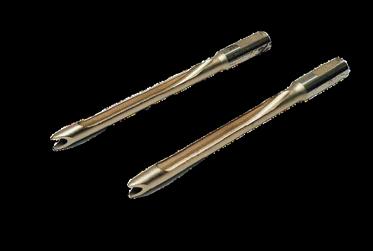
Foreman, The Royal Adelaide GC, SA
After spending 13 years in hospitality, it was Meadows’ passion for the game of golf and love for the outdoors that saw him switch to a career in greenkeeping. Despite being a late starter, Meadows couldn’t have wished to land at a better place, taking on an apprenticeship at Royal Adelaide Golf Club in 2015.
Over the years Meadows has been part of a team that has prepared the course for two Women’s Australian Opens (2017 and 2020) and in 2019 had the opportunity to volunteer at Royal Melbourne Golf Club for the Presidents Cup. Meadows’ desire to grow, learn and continually improve was rewarded in 2021 when he was appointed Royal Adelaide foreman.

MARK MILLS

Assistant superintendent, Hastings GC, NZ Mills’ story began in the south of England where, in 1997, he qualified as a golf professional
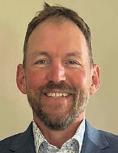

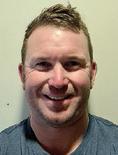
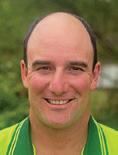
R E L I A B L E A N D F A S T S U P P L Y S U P P O R T I N G O U R A S T M A M E M B E R S A C R O S S A L L I N D U S T R I E S S I N C E 2 0 0 6 I N S T O C K 2 4 / 7 O N L I N E W I D E R A N G E I N D U S T R Y D I R E C T A U S T R A L I A / N Z B E D K
N I
V E S ,
H O
L L
O W C O R E T I N
E S , S C
A R I
F Y I N G B L A D E S - M O S T M O D E L S PATENTED REVERSIBLE GREENS BLADES E L I Z A 0 4 1 9 1 3 8 4 8 9 N I C K 0 4 0 4 8 3 9 2 3 6 E M A I L S A L E S @ T I N E S . C O M . A U W W W . T I N E S . C O M . A U
2022 FTMI participant David Meadows (right) was part of a major volunteer corps which helped prepare Royal Melbourne for the 2019 Presidents Cup
through the Professional Golfers’ Association. In 2000 he married a New Zealander and in 2002 they emigrated to New Zealand with their six-month-old son. Landing a job as a golf coach at Hastings Golf Club, in 2012 Mills decided to venture down a different path and started a career in greenkeeping. After 12 months he was encouraged by his superintendent to do his Level 4 NZQA Diploma in Sports Turf Management and was duly awarded Graduate of the Year honours in 2016. In 2020 Mills was promoted to assistant superintendent at Hastings, a role he has held ever since.
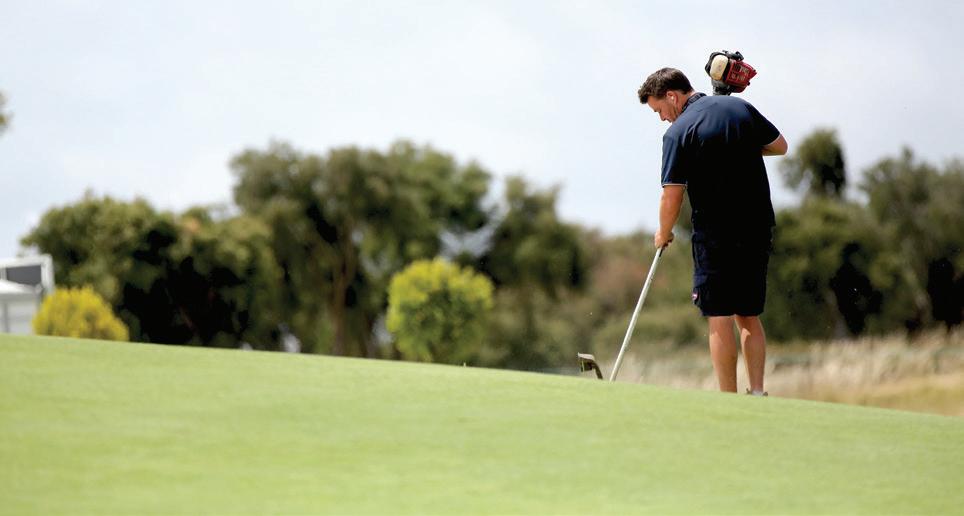
CHRIS MURPHY
Superintendent, St Clair GC, NZ
Another of the Kiwi FTMI contingent to hail from a farming background, Murphy studied turf management in Otago after which he landed a six-week job working alongside well-known NZ curator Karl Johnson for the Women’s Cricket World Cup. From there he secured a job at the soon-to-be-opened Clearwater Resort in Christchurch where he got to experience all facets of course management, from construction and grow-in through to preparing the course for various NZ PGA Championships and NZ Opens.
After six years at Clearwater, where he progressed to be assistant, Murphy took on the sole charge role at Pleasant Point Golf Club in South Canterbury. Going from a facility that had 11 staff to just himself and an army of volunteers was a huge change but one he really enjoyed. Murphy would spend 14 years there during which time he was also volunteer groundsman for the local cricket club.
In 2021, Murphy headed to Dunedin to take on the superintendent role at St Clair Golf Club. This has proven again to be a huge change for Murphy as he is now in charge of two full-time staff and managing a course that experiences some pretty harsh weather due its location on the coastal cliffs above south Dunedin.
RYAN SCHIMANSKI
Head curator, Prince Alfred College, SA

Schimanski has been in the turf industry since 2013 after working in a different trade for eight years. He started as part of the grounds team at a college in the Northern Territory where he was tasked with the role of curating the wicket square. During that time he enjoyed learning about cricket pitch preparation and the challenge that came with having a specialised role within the team. With that experience under his belt, Schimanski was offered a position at NT Cricket as an assistant curator. Over the following three years he gained invaluable experience in pitch preparation and sports field management at one of NT’s premier facilities.
Wanting to return to his home state of South Australia, Schimanski landed the head curator role at Prince Alfred College in Adelaide’s eastern suburbs. He thoroughly enjoys and is very passionate about sports turf management, especially the challenges and complexities of cricket pitch preparation.
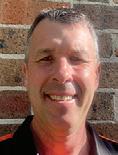



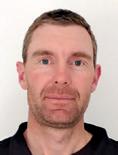
BOBBY WALLACE
Assistant superintendent, Barwon Heads GC, Vic Wallace’s turf management career began in 2005 as an apprentice at Barwon Heads Golf Club under ASTMA Distinguished Service Award recipient Peter Frewin. During this time the course hosted the Australian Boys Amateur Championship and the Clare Higson Trophy held between the Australian and New Zealand junior teams. In 2013 Wallace became foreman and during this time completed his Diploma.
Barwon Heads underwent a major course development plan (CDP) implemented by Crafter and Mogford + Golf Strategies. The CDP included major architectural changes, new bunkering, greens resurfacing, irrigation and vegetation clearing. Wallace was involved in these major works under the guidance of
former superintendent Adam Lamb which he rates as a great learning experience. Wallace is currently assistant under new superintendent Craig Molloy, with the club recently approving a new course enhancement plan while also planning for a full clubhouse redevelopment.
TIM WALSH
Curator, Haileybury College, Vic A love for all sport, but cricket in particular, drove Walsh to pursue a career in sports turf management. He initially took on an apprenticeship at Yarra Valley Country Club in Melbourne under Glenn Miller. After two years there he applied for an apprenticeship position at Royal Melbourne Golf Club. Despite being unsuccessful in that application, his resume was passed onto Huntingdale Golf Club superintendent Michael Freeman who duly employed him.
After spending four years at Huntingdale, Walsh was finally given the opportunity to realise his dream of becoming a curator when a position was advertised at Haileybury College. Under the guidance of respected curator Stephen West, Walsh has now been at the private school for the past six years.
TROY WATCHORN
City of Boroondara, Vic Growing up in Leongatha, Watchorn moved to Melbourne to study parks and gardens at Burnley at the age of 18. After doing work experience at Huntingdale Golf Club, he was offered a job by then assistant superintendent Michael Freeman. Watchorn completed both his apprenticeship and Diploma under Huntingdale superintendent John Spencer and over that period worked 12 Australian Masters when the course perennially hosted the tournament. Watchorn also had the opportunity to work overseas for three years, taking up placements at five different courses in Ireland and the UK, including six months at Carnoustie in Scotland.
Prior to his current role, Watchorn was employed at Yarra Bend Golf Course. Working with a young and dedicated staff, there were many changes during his six years at one of Melbourne’s busiest public access courses. Six months ago Watchorn moved into a new role with the City of Boroondara where he works across a range of council sports grounds and turf facilities in Melbourne’s inner eastern suburbs, among them Freeway Golf Course which is currently being redeveloped.
26 AUSTRALIAN TURFGRASS MANAGEMENT 24.5 FTMI
After spending 12 months on The Ohio Program, Matthew Isbester joined the Royal Melbourne crew and is now working on the East Course
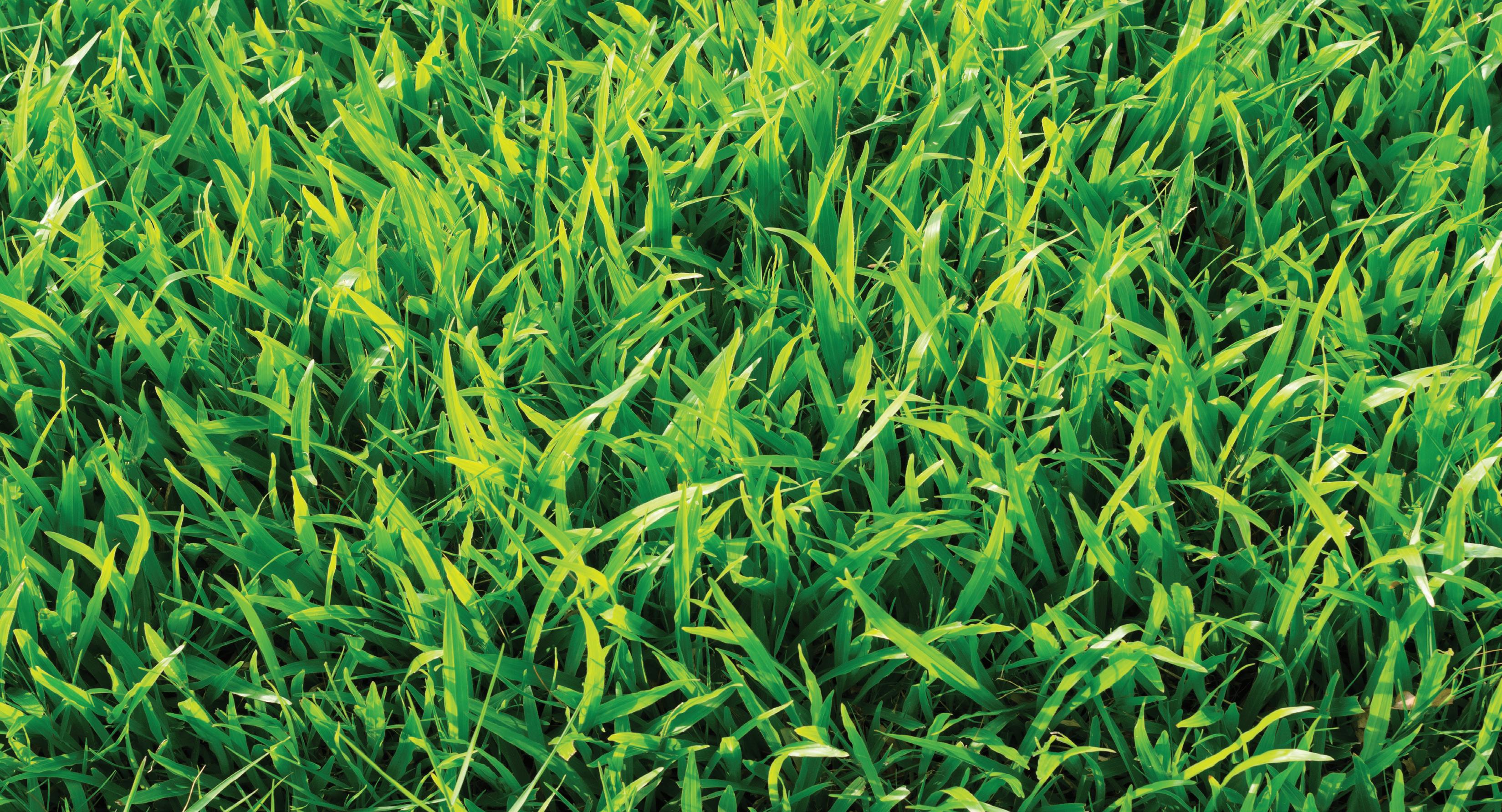
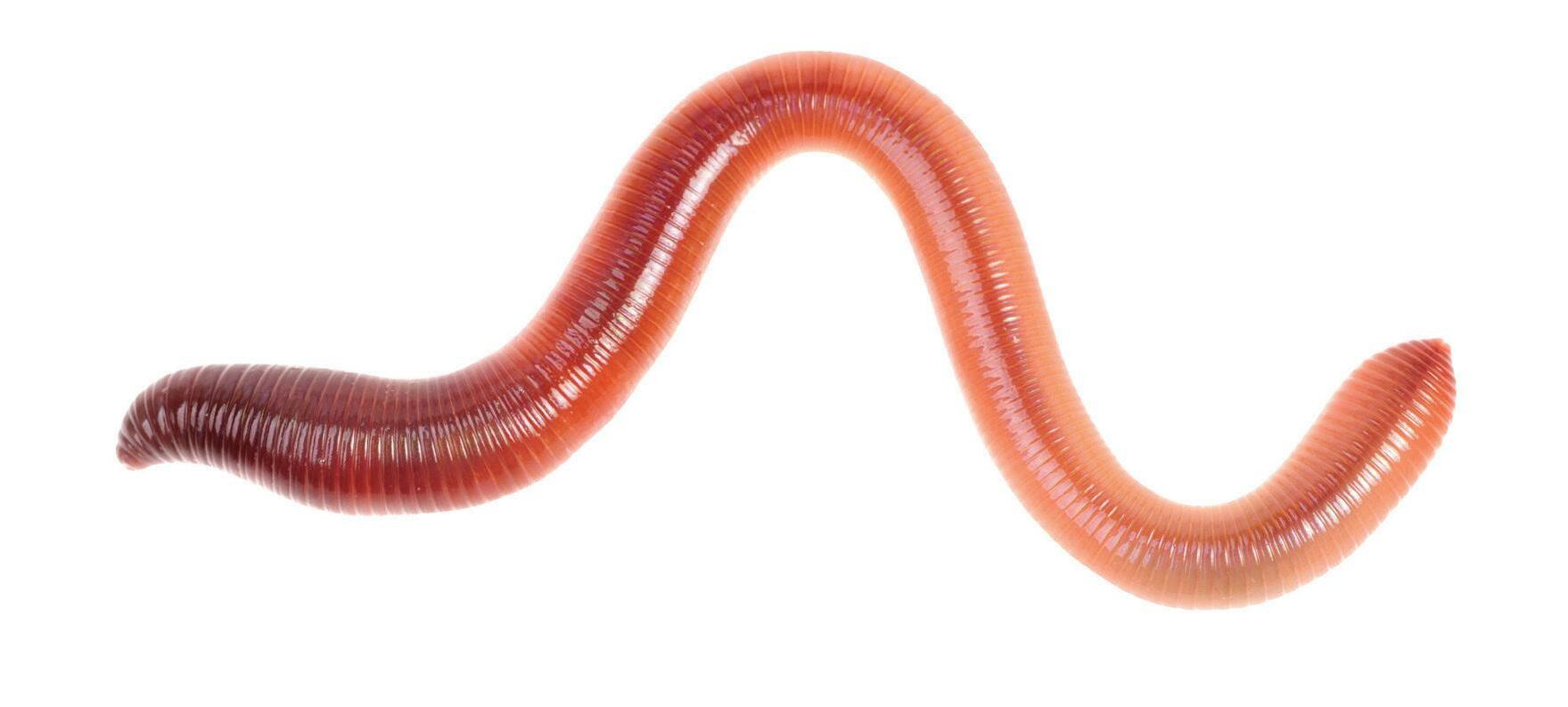












new groundShowdown crew break
“Animportant moment for women in the turf industry.”
That was how Brooke Francis, Adelaide Oval’s sole female groundsperson, summed up the opportunity she and four fellow female sports turf managers had to prepare the ground for September’s inaugural AFLW Showdown between Port Adelaide and Adelaide.
Francis, who has been part of the 10-strong Adelaide Oval ground crew for the past four years, took charge of preparations for the week, leading a crack team of female turf managers who had journeyed from across the country to be part of a volunteer
work placement program organised by the Australian Sports Turf Managers Association (ASTMA). Mirroring the historic nature of the first AFLW Showdown match, Francis led the first all-female grounds team to curate the hallowed turf of Adelaide Oval, showcasing their skills in front of a crowd of more than 20,600.
The Adelaide Oval work placement program was the first as part of the ASTMA’s recently launched Women in Turf Strategy which aims to increase the representation of women in the sports turf management industry. As was written in the last edition of Australian Turfgrass Management Journal (‘Breaking the grass ceiling’ – ATM Volume 24.4), females
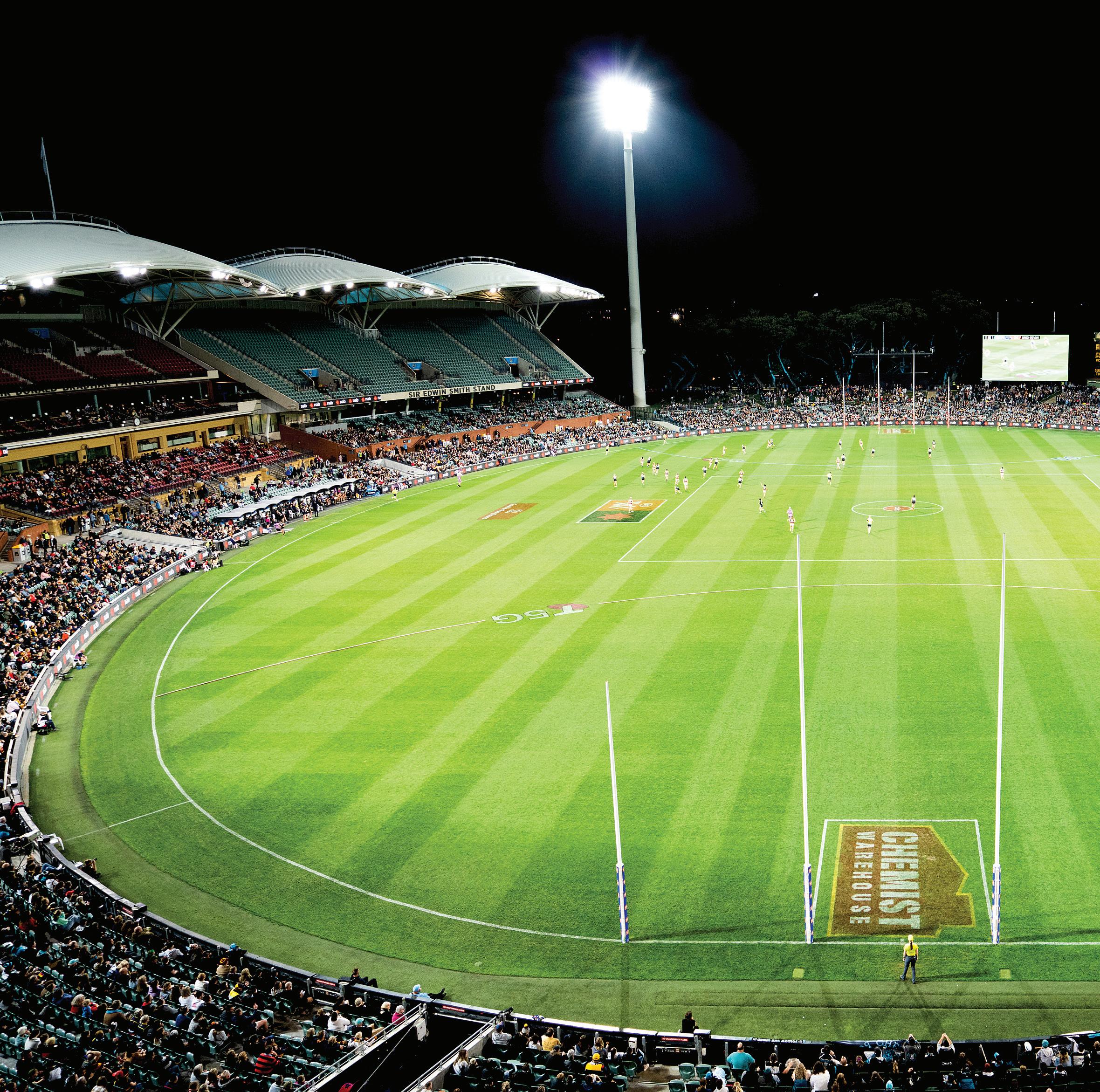
28 AUSTRALIAN TURFGRASS MANAGEMENT 24.5 WOMEN IN TURF
An all-female ground crew helped prepare Adelaide Oval for the inaugural AFL Women’s Showdown match between Port Adelaide and Adelaide in late September.
account for just 1.4 per cent of the Australian turf industry workforce. The strategy hopes to redress that imbalance through a range of initiatives designed to not only support those already in the profession but to promote it and encourage more females to consider it as a career option.
“It was an incredible moment for women’s sport, but it was also an important moment for women in the turf industry,” reflects Francis of the experience. “Being a part of the first ever
It was the first time that an all-female grounds team had the opportunity to curate the hallowed turf of Adelaide Oval, coinciding perfectly with the historic inaugural AFLW Showdown between Port Adelaide and Adelaide in front of more than 20,000 spectators
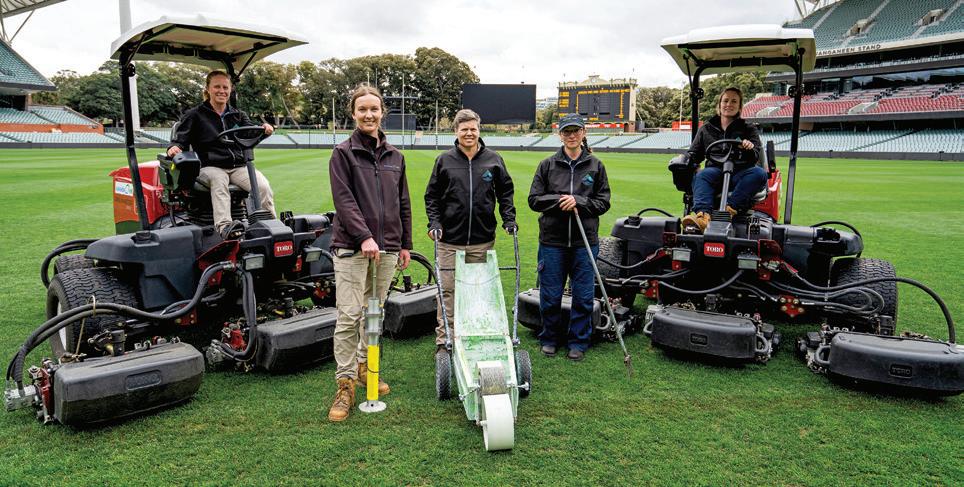

AFLW Showdown was exciting, but leading a female grounds team made it all the more memorable.
“It was great to be supported by four wonderful women as part of the initiative. All arrived eager to learn and were excited about the opportunity – not only to experience first-hand what goes into preparing the Adelaide Oval surface, but also to make new connections in the industry and, of course, be able to contribute to an historic game.
“It’s great to see the industry creating new opportunities for women and I’m proud that Adelaide Oval continues to play a key role. When I joined the Adelaide Oval team in 2019 I was the first ever female groundsperson, but I certainly won’t be the last.”
GAME ON
The ASTMA called for applications for the Adelaide Oval work placement in early September, with a strong number received from across the country and different sectors of the turf industry. The four who were ultimately chosen included groundsperson Fiona Pringle-Jones from Adelaide’s Pembroke School, second year Hawks Nest Golf Club apprentice Melissa Mills, fourth year Royal Sydney Golf Club apprentice Lisa Burley and City of Ballarat groundsperson Jayde Robson, a former finalist in the 2020 STA Sports Turf Graduate of the Year Award.
“The ASTMA was completely overwhelmed by the level of interest and calibre of applications for this inaugural work experience program,” says ASTMA chief executive Mark Unwin. “It was a challenge to select the four successful candidates from a wide range of experienced turf managers and emerging talent from all areas of the industry and all parts of the country.”
SEPTEMBER-OCTOBER 2022 29
PHOTOS: TRISTAN LINTERN (ADELAIDE OVAL)
Assisting Adelaide Oval’s Brooke Francis (second from left) for the AFLW Showdown were (from left) volunteers Lisa Burley (Royal Sydney GC), Fiona Pringle-Jones (Pembroke School), Melissa Mills (Hawks Nest GC) and Jayde Robson (City of Ballarat)
The quartet arrived at Adelaide Oval the Wednesday ahead of the match where they were met by head curator Damian Hough, assistant curator Pete Foreman and Francis. After inductions and familiarisation of the site, including a tour of the Oval precinct and meeting with the ground and stadium management teams, the group discussed what the week would look like in terms of preparations.
In addition to the match itself on the Friday night, there were two AFLW training runs on Wednesday and Thursday evenings. They were charged with all aspects of oval preparation including mowing, line-marking, benchmarking (Clegg Hammer readings) and repairing the ground post-training and during the match itself. The group also got the opportunity on the morning of the match to do the Adelaide Oval roof climb.
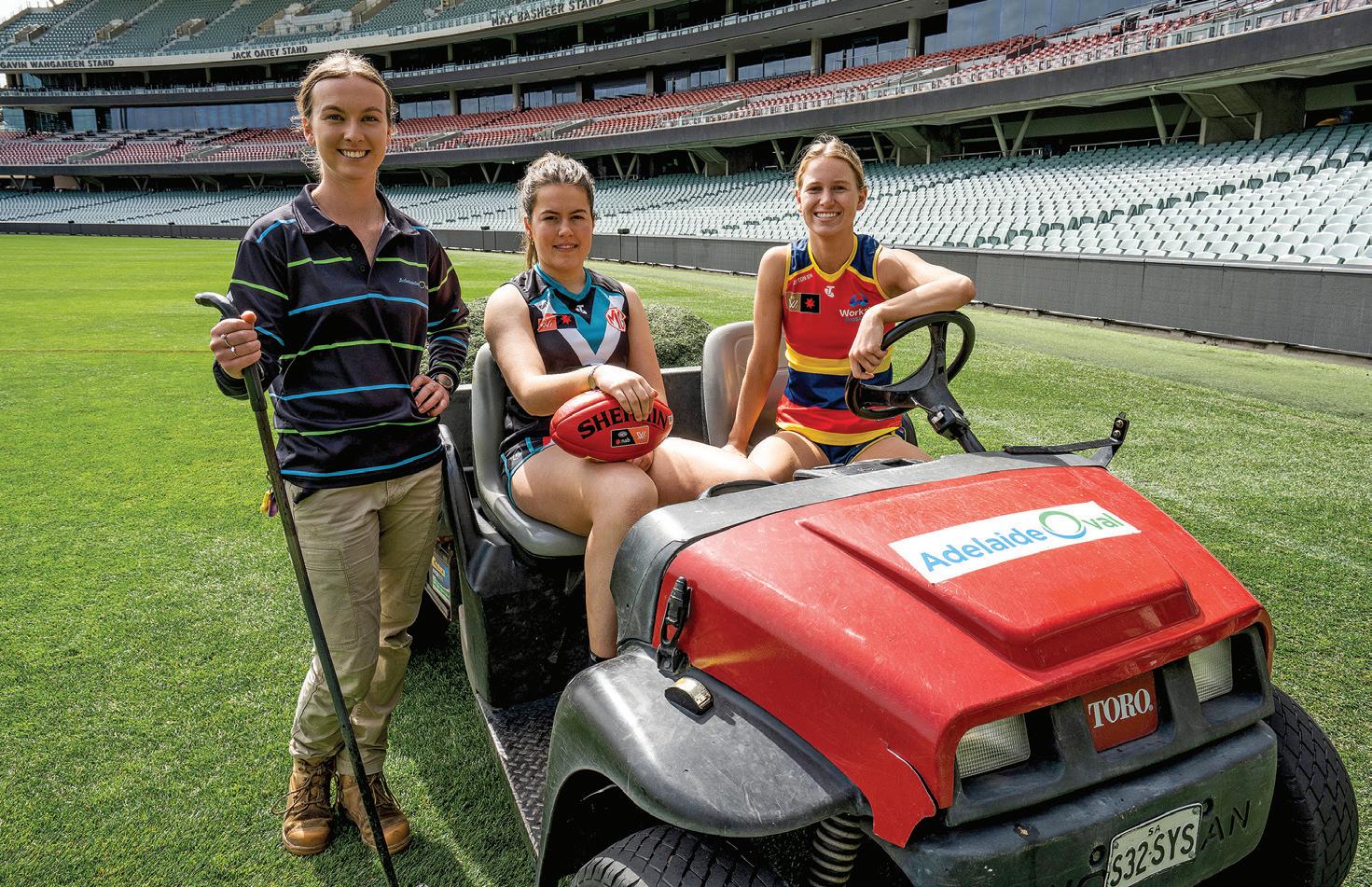
“From our side it was all about supporting and educating them as to why and how we do things here at Adelaide Oval and to give them the full experience of what it is like to work here,” says Hough, who has been an ASTMA Board member since 2020. “It was important for us that it was a rewarding and worthwhile experience and that they’d all walk away with positive memories.
“We wanted them to feel comfortable doing everything – whether that was mowing, line-marking and presenting not just the oval
for the game but all the other areas that we are responsible for on game day, like the Northern Mound Terrace and the gardens.
“And they brought the sunshine with them which was great. We’d had a pretty average run with the weather, so it was nice to have a few good days and give them the opportunity to shine out on the oval.”
FRANCIS TO THE FORE
In his role as an ASTMA Board director, Hough knew that when the association launched its Women in Turf Strategy at this year’s Melbourne conference he was in a unique position to help drive it.
With Port Adelaide entering the AFLW competition for the first time in 2022 and with it a new chapter in the city’s famous Showdown rivalry, it was a perfect opportunity to also promote the ASTMA’s work experience initiative. In Francis he had an exemplary member of staff who he could see benefitting immensely from it and after discussing it with her the wheels were put in motion. Over a few weeks it all came together and the feedback from everyone involved has been resoundingly positive.
“We effectively handed the reins over to Brooke,” explains Hough. “Before we announced it, we sat down with her and made sure she was comfortable in doing this, as it was all new to her. We left it to her to plan
what the week would look like, even down to determining things like the pattern cut on the playing surface.
“We’re fortunate that Brooke has been part of the crew for four years now and has been a really good employee. So to be able to let her run things out on the oval, with Pete and I there to provide support in the background, it was really encouraging to allow her that opportunity. And she passed with flying colours. For somebody who was probably a bit anxious about it and leading a team, the sense of pride and satisfaction and the growth that she showed was very clear to see.
“From our end it was a huge success. We couldn’t be happier to be involved and the four women who came over were outstanding and the feedback from them and Brooke was brilliant. It was one of those really satisfying and rewarding programs to be involved with and the support and recognition it got was fantastic. I don’t think it could have gone any better.
“As I said to Brooke afterwards, what will really bring it home is when we get a work experience student that comes through and says she saw this on TV and it triggered something in her to pursue a career in turf management. Hopefully we’ll look back on this event in years to come as one of the drivers to help facilitate more women getting into the industry.”
30 AUSTRALIAN TURFGRASS MANAGEMENT 24.5
WOMEN IN TURF
As well as leading the all-female crew and overseeing ground preparations for the inaugural Showdown, Francis (left) had plenty of media commitments to attend to. Among them was a photoshoot with AFLW players Alex Ballard (Port Adelaide) and Teah Charlton (Adelaide) for an article in the Adelaide Advertiser
MEDIA SPOTLIGHT
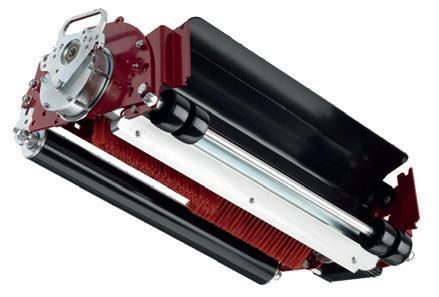
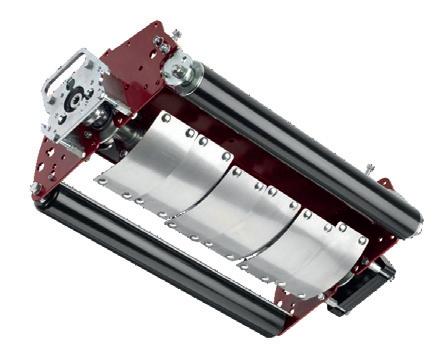
From an awareness perspective, the whole initiative generated some fantastic media coverage across a variety of platforms. Due to the historic nature of the match and the tie-in with the ground being prepared by an all-female crew, Adelaide’s major media outlets supported in kind with Francis taking a starring role.
The Adelaide Advertiser, the city’s primary daily newspaper, included a major piece in its Sports section on 14 September. Under the headline ‘Groundbreakers’, Francis was photographed with AFLW players Alex Ballard (Port Adelaide) and Teah Charlton (Adelaide) and together with Hough was quoted throughout the article written by journalist Liz Walsh. Adelaide’s primary television news stations – ABC, Channel 7, Channel 9 and Ten – all carried items in their prime time news bulletins, including interviews with Francis and Pringle-Jones.
Francis was also featured in a five-minute segment on ABC Radio Adelaide’s Breakfast show where presenters Stacey Lee and Nikolai Beilharz questioned her about the Showdown initiative, her role at Adelaide Oval and what it’s like to be in the turf industry.
“Give it a go,” Francis espoused when asked what advice she would give to any aspiring turfies listening. “The turf industry is very broad – you can work on racecourses, stadiums, golf courses. If you have a passion for sport, turf or landscaping just give it a go. It’s a great industry to be in and I hope to see more girls in it soon.”
Adds Hough: “There was a fair bit of media interest that they had to contend with which was a new experience for them all. Adelaide Oval management really wanted to promote what was happening, especially
given the significance of the game, so we had newspapers and TV networks here interviewing them. It took them a little out of their comfort zone but they all spoke so well and really got the message across that turf management is a fantastic career opportunity for women.”
CAREER HIGHLIGHTS

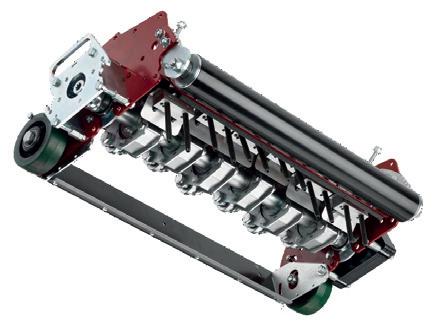
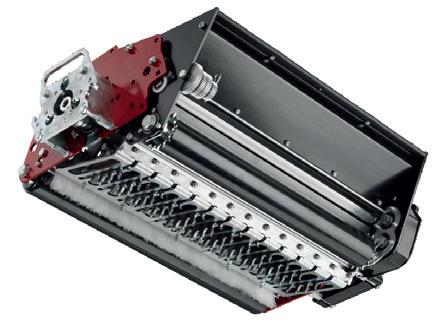
As well as providing Francis the opportunity to lead a team on her home turf for the first time, all four volunteers who made the journey also took away plenty of positives from their time at Adelaide Oval. Robson, who is in the final stages of her Diploma in Sports Turf Management, says the opportunity to spend a few days alongside other passionate female sports turf managers was extremely rewarding.

“The whole team at Adelaide Oval couldn’t have been more welcoming,” says Robson. “Both Brooke and Damian clearly have such a passion for the industry and they were more than happy to answer all our questions.
“I never knew a career in the sports turf industry even existed until it was suggested to me, so anything like this that helps to promote it as a career pathway is important. Throughout trade school I was the only female, so this was a great opportunity to meet other women in the industry.
“Everyone learnt so much and got along so well. We are all at different stages in our careers so the support we will be able to offer each other in the future will be invaluable. It was definitely a worthwhile experience and hopefully its success means there will be further opportunities for other females in the industry.”
As a female in the horticulture industry for the last 23 years and having taken on a position with a greater emphasis on turf management at Pembroke School, for PringleJones the opportunity to be involved was an all-round great learning and networking experience.


SEPTEMBER-OCTOBER 2022 31
Adelaide Oval head curator Damian Hough says being involved with the AFLW Showdown work placement program was one of the most rewarding experiences of his management career
Innovators in Turf Maintenance ® Right Advice, Right Support, Right Products
Bash League (WBBL) hub. They will join head curator Marcus Pamplin and assistant curator Samantha Butler as the Blundstone Arena team host six games across five days, including the first-ever WBBL Pride Game.
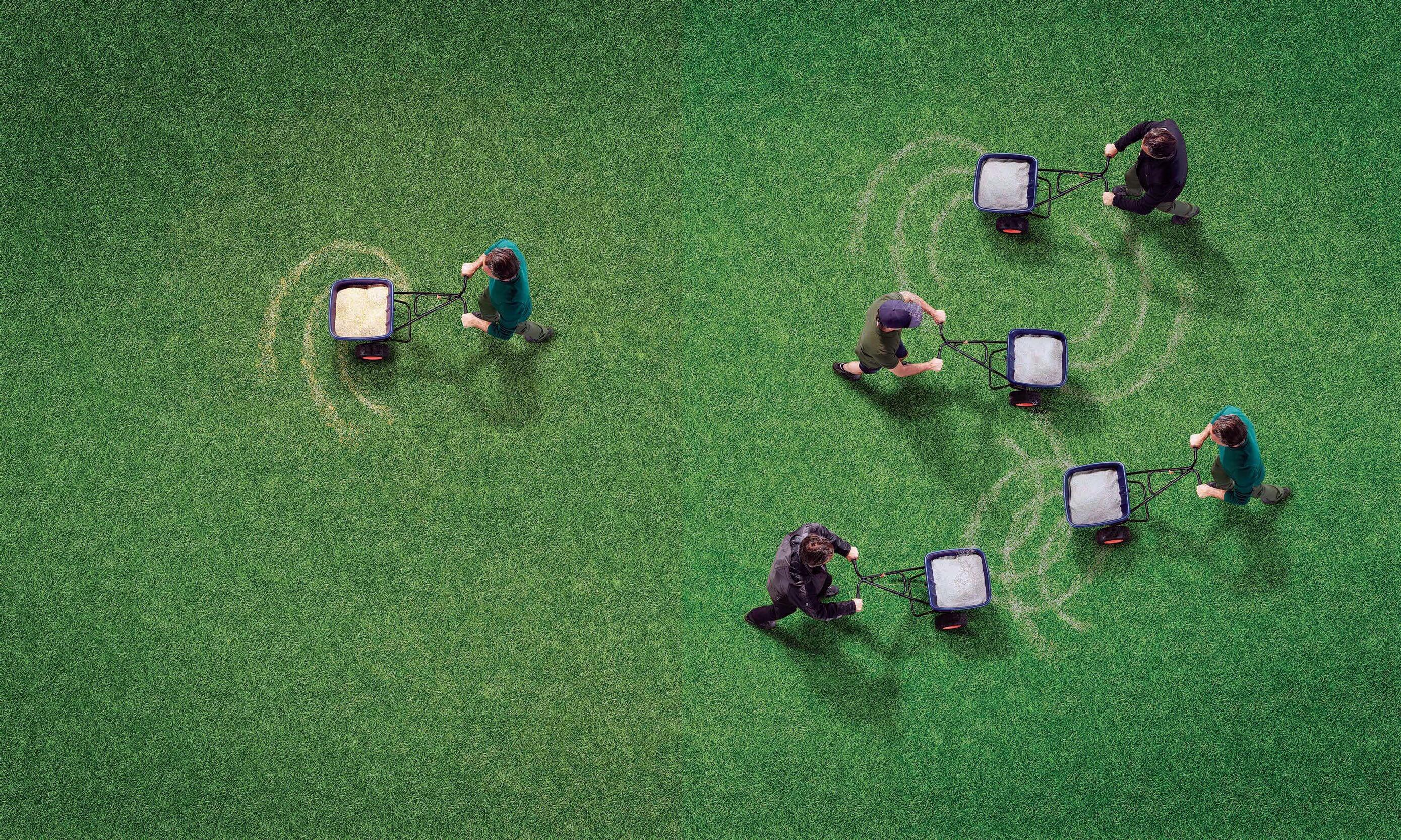
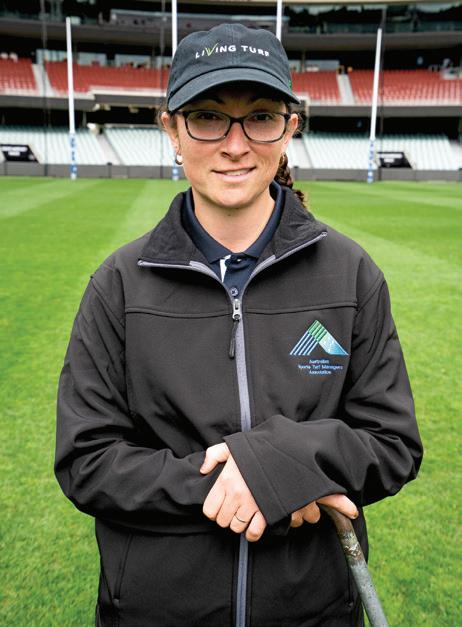

32 AUSTRALIAN TURFGRASS MANAGEMENT 24.5
“Throughout trade school I was the only female, so this was a great opportunity to meet other women in the turf industry.” – Jayde Robson
“This opportunity was about highlighting women in turf and breaking down stereotypes around the industry.”
– Melissa Mills











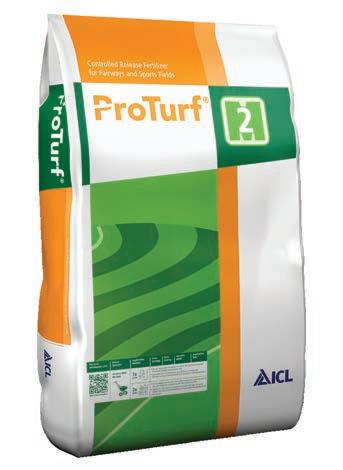
Apply controlled release fertiliser once Discover the power of controlled release. Apply conventional fertiliser Apply conventional fertiliser again Apply conventional fertiliser again Available From: High impact fertiliser designed for use on tees, surrounds, fairways, sports fields and lawns. Contains Poly-S controlled release fertiliser technology and Polyhalite, a unique organic source of K, Ca, Mg & S. NSW, VIC, QLD, SA & ACT
Sophie Warren
Golf Club,
Inthe last edition of Australian Turfgrass Management (ATM), we outlined the launch of the ASTMA’s Women in Turf Strategy at the Melbourne conference.
The initiative aims to better support female sports turf managers currently employed, as well as establish pathways to increase female participation in the industry.
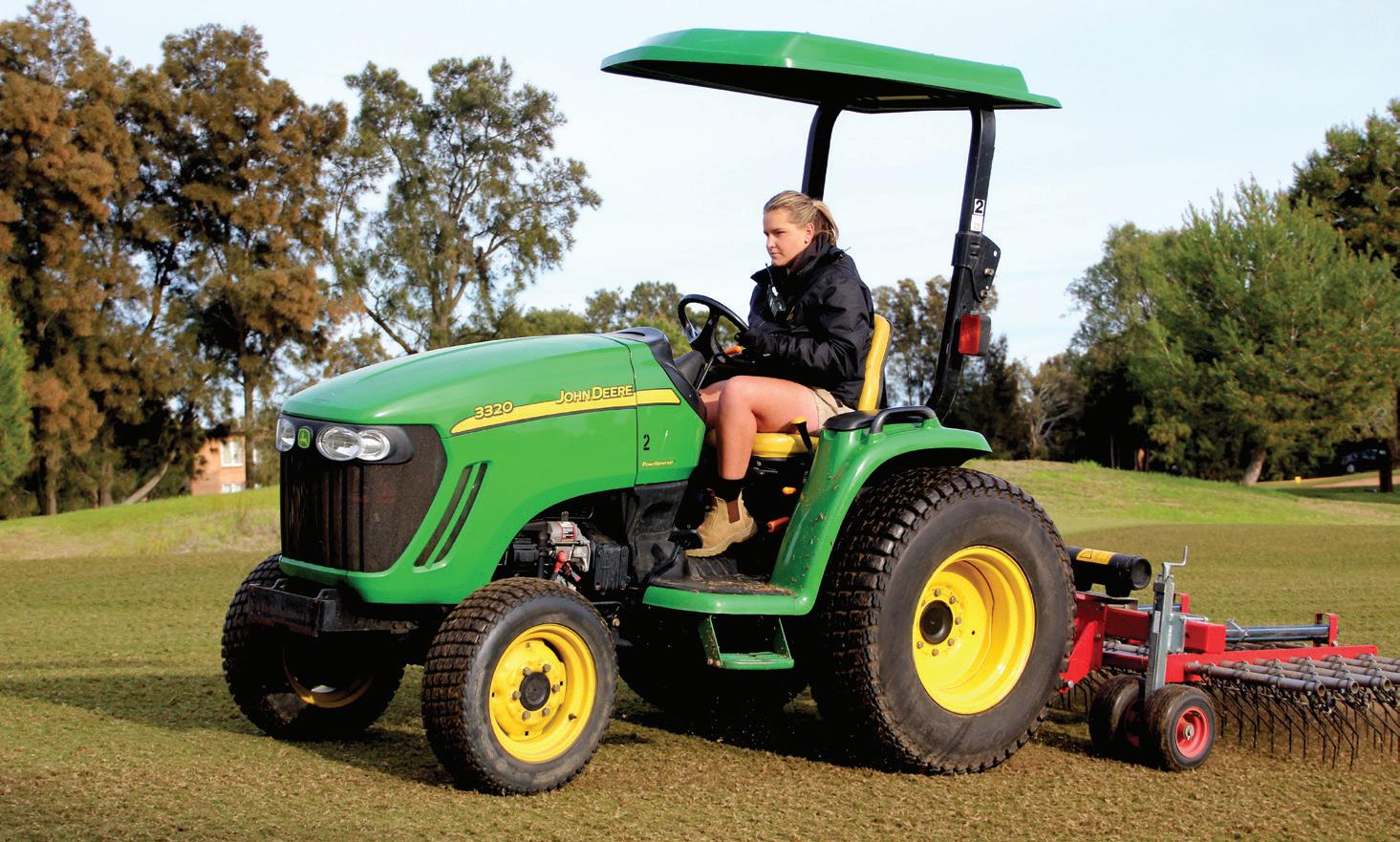
The strategy will be delivered via a range of means and most recently a work experience program was launched whereby four female turf managers helped prepare Adelaide Oval for the AFLW Showdown (see pages 28-32). Another action as part of the program is providing regular profiles on female sports turf managers in the pages of ATM.
First up in what will be a regular series of practitioner profiles is 18-year-old Sophie Warren. It was almost predestined that Sophie would end up pursuing a career in sports turf management, given her father, Tim Warren
(CSTM), has been a course superintendent for over 20 years. Sophie grew up in and around the courses her dad oversaw –Horsham, Adelaide Shores, Links Lady Bay and now Glenelg – and two years ago followed in her dad’s footsteps by undertaking an apprenticeship. Sophie is now a valued member of the Glenelg team and we thank her for kindly agreeing to answer a few questions for this inaugural Women in Turf profile…
Talk a bit about your background and your career in sports turf management to date.
I started working as a casual at Glenelg Golf Club in the summer of 2019 to earn some money over the school holidays. When I started, I worked closely with the club’s biodiversity manager Monina Gilbey doing a vast number of jobs including emptying bins, weeding, maintaining gardens and planting out areas. In Year 11 at Sacred Heart College,
I was interested in undertaking a trade when I finished school so I completed a VET course in ‘Pathways to Construction’ which covered bricklaying, carpentry, tiling and paving. Towards the end of this course, I concluded that I didn’t want to pursue a career in the building industry.
At the end of 2020, once I had completed Year 11, Glenelg Golf Club was looking to employ three apprentices, so I had to decide if I wanted to continue at Sacred Heart College doing Year 12 or apply for one of the vacant apprenticeship spots. After many family discussions, dad spoke with Graeme Davidson (assistant superintendent) and Rob Vincekovic (general manager) to confirm whether the club would be happy for me to apply, which they were. I was interviewed by Graeme and Monina and was soon after offered one of the positions. I decided to leave school and started my apprenticeship in November 2020.
34 AUSTRALIAN TURFGRASS MANAGEMENT 24.5 WOMEN IN TURF
In the first of an ongoing
series
of profiles on
women working in the sports turf management profession,
ATM catches up
with second-year Glenelg Golf Club apprentice Sophie Warren.
Glenelg
SA
PHOTOS: MONINA GILBEY
After working as a summer casual at the club in 2019, Sophie Warren embarked on an apprenticeship at Glenelg Golf Club in Adelaide
Warren with dad Tim who has been superintendent at Glenelg for the past four-and-a-half years
What inspired you to become a sports turf manager? With my dad working in the industry, I have been around many golf courses since I was little. One of my earliest memories of working with dad was being picked up from school at Horsham on a Friday afternoon and been told that my brother James and I had to go help him change holes at Horsham Golf Club. I’ve always enjoyed the outdoor nature of the job and it’s satisfying to look back on a job after it’s completed.
Who has been the biggest influence/ mentor in your career to date and what have they instilled in you? Dad is definitely a big influence on my work ethic and dedication, even though I do get a nightly performance appraisal! I have been lucky to be mentored by a great team at Glenelg, which is led by Graeme, 3IC Peter Bell and the other senior team members who have been incredibly supportive in developing my career so far.
What is your current role and what comprises a typical day at your facility? I am a second-year apprentice greenkeeper. My typical day starts at 5am where we meet as a team for the daily briefing where we are allocated our morning tasks. Since starting at Glenelg, I now carry out most course maintenance duties except for boom spraying which I hope to be trained up on soon. Our working day finishes at 1.30pm, except on Wednesdays when we work to 11.30am. This is a part of the job that I enjoy because I still have the afternoon to do other activities.
What do you enjoy most about your role and the sports turf industry? I enjoy working in a team environment and achieving a result, whether it is hand-cutting greens, building bunkers or constructing a green from scratch.
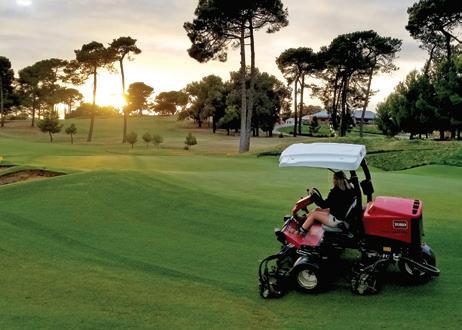
Glenelg is currently in the midst of a major course enhancement project and since it has started it has given me and the other apprentices a great opportunity to be involved with all aspects of construction. It has been great to work with somebody as experienced as our project construction manager Ryan Van Der Veen, where I have learnt to operate a site dumper, and also working with our irrigation technician Dan O’Sullivan installing irrigation.
Discuss a project that you have been involved with at your club that you have enjoyed being a part of. As mentioned, the course enhancement works have given me exposure to different skills and to date we have completed three holes. The highlight for me was installing irrigation for the 14th green which is something different from the day-today greenkeeping which I enjoyed.
What has been the biggest thing you have learnt about the industry during your apprenticeship? I have learnt that it is a very rewarding career if you put the effort and hours into your job, even though I do sometimes struggle getting up every morning at 4.15am!
I have also learnt that there is a lot more involved in preparing the golf course each day than what people think. There is a lot of planning that goes on behind the scenes which I see firsthand with dad and all the afterhours work he has to commit to.
What are your future goals? I would like to travel abroad, maybe New Zealand, to do some seasonal work to get more experience and then see where my career takes me. In the short-term, I would like to stay at Glenelg and see the completion of the course enhancement plan and develop my skills more.
What has been the highlight of your career to date and why? It hasn’t quite happened yet, but I have been accepted as a course volunteer for the upcoming Australian Open. The opportunity to work under superintendent Steven Newell and his team at Victoria Golf Club will be tremendous. Being involved in this event, learning new skills and meeting other people within the industry is something that I’m really looking forward to.
Warren is a second year turf management apprentice and undertakes most course maintenance tasks
What do you think of the ASTMA’s Women in Turf Strategy? I think it’s great. One of the challenges that I face is that it is a very male-dominated industry where I don’t have too many females to look up to. I remember when I first started at Glenelg none of my friends really understood what was involved or anything about the industry. I think it is great the ASTMA is promoting the industry through this initiative. I look forward to the day where we can have more girls considering a turf management career when leaving school.
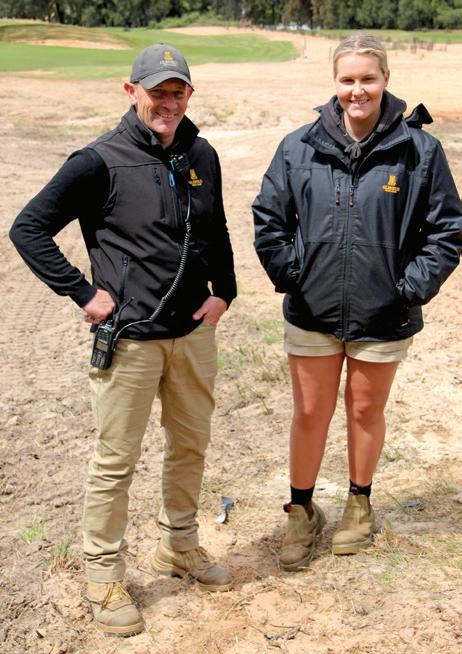
Do you network with other women in the turf industry? Besides my relationship with Monina Gilbey, I haven’t had the opportunity as yet. This is one reason why I’m looking forward to going to Melbourne for the Open and to meet new people, especially other women in the turf industry.
What would you like to see more of/less of in the turf management industry? In South Australia, I would like to see the education of turf apprentices be improved so we can learn more turf specific subjects. Also, the opportunity to do higher education such as the Diploma which is something that may help attract more females to the industry.
What would be your advice for other females starting out in the sports turf management industry or looking to take it up? If you really enjoy your sport, working outside and having a job that gives you the opportunity to travel, it’s certainly a career worth giving a go. I really enjoy the social aspect of working in a big team environment as well. It is a very rewarding job because you see the outcome of your work and people enjoying playing on surfaces that you have helped prepare.
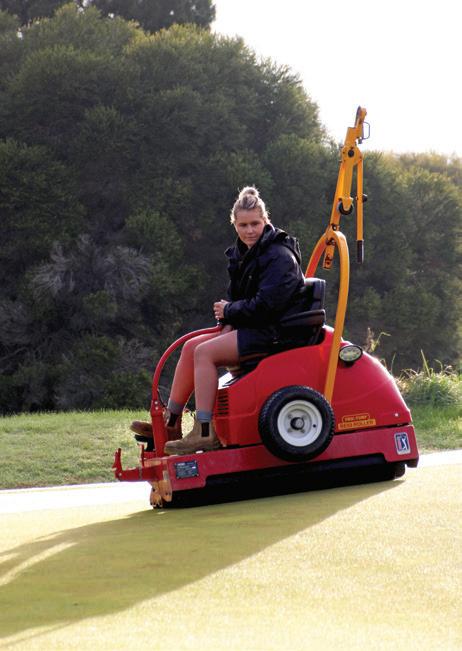
SEPTEMBER-OCTOBER 2022 35
Warren enjoys the diversity of her role and the social aspect of working in a team environment
The

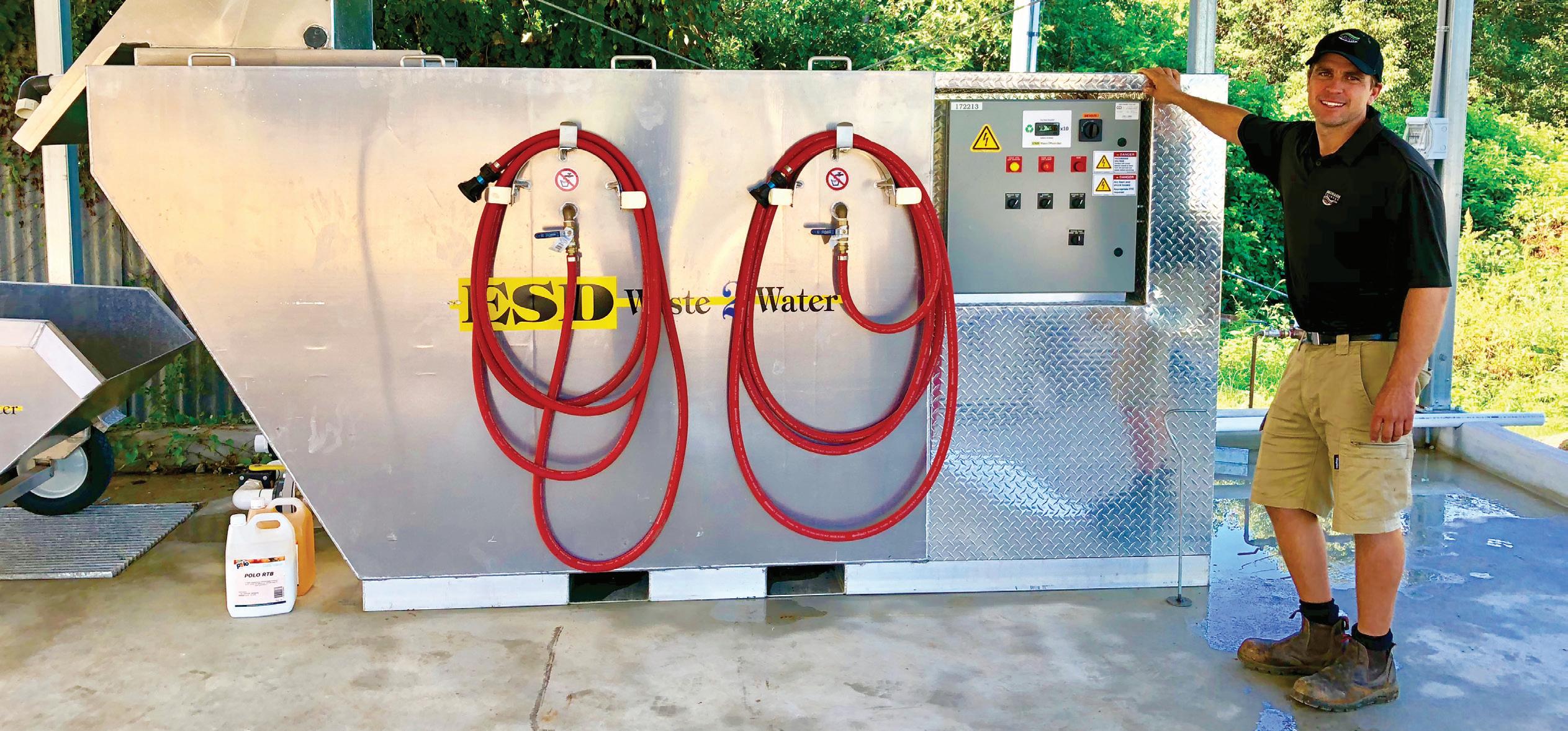
IS YOUR WASH BAY COMPLIANT? The ESD Waste2Water system is a patented fixed film biological treatment system that utilizes specially engineered microbial blends for the breakdown of hydrocarbon based organic contaminants including oil, grease, petrol, diesel, herbicides, insecticides, fungicides, etc; into carbon dioxide and water. Odour is controlled through an oxygen rich water that does not allow the water to go septic - producing a clear, odourless water for re-use.
GSMS Series is the latest in wash water recycling technology. The GSMS Series is designed for treating Turf Care maintenance facility equipment with up to 4-hose stations. The addition of the Grass Clipping Separator, the integrated Inclined Plate Clarifier combined with the Biological Treatment System creates a water quality with a low Turbidity. The GSMS provides the versatility to seperate the grass clippings, suspended solids and hydrocarbons all in one compact system to produce a high quality recycled wash water. Contact Country Club International to discuss a Turf Care Facility design today and learn more about the GSMS Advantage. GOLF SOLIDS MANAGEMENT SYSTEM SPECIFICATIONS INCLINED PLATE SEPERATOR SURFACE WASHING STATIONS MEDIA DIMENSIONS OPERATING CAPACITY ELECTRICAL FRESH WATER NET WEIGHT 700 Series 277 Square Feet 1 to 2 822.5 Square Feet Surface Area 132 ½” x 48 ½” x 64 (LxWxH) 622 Gallon 240 Volt, Single Phase, 40 Amp with Neutral Wire 3/4” Approx 1,500 lbs. Dry 800 Series 480 Square Feet 1 to 4 2,115 Square Feet Surface Area 186”x60 ½”x64 (LxWxH) 1,834 Gallon 240 Volt, Single Phase, 40 Amp with Neutral Wire 3/4” Approx 2,000 lbs. Dry
CLIPPING SEPARATOR
The wash water slurry flows over the fine mesh clipping screen where grass and other solids slide dovwn the clipping screen and into the Clipping Cart. At the same time, water drops through the clipping screen and into the Solids Separator.
CLIPPING TRAILER
The Clipping Trailer captures grass clippings, sand particulates and other solids. The solids are dewatered as they drip-dry in the clipping cart. The water drains into a Shallow Sump below the Clipping Cart. Once dewatered, the grass clippings are removed and disposed of appropriately.
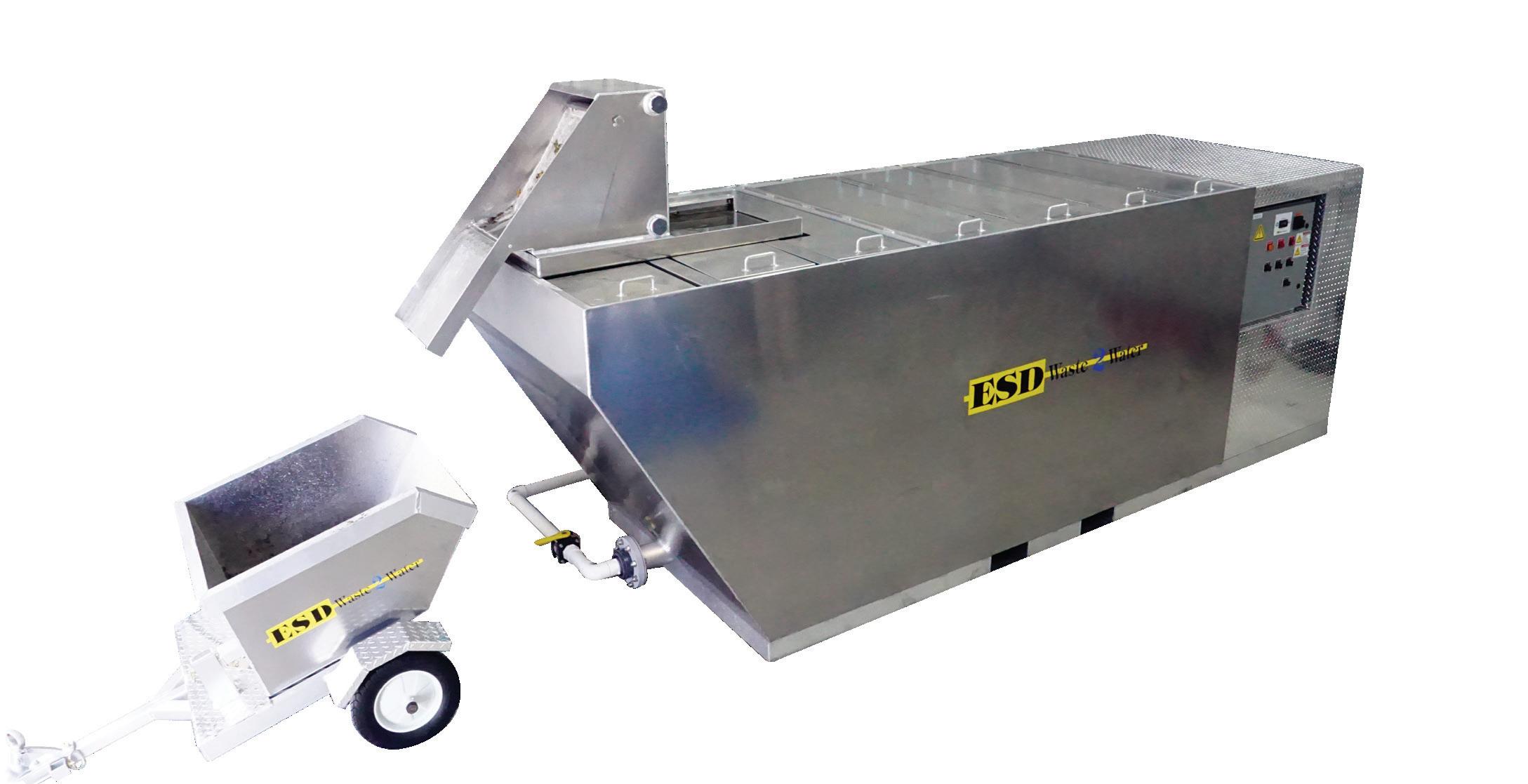
INCLINE PLATE CLARIFIER
The wash water slurry is directed into the Inclined Plate Clarifier allowing the suspended solids to drop to the bottom, while skimming the water and hydrocarbons off to travel into the Biological Treatment Chamber.
BIOLOGICAL TREATMENT CHAMBER
Once in the Biological Treatment System, the water travels over and under a series of baffles and through a mass of honeycomb bio media covered with specially-formulated microbes. Organic contaminants are consumed by the microbes, and converted into carbon dioxide and water. Creating a low turbidity recycled wash water.

CONVERTED CONTROLS
The marine grade aluminium covering Is designed to protect the intrinsically safe controls from the environment. The GSMS also provides a Water Flow Meter to report the amount of Recycled Water for sustainability.
A B C D E A B C D E Recently installed at: The Australian Golf Club, Monash Country Club, Lakelands Golf Club info@countryclub.com.au | 1300 138 804 Sydney Water Approved!
Allianz turf
takes root
Iam an unashamed AFL fan – the less said about my beloved St Kilda the better – but I will occasionally watch NRL and rugby union games. On 2 and 3 September I was particularly transfixed on the opening two matches played on the new surface at the recently redeveloped Allianz Stadium in Sydney.
After nearly four years of works, the striking new 42,500-seat venue reopened with three matches across three codes in the space of five days. The NRL’s Roosters and Rabbitohs, who had played the very last game at the old stadium (the 2018 NRL Preliminary Final) prior to its demolition in early 2019, had the honour of christening the new turf with a rematch in the final round of this year’s NRL regular season. The ground was then turned around to host the Wallabies v South Africa Rugby Championship clash just 24 hours later, with the Matildas playing an international soccer friendly against Tokyo 2020 Olympic gold medal winners Canada on 6 September.
As well as being home venue for the Roosters, Allianz Stadium is also home to A-League side Sydney FC and the NSW Waratahs Super Rugby side. It has also been selected as one of 13 venues that will host games when Australia and New Zealand
Agronomic expert John Neylan looks at the challenges that the new Allianz Stadium turf had to overcome ahead of its grand reopening in September. He also discusses the debate over laboratory testing methods and casts his eye over the recently unveiled GC2030 document.
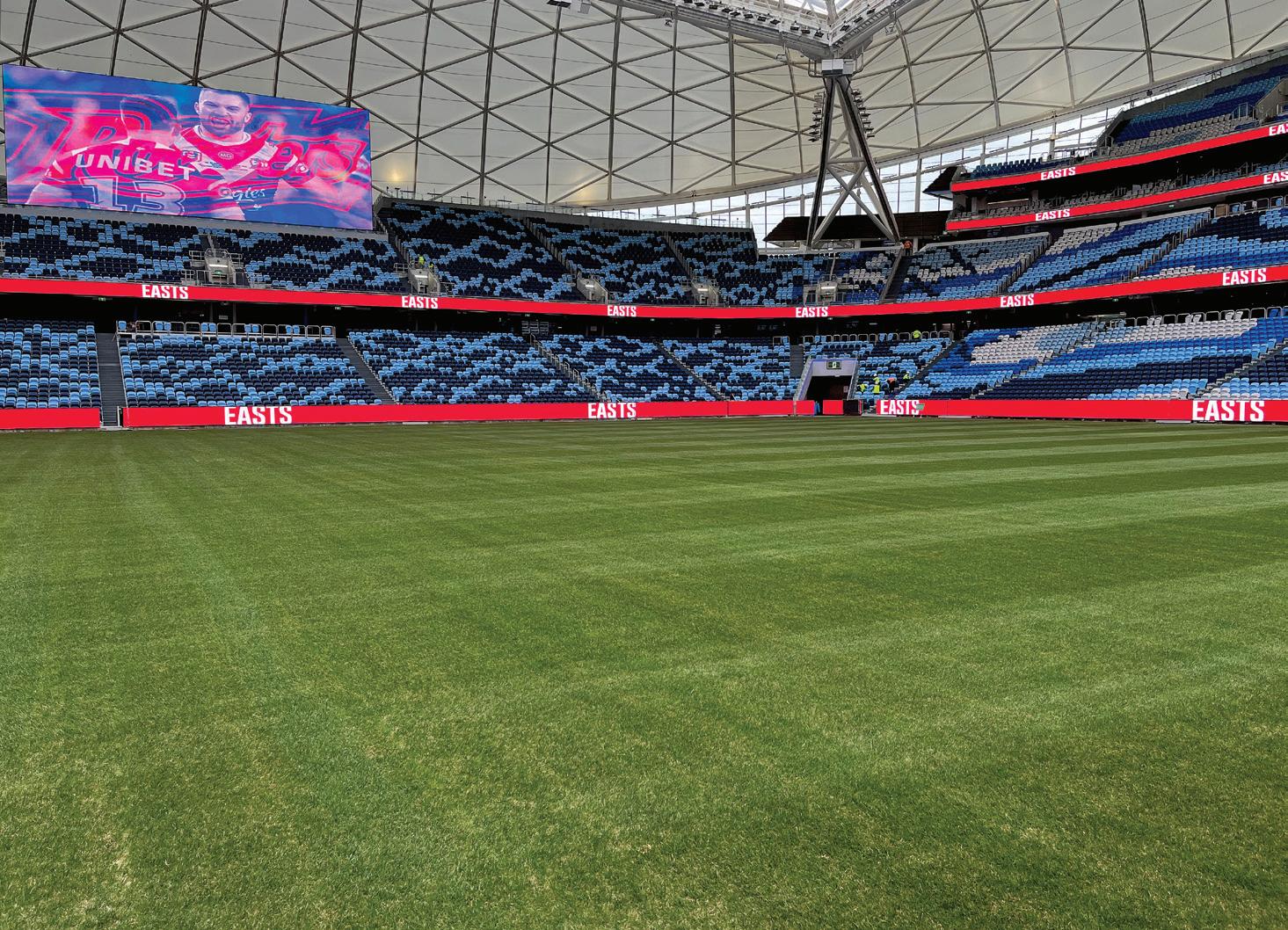

jointly hold the 2023 FIFA Women’s World Cup starting next July.
As an agronomist that had a connection throughout the redevelopment, it is always a little nerve-wracking (or should that be ‘very’) as the first games are played on a new surface, particularly knowing the background to what had to be done to get the turf to the stadium. It was very pleasing to see the first union scrum set without issue and the surface hold up well overall for those first three games.
Watching in excess of 1800 kilograms of manpower in action – the Springboks pack weighed 936kg and the Wallabies pack 911kg – made me wonder what forces are at work on the turf and how does it manage to hold up under such pressure. It is reported that the mean values for the average sustained forces against a scrum machine generally ranged from 1000 to 2000 Newtons in individual scrums and between 4000 and 8000 Newtons for two full packs of male rugby players (Martin and Beckham, 2020). It is noted in one article that this is the equivalent force of being hit by a car at about 48kph (this hasn’t been verified by research as such but does provide context).
As an AFL watcher I am always amazed at the length of the studs on rugby boots and the traction that is required during these contests. We ask a lot of the turf and the skills of the turf managers to prepare surfaces that have to withstand such forces. To everyone’s credit the turf withstood the test, even if the Wallabies didn’t quite deliver on their end of the bargain, ultimately going down 8-24.
Evergreen Turf constructed the profile of the new playing surface at Allianz Stadium which consists of a network of subsoil drains, a gravel drainage layer, sand profile with StaLok reinforcing fibres and the Matrix ‘ready to play’
38 AUSTRALIAN TURFGRASS MANAGEMENT 24.5 JOHN NEYLAN
The new Allianz Stadium turf overseeded and topdressed 22 days out from
its first
match
PHOTO: JOHN NEYLAN
turf on top. The Matrix turf was to allow for games to be played as early as possible once the stadium was completed.
The Matrix turf was established by Evergreen Turf on the banks of the Hawkesbury River at Freemans Reach west of Sydney. The turf consisted of a Santa Ana couchgrass base with a ryegrass oversow. As we are all well aware, the Hawkesbury region has suffered three major floods over the past two years and the pad on which the Allianz Stadium turf was being grown was inundated on each occasion. The last flood, on 5 July 2022, was only two weeks out from the planned harvest and represented the worst day of flooding in the Hawkesbury in 44 years. This flood exceeded 13.93m, beating both the March 2022 flood (13.71m) and the 2021 flood (12.91m).
The turf was inspected in early June 2022 where it was in exceptional condition with an excellent Santa Ana base, a very strong root/rhizome system and a strong oversowing of ryegrass. The June inspection was following the March 2022 flood where the turf was inundated for several days followed
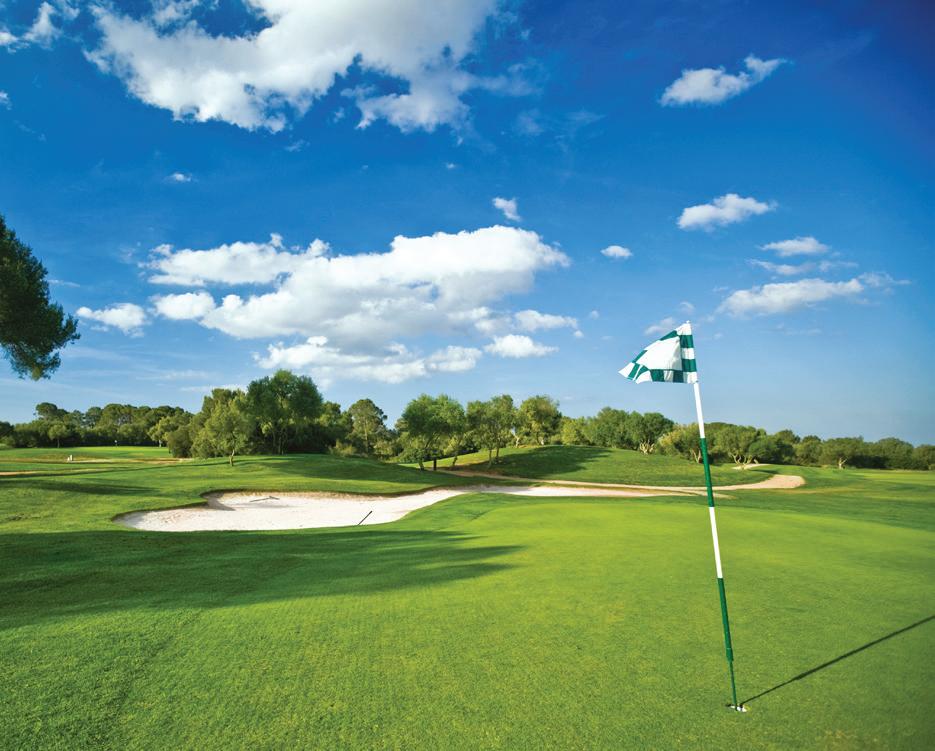

by persistent wet weather. At the June 2022 inspection a successful test harvest was undertaken and at this time confidence was high that everything was on track for laying the turf in early July.
As is the want of Mother Nature, the turf was again inundated in early July 2022 and was under water for about five days. Once the waters receded the work had to begin in earnest. Silt was removed by flooding the turf with fresh water and using a Super Sopper to lift the silt which was then pushed off the turf area. This was done repeatedly to remove as much of the silt as possible. The process of cleaning the silt off the turf did place some stress on the ryegrass component, however, there was still an excellent root mass that was providing a very strong turf.
The turf was prepared for harvesting and transported to Allianz Stadium in late July 2022 and once laid it was aerated with solid tines. Over the next five weeks the turf was topdressed and overseeded.
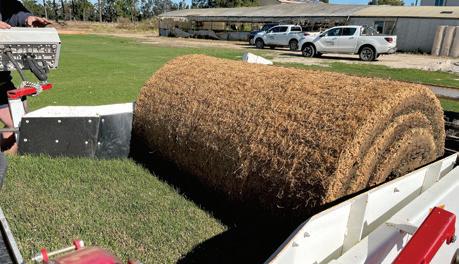
The grand opening of the stadium was on 28 August with a community event and concert that included activities on the playing
At the June 2022 inspection a successful test harvest was undertaken with confidence high that everything was on track for laying the turf in early July
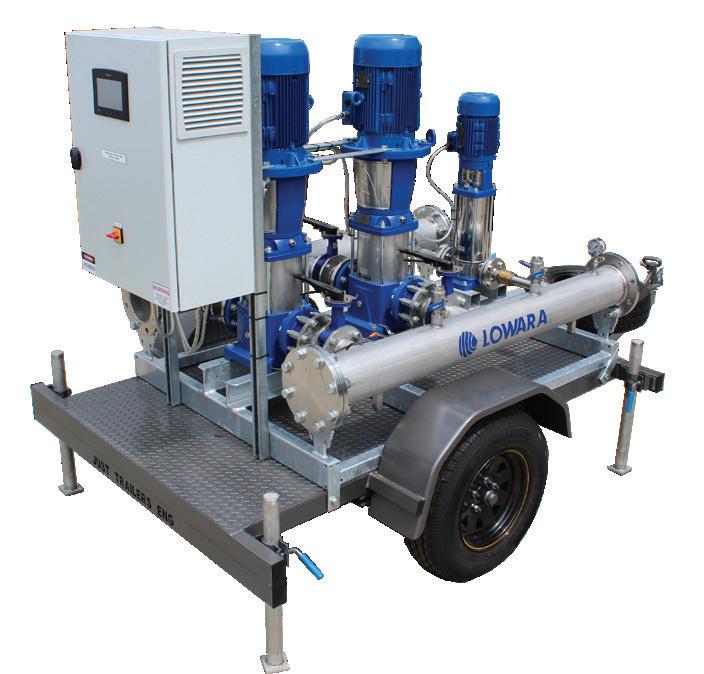
surface. From an agronomist’s perspective this was somewhat alarming given the tortuous process the turf had been through over the previous five months. The turf, however, survived exceptionally well and was ready for its opening match between the NRL’s two traditional rivals in a Friday-night sellout.
With the Wallabies and Matildas playing matches in the days following the NRL, it was certainly a baptism of fire for the new surface and a superb effort by the Evergreen team led by Graeme Collis, Chris Chapman and Anthony Wright to get it into a state where it was ‘ready to go’. Congratulations also to the
SEPTEMBER-OCTOBER 2022 39
Nearmap images of the Allianz Stadium turf pad inundated following the March 2021 flood (left) and in early June 2022 just a month before it was inundated again
Ph: 1300 4 BBENG www.brownbros.com.au Create a variable speed booster station to your technical specifications and on-site requirements. • Maintain constant pressure • Optimized pumping efficiencies • Longer lifetime and reduced lifecycle costs Custom Irrigation Systems Lowara’s extensive pump range together with our large selection of custom control options and bespoke engineering capabilities, offers a complete line of pumping systems ideally suited for the turf, landscape and golf course markets. featuring Lowara premium pumps & INCA control systems. DELIVERING PUMPING SOLUTIONS09/22
Allianz Stadium team led by Adam Lewis to put the final polish on the field for these inaugural events.
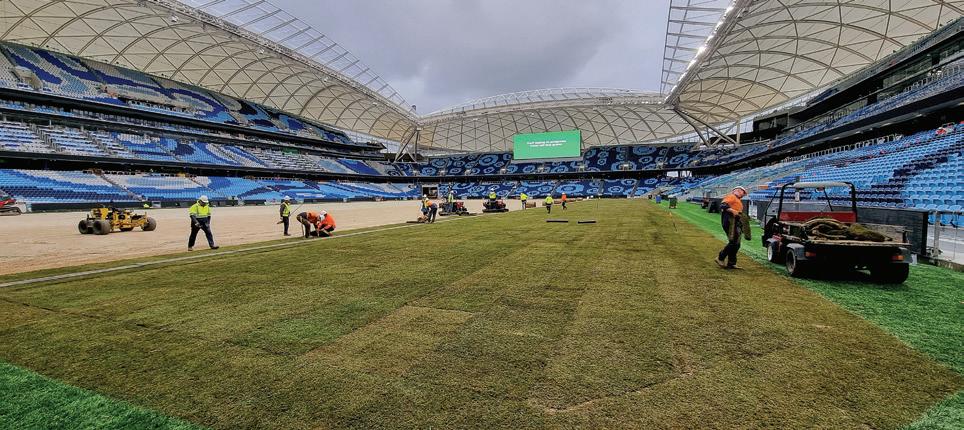
Over many years of sweating over playing surfaces and whether they would play well on the day, it has always intrigued me how little the participants and those watching the game understand what it took to achieve the playing surface. I suppose they don’t really need to know, however, with three floods and a tight timeframe to be ready for play in this particular case, it certainly deserves more recognition.
LABORATORY TESTING
Over the past several years there has been a debate around the testing methodology for sands and whether one methodology or laboratory is better than another. The testing of sands for sports turf applications has been developed over at least 60 years and has been based on the testing methods developed for soils more broadly.
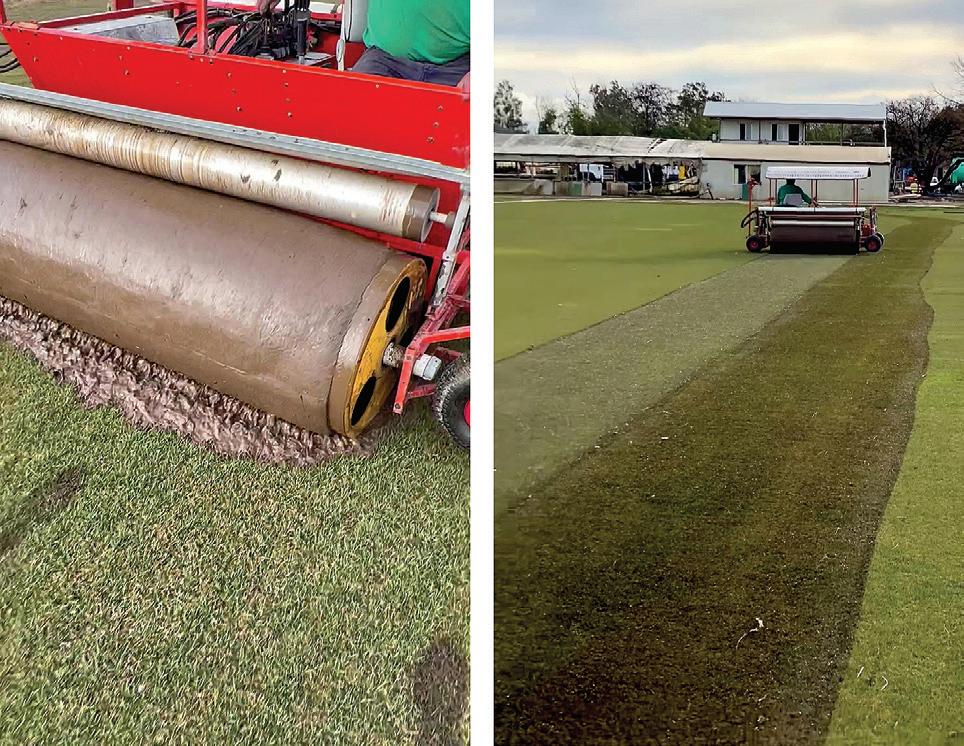
Over time the tests have been refined to better reflect the sand-dominated rootzones with the USGA Greens Section having undertaken most of the development work in this area. McIntyre and Jakobsen (1998) have also developed similar testing methodologies that can be argued better reflect Australian conditions. Dr Bent Jakobsen was a CSIRO soil scientist that developed the current methodologies while working at Canberra’s City Parks Technical Services Unit.
There are two acknowledged methodologies in Australia for testing sands used in the construction of golf greens and sportsfields which are:
l McIntyre and Jakobsen (1998) – it is noted that the McIntyre and Jakobsen test methods aren’t NATA accredited.
l USGA Greens Section Methods (ASTM F1815-11(2018)). These tests are part of an American Society for Testing and Materials (ASTM) standards.

Both sets of methods include saturated hydraulic conductivity, water retention, porosity and bulk density. The fundamental difference between the two methodologies is the way that the sands are compacted for the saturated hydraulic conductivity test. The ASTM F1815-11 (2018) method compacts the sample through a falling weight over a set height onto the sample, whereas the McIntyre and Jakobsen method compacts the sample by dropping the tube containing the sample from a set height. Neither method is absolutely right or wrong, they are just different and as a result may provide different results for the same sand.
Both methods cover the standard procedures and related calculations for determining the saturated hydraulic conductivity, water retention, porosity and bulk density of sand-based rootzone mixtures. The key elements of the testing procedures are:
l Before any soil is used for testing, the whole sample received must be made homogeneous and oven dried. Drying the sample ensures that the moisture content for compaction purposes can be controlled. Porosity and drainage are related to bulk density and moisture and the test must resemble the anticipated field conditions.
l Samples should have water extracted at a soil suction of -3kPa (30cm) which is near to field capacity prior to compacting for hydraulic conductivity. Water retention can only be determined through the use of a tension table. The moisture content at field capacity provides maximum compaction. If the sand is too dry, the particles ‘roll’ around each other and don’t interlock. If the sample is too wet, the soil can become ‘liquid’ which prevents particle interpacking. This is a critical step in achieving a consistent result.
l On completion of the hydraulic conductivity test, the sample can be extracted, dried and the dry bulk density and total porosity calculated. The bulk density is a useful calculation as it provides an indication of how well the sample has been compacted. It is useful in quality control testing of the same sand in separate stockpiles. It is not unusual to get an odd result for hydraulic conductivity which can then be verified (or otherwise) by looking at the bulk density. A higher than expected hydraulic conductivity could be due to the sample not being properly compacted.
l The test report for both methods must include;
l Capillary and aeration porosities. These calculations provide essential information on water availability for plant growth and soil aeration for root growth and root health;
40 AUSTRALIAN TURFGRASS MANAGEMENT 24.5 JOHN NEYLAN
Following the early July 2022 inundation, silt was removed by flooding the turf with fresh water and using a Super Sopper to lift the silt which was then pushed off the pad
Allianz Stadium’s Matrix turf system consists of a Santa Ana couchgrass base with a ryegrass oversow
PHOTOS: EVERGREEN TURF PHOTO: EVERGREEN TURF
l Bulk density; and
l Hydraulic conductivity,
There are several soils laboratories operating in Australia that undertake the specialist testing of sands for sports turf rootzones. In the main they are within a larger soils laboratory that undertakes soil testing for geotechnical purposes.

The benefit of having the testing undertaken within such laboratories means there will be quality systems within the laboratory which governs the tests’ validity and accuracy. The NATA (National Accreditation Testing Authorities) accreditation system is the principal quality system used by laboratories in Australia and requires:
l A quality system;
l Documented procedures;
l Quality control systems;
l The appropriate laboratory facility and equipment;
l The staff and proficiency;
l Ongoing training programs assessed by technical assessors; and
l Each lab is accredited for specific tests.
While these specialist tests may not have NATA accreditation, a NATA lab will still have test and quality control procedures in place to ensure testing is of a high quality.
So my take home messages when it comes to laboratory testing are:
l Determine the experience of the lab and what quality systems they have in place;
l Ask what test methods are used;
l Make sure the report includes all of the relevant information (i.e. hydraulic conductivity, bulk density, capillary porosity and aeration porosity).
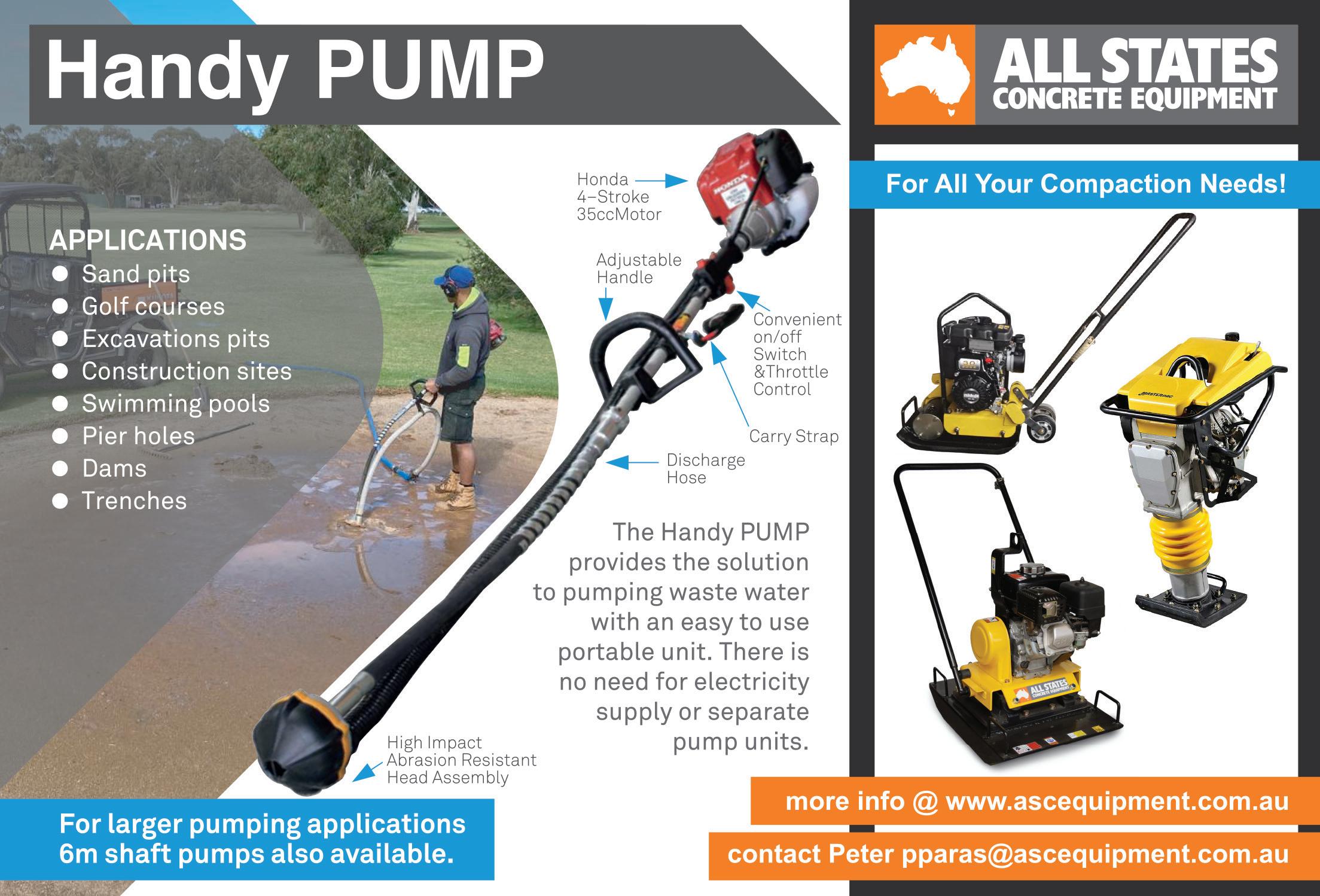
l If you are happy with a laboratory, stay with them. Even between laboratories using the same test methods, the results can vary.
GC2030
The Golf Course 2030 Australia (GC2030) document was recently released by the Australian Golf Industry to provide an insight into the future challenges faced by golf clubs as it relates to the environment and sustainability. The document is in response to the GC2030 report released by The R&A in 2018 and has been endorsed by The R&A as Australian golf aims to manage the sport through factors such as the changing climate, resource constraints and regulation on course condition and playability. You can read the report at www.golf.org.au/facilitymanagement.
The GC2030 report acknowledges the challenges and consequences of managing golf courses as the golf industry attempts to cope with climatic stresses while sustaining high quality playing surfaces. Having to deal with increasing temperatures, extremes in rainfall from drought to floods and increasing humidity, it is going to be impossible to manage turf without additional resources and a more flexible acceptance that there will be variations in the quality of playing surfaces.
The GC2030 document highlights the challenge of achieving golf course sustainability while attempting to manage the environmental objectives, essential inputs and budgets while meeting golfer expectations. The key challenges identified as impacting the
SEPTEMBER-OCTOBER 2022 41
The new Allianz Stadium turf gets its first cut in August
PHOTO: GEORGE CROWE
long-term sustainability of golf courses into the future include climate change, resource use, water conservation, pesticides, labour and land use.
Reading the document critically, the main concern that I have is that other than for The R&A representative, the GC2030 National Sustainability Working Group consists only of senior managers representing the various golfing groups and stakeholders. Unfortunately, there is no experienced Australian turfgrass agronomist on the working group that has intimate knowledge of the key agronomic areas identified in the report.
The document provides a framework for the future direction as to what needs to be undertaken as an industry to better cope with a changing environment and covers several key agronomic areas. It is somewhat presumptuous of me to make comment on what has been proposed, but it does require a comb through so that whatever resources are available are correctly allocated. The following are my thoughts on what has been proposed:
Study into turf varieties that require less water: In principle this is admirable, however, there has been research done in this area over the past 10-15 years in WA and Queensland and should be used as a basis of future research. Discovering grasses that have a lower water use is a very complicated and expensive area of research and not the best use of what research funding may be available. We already understand what grasses require less water and from my experience it is better to look at drought tolerance and recovery from drought.
Flood tolerance of turfgrasses: While drought and water shortages are going to be long-term problems, the inundation tolerance of grasses is still required. As has been seen over the past two years there have been golf courses subjected to multiple flooding events and turf loss as a consequence.
Water use planning: Every golf course should have a water management plan as a means of understanding turf water requirements, water resources and where increased efficiencies can be made. There are already numerous documents available that can assist with water management planning and don’t need to be reinvented.
Assessing new turfgrass varieties: There has been an urgent need for independent national trials for at least the past 10 years. To date much of this work has either been done on an ad hoc local basis or by commercial entities.

Research efficacy of alternative treatment programs for specific pests and diseases: There has been considerable research undertaken on non-chemical control of pests and diseases in the European Union countries where there are greater restrictions on the use of chemicals. For the expense of the work, it is unlikely to be cost effective or provide the outcomes desired. The focus needs to be on improving plant health through the strategic use of fertilisers, efficient water use and soil management.
Promoting the positive values of indigenous flora and fauna: There has been a considerable amount of research done in this area including research sponsored by the AGCSA and undertaken by Melbourne University (2016) that investigated the biodiversity of golf courses. What we need to do is to take these very positive outcomes and strongly promote them.
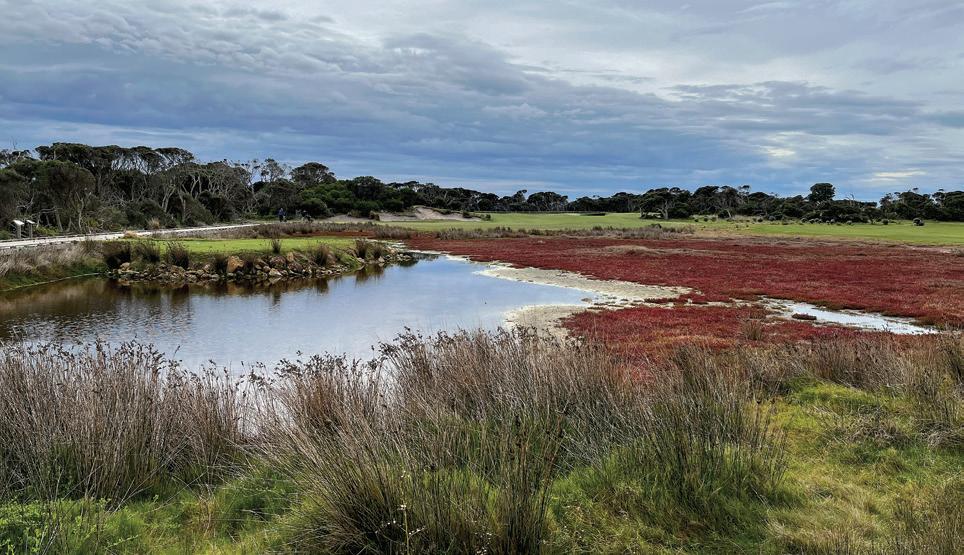
The carbon equation: While the report does acknowledge the need to transition to cleaner forms of energy, the carbon inputs of golf course maintenance has been neglected in the GC2030 priorities section. There is a general desire for many industries to become carbon neutral or at the very least reduce their carbon footprint. Early indications are that
in-roads can be made through the use of solar panels, electric mowers (limited on broadacre), improved water use efficiency, understanding the amount of embedded carbon in fertilisers and other inputs.
Golf courses have a significant advantage in that the vegetation will sequester carbon as a part balance against the carbon associated with the inputs. More research needs to be undertaken in this area as it provides a practical means for golf courses to reduce their carbon footprint and to be more sustainable.
Timeframe and milestones: What is now required is to establish an action plan with achievable timeframes and adequate funding. Let’s get started!
From my perspective the GC 2030 Australia document is a good starting point and the challenge now is to get underway. My thoughts are as follows:
l Get an agronomy/golf course superintendent working group together to detail the priority areas;
l Compile the available research and identify the gaps in the literature;
l Update the available water management documents;
l Develop reference documents around water, environment, biodiversity, vegetation management etc;
l Create a website that is dedicated to holding the resource material;
l Identify funding sources for the research; and
l Create milestones against the action plan.
REFERENCES
Martin, E., Beckham, G. 2020. Force production during the sustained phase of Rugby scrums: A systematic literature review. BMC Sports Sci Med Rehabil 12, 33 (2020). https://doi.org/10.1186/s13102-020-00174-z Department Urban Services, ACT Government 1993. Canberra Landscape Guidelines, Soil Testing Procedure LG B22. Canberra.
Design Standards for Urban Infrastructure 24 Sportsground Design https://www.cityservices.act.gov.au/data/assets/ pdf_file/0009/396846/Sportsgrounds-24_ Revision2_2010.pdf
ASTM F1815-11(2018). Standard Test Methods for Saturated Hydraulic Conductivity, Water Retention, Porosity, and Bulk Density of Athletic Field Rootzones.
Golf Course 2030 Australia. February 2022. https://www.golf.org.au/a-sustainabilityroadmap-for-australian-golf/ National Climate Report: Australia’s Changing Climate 2020. https://www.csiro. au/en/research/environmental-impacts/climatechange/State-of-the-Climate/Report
42 AUSTRALIAN TURFGRASS MANAGEMENT 24.5 JOHN NEYLAN
Golf courses and their benefits have a great story to tell
PHOTO: JOHN NEYLAN

learning, Language, and maths

When we are very young, we learn language with our parents. Slowly as our social experience grows we learn with extended family. Then we continue the learning process at peer playgroups of friends or at a formal childcare or kindergarten. Once into school we begin to study the formal structures of language, including grammar and tenses, all of which we have already partially picked up in our everyday use of words.
If you look at the way the structures develop, you see the gradual movement from the particular to the general. From mummy/ daddy, mother/father and grandma/grandpa, categories then begin to be recognised –aunties/uncles, cousins, boy cousins/girl cousins, sisters/brothers etc. Gender is not something consciously different in the young child. It is just there and simply a fact taken for granted.
As the child becomes older and begins to socialise, more especially at school, the boy/ girl divide starts to be emphasised, especially the concrete around the toilet blocks. The child has to learn that boy/girl is abstracted to male/female. I recently heard a parent talking to a very young child about birds and
recognising their gender from their plumage. The conversation went for a few minutes about boy birds and girl birds, which was quite appropriate for the child who was perhaps three years of age.
Then the mother and father started to use the terms male and female. The child did not ask what they were talking about, but was told by mum that those were the scientific words for boys and girls. I considered the conversation weird for a child of that age because science has nothing to do with the genesis of the terms male and female. They are the evolutionary development of language from the particular to the general. They were around long before modern science. It took modern science to come up with the abstract symbols ♂ + ♀ for male and female.
Abstraction happens naturally in the development of language. It is not seen as abstraction in any conscious way, because language is essentially seamless. Sometimes it is only when you try to learn another language

that you come face to face with abstraction at work. Often there is no exactly opposite term or word from one language to another. Some languages don’t have a single word to describe what another language does very succinctly with one.
In many ways the development of mathematics is very similar to the development of language. Children, when they are very young, don’t learn maths they absorb it from their experience. They learn it from their toys. They learn shapes long before they learn numbers. Most people don’t associate shapes with mathematics, but they are a very important component of the big picture of mathematics.
As children grow and develop to the age where they start to question everything, they develop the art of discerning the difference between apples and oranges which they have done very early on by taste, but now it is becoming a visual skill. By the time they want to help mummy with the cooking they quickly learn fractions – half an apple, a quarter of an orange. They learn about segments of oranges (shapes) and it is all absorbed sponge-like without formal teaching. Unless you let children do these learning exercises with you, then later not having developed these concepts and
44 AUSTRALIAN TURFGRASS MANAGEMENT 24.5 PETER M c MAUGH AM
As Peter McMaugh AM writes, learning is not only a process, it is a lifelong process.
skills for themselves they will struggle to learn them formally.
In the same way they learn shapes. Apples and oranges are round – round and round the garden, they play in circles. It all comes together quite naturally; natural learning answering the never-ceasing shower of questions. They need replies suited to their development. An encyclopaedic answer is not what a five-year-old wants. They want the bare bones, the framework for asking future questions.
Sadly much of our formal education, in English-speaking countries, then tries to stamp onto the children a set of preconceived pieces of knowledge which they need to know. Yes they do, but what they really need to do is to learn. Everyone has their own individual impetus which helps to stimulate how we learn. Some individuals are so naturally endowed with mathematical ability (the ability to abstract and to see correlations) that they do complex calculations in their heads from their very earliest years. Sometimes this is also associated with great musical talent, which is also associated with ease of picking up different language skills. At other times it can be an isolated extraordinary skill in a person otherwise disabled.
We marvel at the capacity of profoundly disabled people like Professor Stephen Hawking, the great astrophysicist, or the incredible intelligence of the autistic postal clerk Albert Einstein who changed how we thought, after Newton, about gravity. These people weren’t taught anything, they learned it.
Learning is not only a process, it is a lifelong process. Every time you burn your fingers on the stove you learn not to repeat the process the way you just did. Or at least I hope you do! Much of our learning process comes from making mistakes or miscalculations and the teacher’s role has to be really a bit like a referee at a football match who is there to guide the game and to keep the playing field exercise as a level experience.

KNOWLEDGE FUNDAMENTALS
A couple of years ago I sat with a room full of people representing the horticulture industry as they met with representatives of Sydney Water to discuss the water allocations needed for survival of lawns and gardens in the notyet-forgotten 10-year millennial drought. It was surprising, but not unexpected, that the water authority representatives, who were making the decisions about water allocations, did not know the basic mathematics of water distribution from a sprinkler head.
Circles, and the areas of the segments of circles, are crucial to the mastery of so many fundamental life skills that this is a thing of wonder. How does it get to this? But even worse is if that skill set is lacking in someone who is professionally engaged in building and servicing lawn areas or playing fields. Yes it does happen. How often have you had a new employee who does not know the fundamental skill of using a shovel? Is that his fault? Does it say something about the world in which we live and learn?
Recently I had a visit from two seasoned greenkeepers of bowling green background. We were chewing the fat over times past and I was asked whether I was going to the recent conference. I said I wasn’t as in the current COVID climate it was too much of a health danger for me. I added though that the thought of having to answer a lot of stupid questions was not something for which I yearned.

One of the visitors remarked that in his class at TAFE there were a lot of stupid questions asked. I cut across his bows with the remark that in a classroom there is no such thing as a stupid question. That question is a clear flag that that student is lost. Somewhere the connection to learning has dropped out and it’s time for the teacher to take action.
Gently but carefully you have to tease out just where that connection ceased. Sometimes this can be quite demanding on the class and in extreme cases may need to be sorted out one-on-one with that student after class is over. One technique that I have often used in this situation is to ask the student who laughed at the stupid question to try to answer it. By involving the whole class you are doing a very useful revision lesson in a more subtle way.
When we are guiding the superintendents of the future and helping them build their knowledge base in a fundamentally structured way, we have to be very attentive to understanding where their weak links are, so that we can work on those to build their confidence and competence. This is especially true when you get down to the need to
SEPTEMBER-OCTOBER 2022 45
PHOTO:
ADOBE.STOCK.COM/TOSTPHOTO
understand mathematics. It is not merely an advantage to know about both numbers and shapes, it is really a matter of life or death if you are playing with chemicals. If you are going to effectively be a superintendent, then your level of understanding of your everyday work skills has to be so thorough that you can impart and encourage those skill developments in your staff.
I don’t know what the content of exact modules are in the advanced turf management courses, but they must offer you the chance to develop the advanced communication skills you would need to be a teacher, because that is what you really are every day. That applies also with nearly as much importance in your relations with your members.
you engage meaningfully with a membership meeting on a situation such as this? In the recent past a large number of councils and other authorities have banned the use of glyphosate (Roundup) in their areas, while some staff went on strike over being asked to use Roundup.
What was the impetus for this? It was the outcome of a court case between Bayer and an individual in California who had developed non-Hodgkin lymphoma. The appellant won and the man was awarded huge damages. This then led to a stream of other appellants who had non-Hodgkin lymphoma lining up for similar shots.
Bayer walked away from fighting the cases and settled out of court. Why? Was Monsanto,

A PLASTIC LANGUAGE
A very kind friend of mine (a superintendent) recently did me the favour of mowing my lawns. My usual mower operator (my wife) was incapacitated after having a major foot reconstruction. He told me over a cup of tea afterwards that mowing the McMaugh’s lawn, with me watching on, was the most nervous experience of his life!
We discussed the various ways we cut grass for presentation and it was very interesting to listen to the different terminology used to describe each process. One superintendent related the story of his experience at Terrey Hills Golf Club when they double cut the greens because professional Brad Faxon was coming there to play. Because the greens looked so great, the staff took to using the term ‘Faxon cut’ for the process.
At TAFE, a class was discussing the various cutting methods and the terms used to describe them, when an apprentice from Terrey Hills piped up and said that is a ‘Faxon cut’. This caused some pandemonium in that classroom. It is an interesting example of how a plastic language like English keeps developing.
Every industry develops its own language of industrial terms. These help those involved to recognise instantly the processes and demanded skills needed to fulfil those processes. Agriculture and its compendium of words overlaps into greenkeeping. There is then an extension of the use of farmers’ language into the vocabulary of agricultural science.

‘Drought damage’ is one such expression. It has a meaning for farmers, but does it have a scientific meaning? No, because drought is a negative term meaning lack of water. It is not drought but the desiccation of the plant tissue as a result of drought that causes the damage. The change of the water relations of the leaf tissue sets in train a process described by the word ‘senescence’. These are precise words describing very precisely the processes in question.
There was a referendum recently in Switzerland where the general population was asked to vote on banning the use of all synthetic chemicals from use in agriculture and also to ban the use of GMO (genetically modified) crops. The citizens of Switzerland in a very clear vote said ‘No’. When the vote was dissected, the patterns of voting became very clear. The three regions which voted ‘yes’ were home to the three big cities of Switzerland. The regions which said ‘no’ were the rural areas. The demand for and the organising of the referendum came from the lawyers and accountants in the cities, not from the farmers.
How would you react if, in your club or employment area, you were asked to respond to a ban on all synthetic chemicals? Could
the pre-Bayer owner, guilty of hiding some damaging evidence about glyphosate that led to this decision? There is no evidence to date that this is the case. There is no evidence yet that glyphosate (the active ingredient) can cause the disease. If you aren’t green it can’t kill you!
The big worry about events like these is that the people making the decisions about the legal implications of these events are people who have an inadequate knowledge base from which to make a sound logical judgment. All too often they do not understand the technical language which surrounds and describes the key knowledge involved. If you were on a jury for this case would you understand the biochemistry behind the action of glyphosate?
I get very annoyed when I read in a scientific paper the word ‘firing’ to describe this process. It may be a farmer’s word but it is not scientific. It is not precise and precision is what science is all about. There are perfectly good words to describe the process and ‘firing’ is not one of them. You can ‘fire’ a gun, you can light a ‘fire’, you can scorch leaves by desiccating them, but you can’t ‘fire’ them.
English is a very malleable language and sometimes the same word can have multiple meanings depending on the word usage and context it is used in. A classic example of this is ‘leaves’. ‘He leaves’ is quite different from ‘leaves are green’ or ‘oddly-shaped leaves’. There are so many other examples I could bring up, but now it is time for me to ‘leave’.
46 AUSTRALIAN TURFGRASS MANAGEMENT 24.5 PETER M c MAUGH AM
PHOTO: ADOBE.STOCK.COM/FOKUSSIERT
}When guiding the superintendents of the future and helping them build their knowledge, we have to be very attentive
to
understanding
where
their weak links
are so that we can work on
those to
build
their confidence and competence.~–
Peter McMaugh AM
Tetrino – the smart play
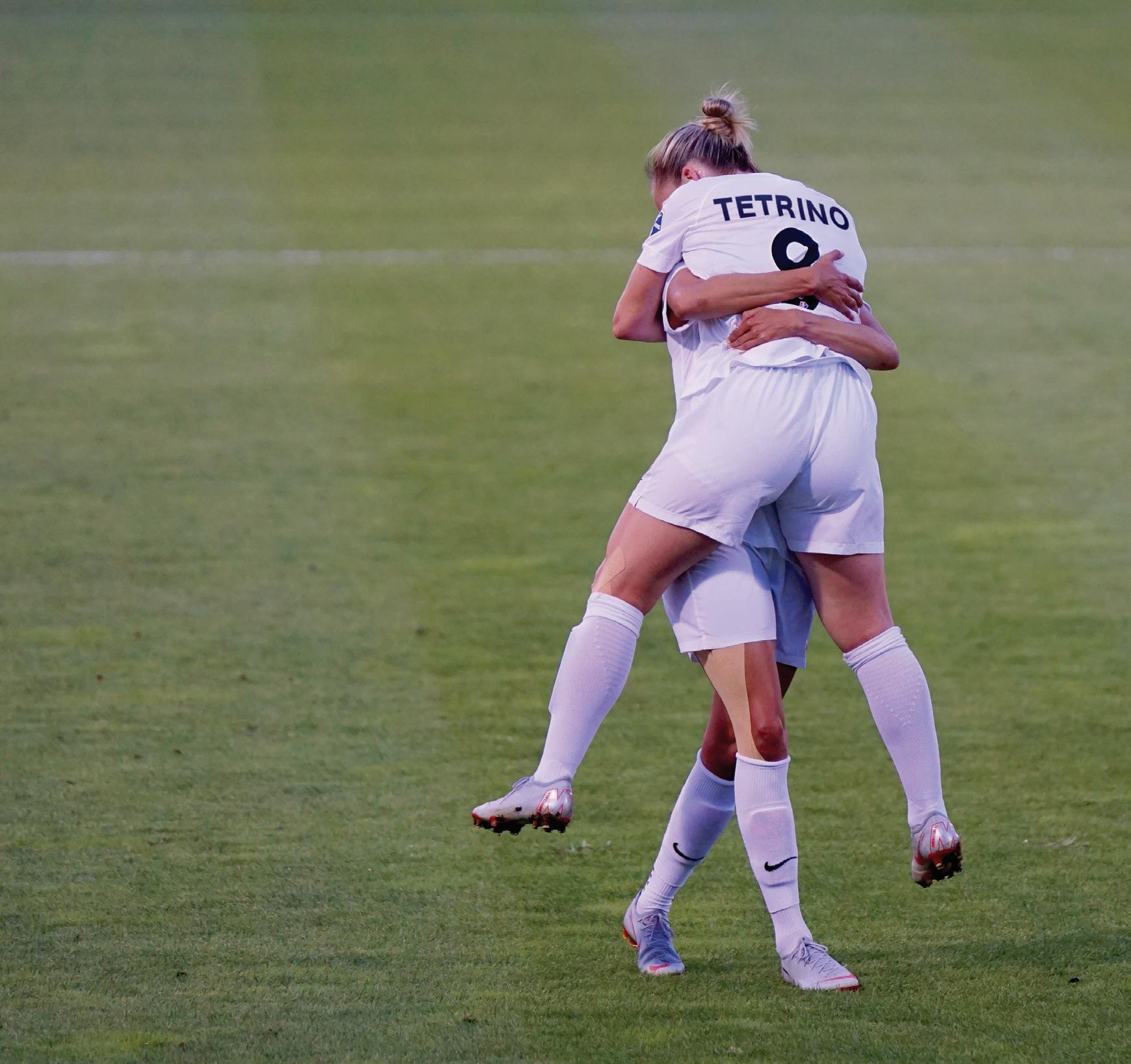
ALWAYS READ THE LABEL BEFORE USE 2022 Environmental Science AU PTY LTD Suite 206, 737 Burwood Rd, Hawthorn East, VIC. 3123 Technical Enquiries: 1800 024 209 + www.au.envu.com Tetrino® is a Registered Trademark of 2022 Environmental Science AU PTY LTD Envu and the Envu logo are trademarks of Environmental Science U.S. Inc. ©2022 Environmental Science U.S. Inc. Tetrino, a new insect control solution from Envu, offering an unmatched combination of performance, ease of use and efficiency. Delivering fast control and lasting protection against a broad-spectrum of turf insect pests with a low rate of active ingredient, Tetrino is the smart play for flexible and sustainable insect control. Learn More →
Knowing what you are paying for is something that is expected in society and it is no different when it comes to sands or soils
Soils
On the Swan Coastal Plain in Western Australia (WA) there are large amounts of sand and the majority of our golf courses and sports grounds are built on them. While every turf manager is striving to produce a consistent performing surface, it can be challenging. When selecting sands or comparing sands, it is important to work towards uniformity, even though there are many naturally occurring factors working against this outcome.
It has been a reasonably wet winter in WA and much of that rain appears to fall on game day, whether it’s AFL, soccer, rugby or golf. When sand particles are surrounded by water it acts like a lubricant, enabling the particles to move more easily. Under play or surface pressure they compact downwards and sideways, a process that reduces pore spaces meaning there is less air in the soil and increasing the strength the soil holds on to water by the increasing capillary suction. A result of this is the soil holding more water against gravity in the compacted zone increasing what is known as the field capacity of the soil.
In golf, the design of greens is critical to ensure sufficient pin placements to manage high numbers of golfers. Subtle contours and slopes can still create interesting putting surfaces while maximising surface use. Features that do not channel all play into one or two sections on the green, such as bunkers and mounds, is part of wear management. During winter, compacted profiles shed water quickly and in summer are the first to dry – not a great characteristic to manage. Trying to get water into these areas often results in overwatering and a skilled operator is required when hand-watering such areas.
Grass plants produce a lot of plant material that is broken down by soil microbes and the result is humus or a fine organic matter that increases the soil’s capacity to hold on to nutrients and, of course, moisture. This fine organic matter accumulates on the surface of the green. Every morning during the golf season, a mower and, on some occasions, a roller travels across the green. The fine particles on the surface hold moisture as we have discussed and the moisture on the surface during winter ensures the surface is close to saturation in the morning before any
drying occurs. Mowing is similar to working up a cricket wicket – add moisture then roll to work the fines to the surface then seal the surface as it dries. The surface then thins and algae can occur or just fine organics between the leaf blades, the perfect environment for Poa annua to germinate and compete.
To keep the surface draining, larger sand particles are needed in among the finer organics and clay. These finer particles can be colloidal, a term for soil particles that float in water. When a pool of water appears on the surface of a green then drains, organic matter is left on the surface. It is for these reasons why design is important to shed water from the green when heavy or consistent rainfall occurs.
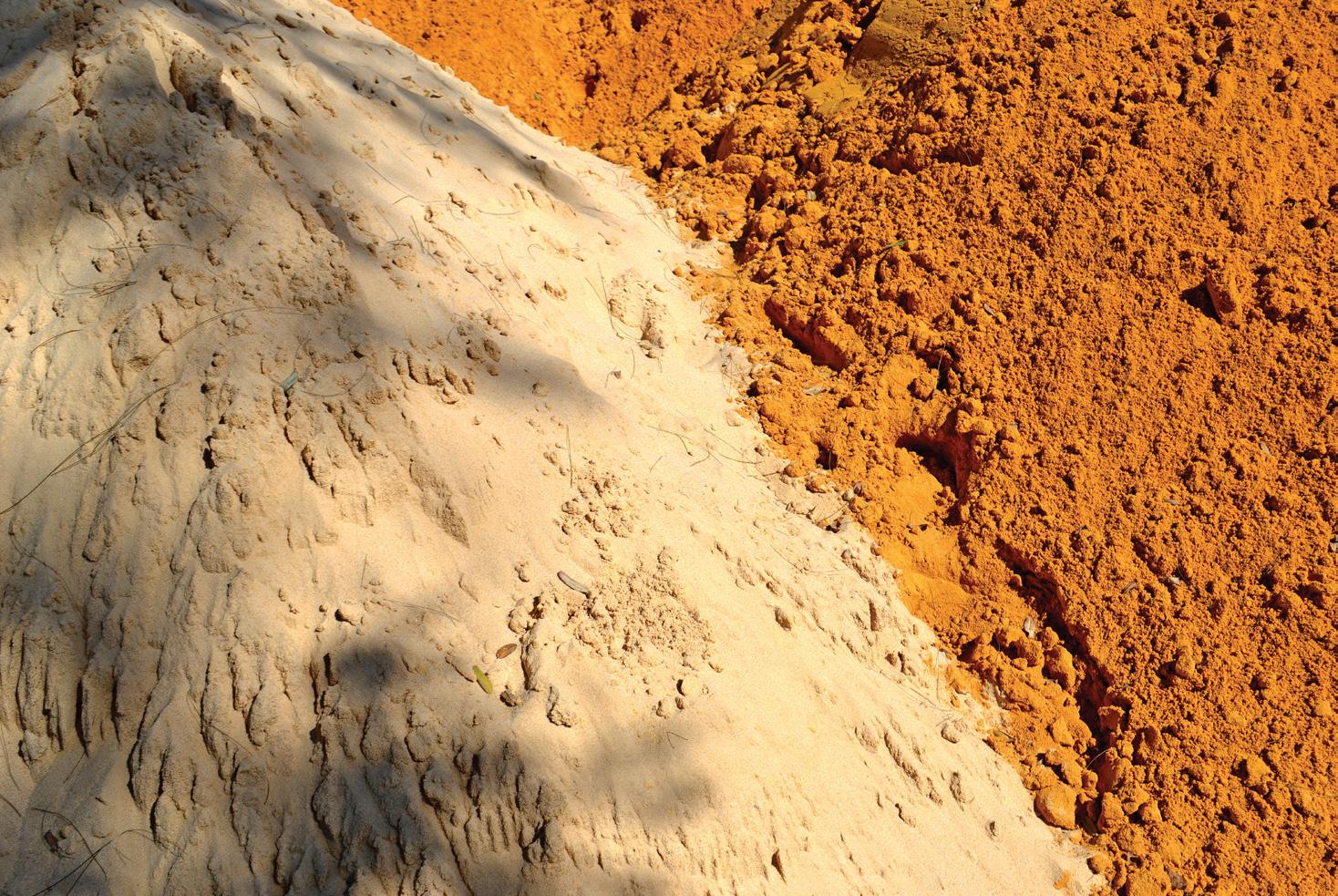
SOIL AND SAND SELECTION
Often we hear superintendents or turf managers say that the topdressing material they have had delivered is a slightly different colour or appears to crust more than the previous year’s supply. Colour and crusting are an indicator of varying sand or soil particles.
A story I often recount is a visit to a quarry over two decades ago with well-known turf educator Lin Hambleton. The purpose of the

48 AUSTRALIAN TURFGRASS MANAGEMENT 24.5 JOHN FORREST
As John Forrest writes, understanding soils and their characteristics is one of the integral pieces of the puzzle when it comes to good turf management.
consistency
Knowledge of characteristics such as particle size distribution is critical when determining a sand for topdressing or construction purposes
visit was to see where this particular, wellknown sand that was used for topdressing was mined. ‘Screened cream’ was its name and we wondered what size and configuration of screening was used.
Upon arrival at the quarry we found a loader loading a truck with a light-coloured sand. Looking around we could not see any sieves or screens that would be used. We stopped and asked the operator where we could find the section of the quarry where the ‘Screened cream’ came from. He smiled and said ‘Mate, you are in the right place, this is what I am loading’. When we asked about the screens or sieves, he once again smiled and said ‘This is it!’ My point is it was just a name not a process and as he worked along the face the texture and colour of the sand changed slightly indicating that there was variation.
QUALITY CONTROL
Knowing what you are paying for is something that is expected in society and it is no different when it comes to sands or soils. Knowledge of particle size distribution (PSD), bulk density, total porosity and hydraulic conductivity provides insight into their characteristics when used as a topdressing or construction sand.
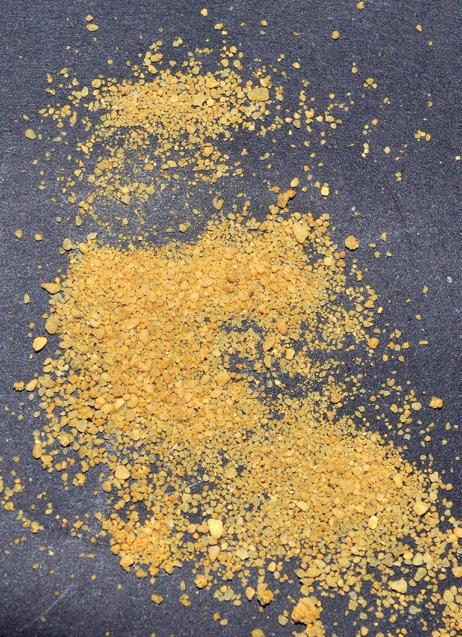
A ribbon test – where kneading soil in your hand to see how long a ribbon can be produced between forefinger and thumb – can indicate how much clay is in the soil, but this method does not help when the soil type is sand. A simple method that can be used for a quick visual inspection is to place the sand in a jar filled to about a third. Add a tablespoon of granular dish washing soap and then water,
Regular dusting helps
leaving a gap from the top of the water to the lid. Shake and let the mix settle.
Coarse particles will be on the bottom and the smaller particles on the top (the colloidal or fine particles may float for hours). Leave until next day and a clear separation of the particle sizes will be observed. Get a sample of the sand you have been using and one from your supplier, place on a level surface side by side and observe any variation. Keep a history of the sands used over time, writing date and sand type on the jar for recordkeeping.
It would be helpful to read a spec sheet from a soil supplier with information such as PSD for topdressing sands and PSD, bulk density, hydraulic conductivity and porosities for construction sands. Often we see engineering specs for PSD which adds confusion to the decision of whether the sand or soil fits. When there is a standard (USGA spec) that is consistent and known in our industry, this should be a standard that a turf manager can use to compare soils or sands. The engineering spec results measure ‘passing’ which is different to the ‘retained’ with the USGA specification. Yes, it is not that hard to convert, but clarity helps.
Consistency is needed in a topic that can be complex. If a turf manager is going to outlay a significant amount for sand or soil, knowledge on its likely behaviour or characteristics in the field is essential. Getting a sample delivered is a good idea if you are going to do a jar test, but for a more accurate assessment a specification sheet would help when comparing different sands.
RENOVATIONS AND DUSTING
At this time of the year the WA golf season has finished and profiles are drying out and putting sands to good use for renovations has arrived. During a wet season compaction is one problem, but the other is organic matter build-up in the greens. Renovations certainly help, but determining what the best type and intensity is paramount.
A simple jar test can be used for a quick visual inspection of a sand’s characteristics
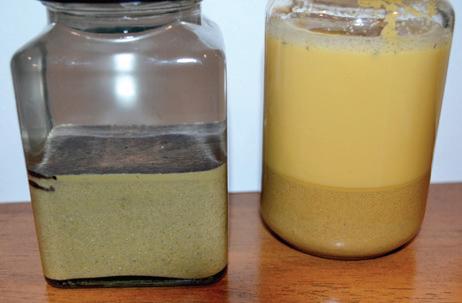
Recently we tested a high-use sports ground using a double-ring infiltrometer. All locations on the ground had just been renovated with 19mm tines at 180mm centre spacings. We compared the highest wear areas with lower used parts of the soccer and AFL grounds after the hollow-tining. The AFL goal mouth closest to the change rooms was 24mm/hr and the highest midfield area was 418mm/hr. It shows that one annual renovation on highly compacted areas is not enough.
In some cases, golf clubs have been looking at why their greens have been soft through the winter. The amount of rain is certainly a big factor, but the other is the accumulating organic layer in between sand layers. These layers absorb water on occasion to the point that black layer can form.
Layers are more pronounced when infrequent topdressing has occurred instead of regular dustings. Dustings do not happen as often as they should due to moist sand, weather conditions or play commitments. Using walk-behind spreaders can minimise any downward pressure on the green during damp conditions. Soil or sand bays that keep the weather out is also important.
A dusting is a small amount of sand and does not need rubbing in, so no leaf damage will occur. When a golfer putts they will only notice the odd grain of sand on their ball after it has been applied. As it becomes a regular part of the program the greens firm and drain better and pitch marks become less obvious.
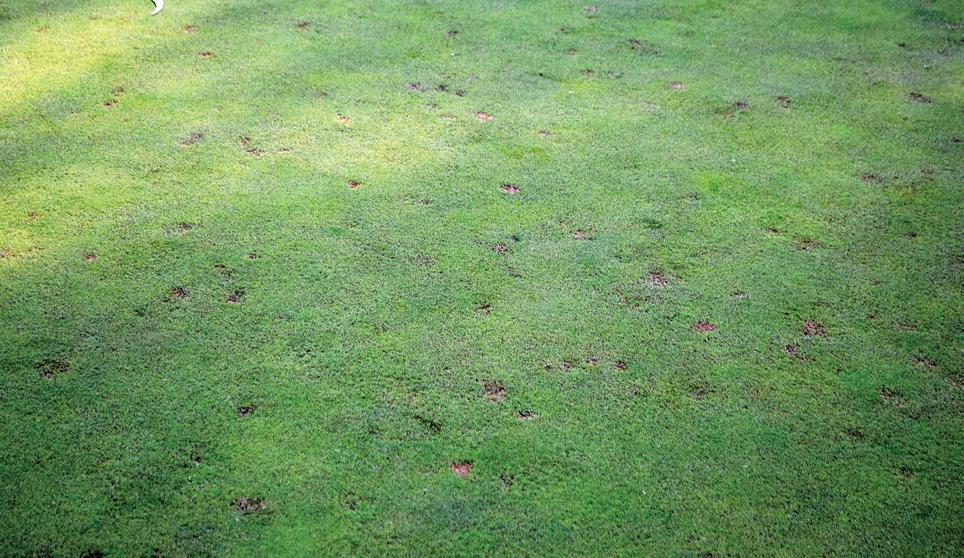
SEPTEMBER-OCTOBER 2022 49
to firm up a profile and reduce ball marks and footprinting
Alternative approach
As an industry, now more than ever, we need to be sharing environmental stories/projects to promote the good that golf can provide and change wider community mindsets from negative to positive. Recently, Eastern Sward Golf Club, a small nine-hole public golf course in Melbourne’s south east, has garnered attention across the industry for a study it is about to embark on which aims to determine the effectiveness of managing golf greens without the need of artificial inputs.
Eastern Sward is home to course superintendent Shaun Lehane who has come full circle in a way. Lehane played at the club as a junior, while his father has been a member for the last 30 years. With stints at the likes of Keysborough, Victoria and Heidelberg golf clubs in Melbourne under his belt, Lehane was invited to interview for the position of course superintendent there and duly got the job in August 2020.
It was at the interview he met PGA member Garth Cusick, who has been a consultant at Eastern Sward for about five years, and they started having a discussion on how the course could be better managed from an environmental perspective. Lehane, who had
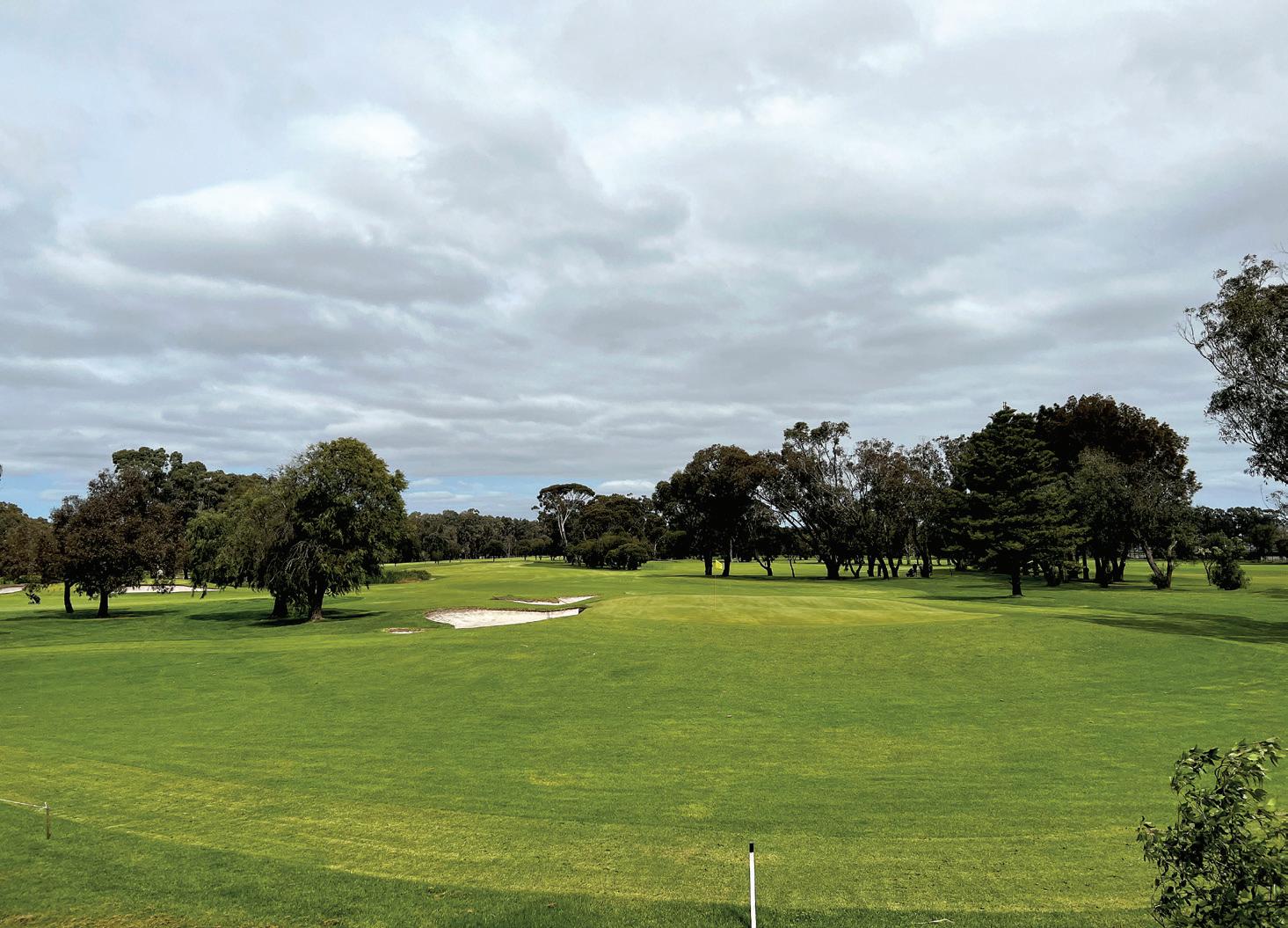

attended a seminar in April 2017 conducted by respected plant pathologist and soil microbiologist Dr Mary Cole, mentioned to Cusick that by using a more natural approach they could not only reduce the use of chemicals but potentially eliminate the need for coring and sanding.
Their journey began by learning about vermiculture (worm farming) and they sourced three composting ‘Hungry bins’ manufactured in New Zealand. That led to learning more about biochar and the making of it on-site. Shortly after, they constructed their first Johnson-Su bioreactor which is a specially designed composting system. Its design allows the material to be composted aerobically, allowing complete biological breakdown of compost materials and resulting in a microbially-diverse, fungal-dominant compost product.
The compost end product can be applied as an extract (compost tea), mixed as a slurry to coat seeds or be applied directly as a soil amendment. The compost from Johnson-Su bioreactors has been found to improve seed germination rates, improve soil water infiltration and water retention by helping to increase soil carbon content and increase plant health and growth rates (University of New Mexico, 2017).
Eastern Sward now has two bioreactors, one built about 15 months ago and the other six months ago using recycled chemical shuttles. The shuttles were lined with shade cloth and in the centre a series of 90mm pipes were placed for aeration prior to the bioreactor being filled with feedstock. The pipes only need to remain inside for 48-72 hours and provide a structure until the fungi bind the feedstock together.
A vast array of feedstock was used to fill the bioreactors, with each containing 1.5 tonnes of material. A different ‘mix’ of feedstock and layering was used when the second bioreactor was constructed (pictured at the left of the photo opposite, with pipes poking out the top). Lehane says the goal is to have a 30:1 carbon to nitrogen ratio in the layers, with an emphasis on keeping them aerobic and moist. When temperatures decrease enough, after the thermophilic stage (below 26.6oC), worms are added to the pile, both ‘red wrigglers’, which are non-native but specific to worm farms, and locally-sourced worms.
Carbon sources for the feedstock include leaves, wood chips (aged 5-6 years and mulched), hay, straw and lucerne (aged animal feed supplement) and biochar which is made
50 AUSTRALIAN TURFGRASS MANAGEMENT 24.5 ENVIRONMENT
Melbourne’s Eastern Sward Golf Club is set to undertake a unique study to see whether golf greens can be managed without artificial inputs.
on site. Nitrogen sources include course cut rough (no chemicals applied), fruit and vegetable scraps (obtained from a local fruit shop to feed animals and the worm farm) and manure which is hand-selected from on-course animals (more on that below).
The material is then left to compost for a minimum of 12 months, with the pile watered daily (about 4-6 litres) to keep it moist. Watering is done either via rain water or potable water, with the latter ‘treated’ prior to being applied to the pile. Potable water contains a multitude of chemicals, but it’s the chlorine which kills microbes. During the height of summer when potable water is mostly used, the club has a system of three 60-litre garbage bins filled with water which they rotate between. The bins are placed in sunlight and over a 24-hour period the gasses are vented off prior to the water being used. It is hoped in the future to store water captured from the clubhouse roof in order to reduce reliance on potable water.
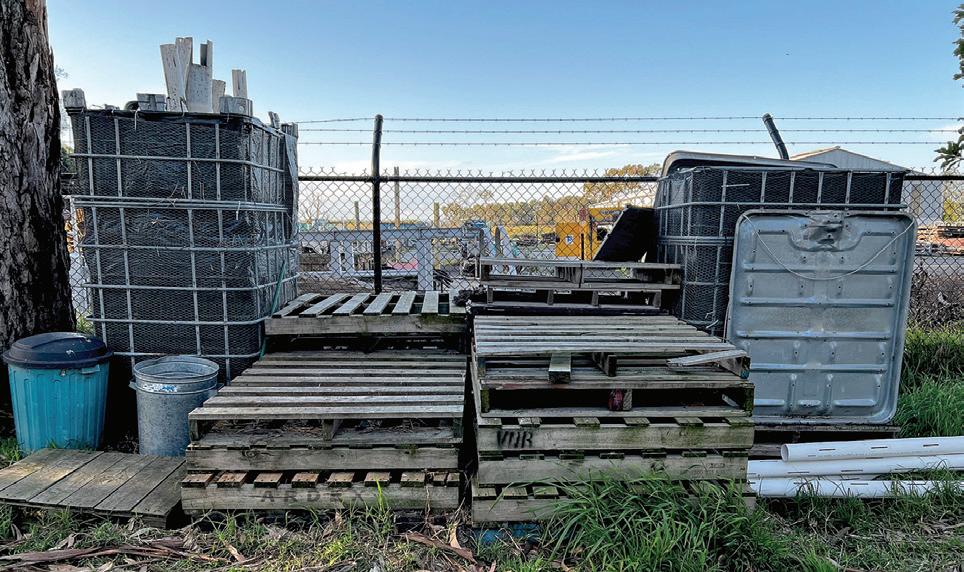
OUT OF PLAY AND ROUGH AREAS
Another experiment that Lehane and Cusick are running at Eastern Sward is using animals
to maintain the out-of-play areas. The club initially gave them permission to bring two goats on site, however, five three-month-old kids arrived and have never left. They won the hearts of the members and the population of ruminant animals grew as the club allowed them to fence off more out of play areas. During the growing season the herd size can be up to 160 animals within the 10 hectares of fenced area. Sheep, goats, cows, ponies, alpacas and roosters have all called the golf club home at some point.
The animals are supplied by the Strong Hearts Animal Sanctuary which not only receives the animals for the RSPCA and local councils, but also rehabilitates and re-homes them. Eastern Sward acts as a ‘rehabilitation venue’ and over 300 different animals have been and gone in the three years the program has been in operation.
The club has also reduced the amount of rough area around the course. Course architects OCM where contracted to provide a course master plan, with the focus on the
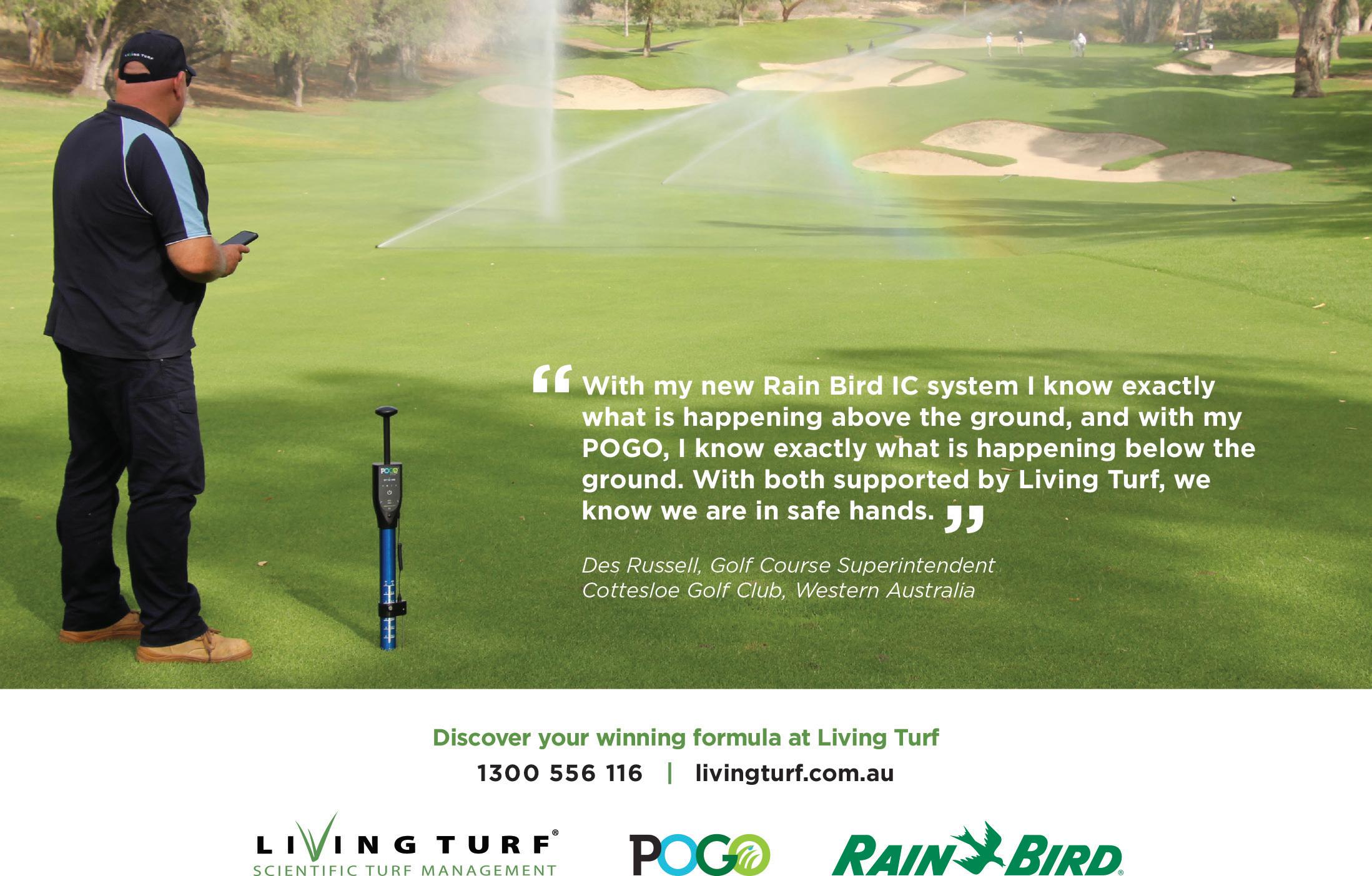
SEPTEMBER-OCTOBER 2022 51
The Eastern Sward course has not seen any synthetic fertiliser used for over 12 months and is about to embark on a trial which is hoping to prove that no artificial inputs are required to manage golf greens
Eastern Sward has two Johnson-Su composting bioreactors which will produce the compost tea used in the trial
‘all abilities’ and ‘beginners’ markets. The reduction of rough areas – down to 75 per cent fairway/25 per cent rough from originally a 60/40 split, with the hope of being 90/10 in the future – and having just three cutting heights (green, fairway/tee and rough) has seen the course play easier from the tee and get more difficult towards the green.
Less machinery and less down time has resulted in a more efficient and easier to maintain course according to Lehane and Cusick. All trees on the course have also been trimmed up to four feet to improve not only rough cutting but also member safety when searching for balls. Future plans include covering the bases of the trees with their own compost to achieve a ‘Masters pine straw’ look as well as improve their health.
The out of play areas now exhibit a finish as good as a mower can do but with the added benefit of producing manure which is used in the compost made on site. The
ultimate goal is to create a compost using grass cut from the playing surfaces with ‘chipped’ waste products either supplied from on-site or other local courses to create another form of compost that can be used to enhance the 23 hectare site and thus creating a circular economy.
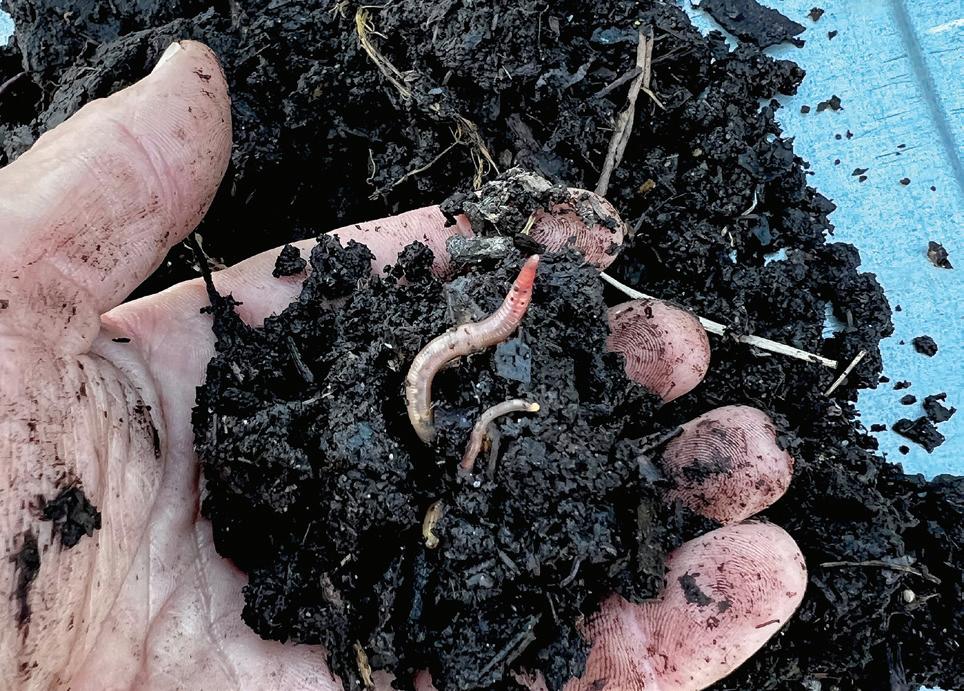
GREENS TRIAL
The Eastern Sward course has not seen any synthetic fertiliser used for over 12 months and is about to embark on a major trial which is aiming to prove that no artificial/synthetic inputs are required to manage a golf green.
Under the supervision and in partnership with Dr Cole, Lehane will conduct a peerreviewed trial to see whether greens can be managed solely with microbial inputs. The trial is expected to start in October 2022 once soil temperatures rise above 18 degrees and will involve three 1m2 plots on three separate greens. Each plot will be sprayed
with a compost tea generated from the on-site Johnson-Su bioreactor.
Initial samples of the green and compost mix will be taken to verify organic content, biological diversity and population, with analysis to be done by AgPath laboratories. If there is not enough organic matter present (>1.5 per cent) in the greens, Lehane will apply dry compost about one month prior to supply the microbes with nutrition. The goal is to have a compost tea containing a desired 1:1 ratio of fungal to bacteria population. The rates of compost tea applied will be determined by results from the Johnson-Su reactor analysis.
Compost from the first bioreactor constructed, which has been composting the longest, will be used for the greens experiment. Compost in this reactor has decreased in size by 30-40 per cent both by natural settlement of the feedstock as well as being consumed (if left the compost would eventually be consumed by its inhabitants). If just used for ‘compost tea’, only the worms will need to be screened out and moved into the second reactor and the product is used ‘wet’. If using the product as a ‘dusting’ it would be dried prior to application.
The trial will run for 12 months and Lehane and Cusick will be sharing the results with the industry as it progresses. They are hoping that the trial will prove that such alternative methodologies do have a place in golf course management and provide a live experiment that people can see and participate in and learn the systems and processes required. They are always happy to share their knowledge on current and future systems, whether it be building, operating, costs, biological counts or outcomes on the playing surfaces.
Both are extremely thankful to Eastern Sward for allowing them to use their 23 hectares and Dr Cole for joining them in conducting the first of what they hope will be many experiments which could not only alter current practices but also provide transferable knowledge for others in the ‘growing business’. They are also currently seeking partners to conduct other experiments specifically for the agricultural industry, targeting the types of feed best for farm animals grown using their compost teas as not only an inoculate for the seed but as a foliar for current ground cover.
Editor’s Note: Kate Torgersen wishes to thank Shaun Lehane and Garth Cusick for their input with this article. If you have a positive environmental story you would like to share through the pages of Australian Turfgrass Management Journal, please contact Kate via email kate@envirogolf.com.au.

During the growing season, a population of about 160 animals help maintain about 10 hectares of the 23-hectare Eastern Sward site
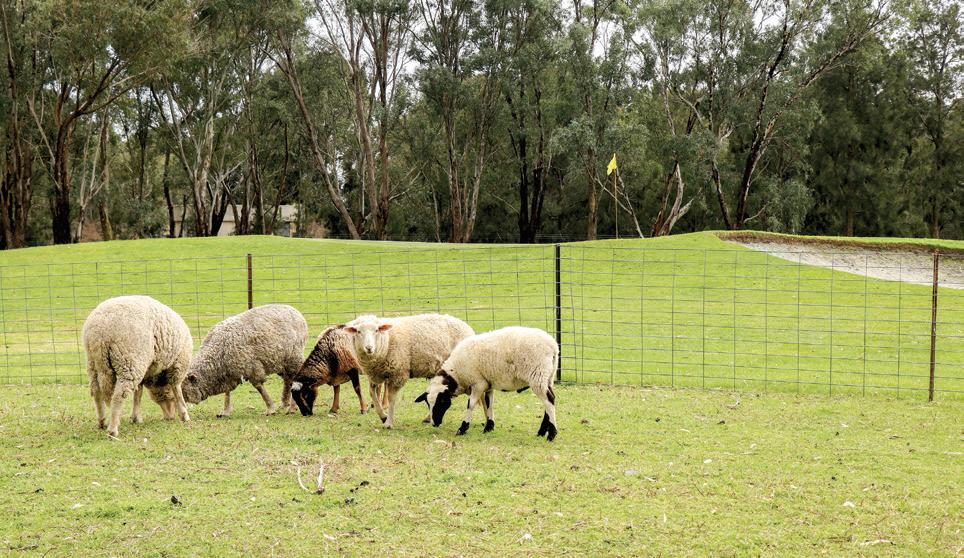
52 AUSTRALIAN TURFGRASS MANAGEMENT 24.5 ENVIRONMENT
The Johnson-Su bioreactor produces a microbially-diverse and fungal-dominant compost product
PHOTO: AUSTRALIAN GOLF MEDIA

Clarke finds his
happy place
Ask anyone in the Australian turf industry that knows Brenton Clarke (CSTM) for their ‘two cents worth’ on him and his turf management acumen and you will understand why he is the leadership profile for this edition of Australian Turfgrass Management Journal. From early career lessons to prioritising and balancing turf and family life, Brenton has had an interesting journey in golf course management.
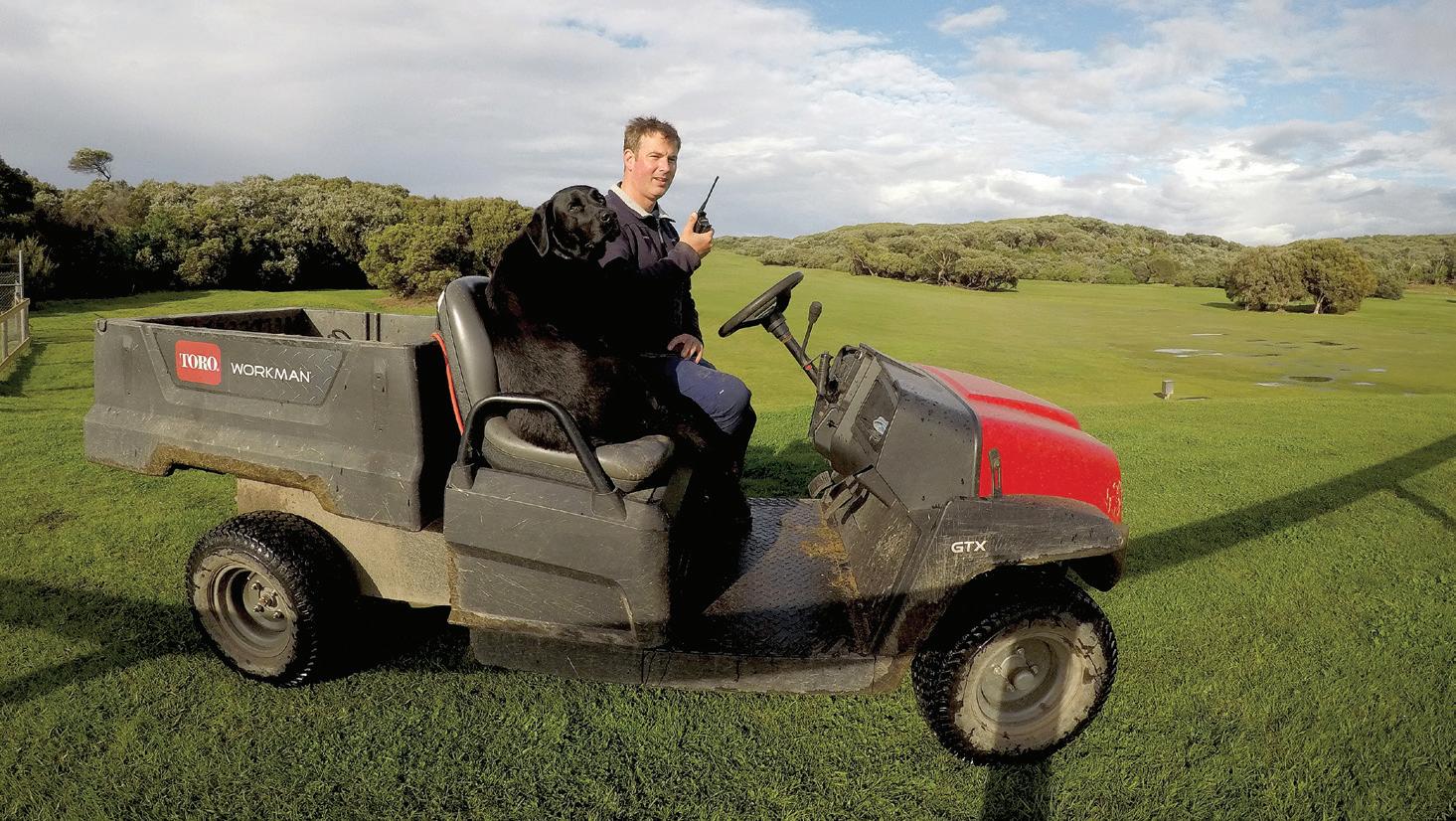

Brenton (33) is superintendent at Warrnambool Golf Club on Victoria’s Shipwreck Coast and last month notched up his second year in charge there. It is Brenton’s first superintendent posting in a 15-year turf management career which has also seen him hold senior roles at Kooyonga, Blackwood and Box Hill golf clubs, as well as spend time plying his trade overseas. I think you’ll agree that the insights that Brenton shares on the impact that supportive and encouraging leadership can have on your team and club are definitely worth the read…
Tell us about your journey in turf management and how you came to be at Warrnambool Golf Club (WGC)? I was in Year 10 and looking at doing some work experience. I had a huge passion for sport and at the time was playing junior cricket at Woodville District Cricket Club. It was 2004 and an opportunity to work a week at Adelaide Oval presented itself. Adelaide Oval was my Mecca and then curator Les Burdett was a huge idol. Meeting the man who had achieved so many great moments, I was starstruck. During the week I was guided by his assistant at the time Damian Hough (now curator) and it was an amazing experience which ultimately set me down the turf management path.
I completed high school and embarked on a horticulture Certificate before starting a traineeship at Blackwood Golf Club. Even though the sport of golf didn’t appeal to me at the time, I enjoyed the diversity of the role and the results that could be achieved. I learnt many positive skills from long-serving superintendent Stephen Pellatt.
In 2015 I moved from Adelaide to Melbourne in a bid to push myself and grow my knowledge. I landed at Box Hill Golf Club which would offer all that and more. With a range of issues that had just occurred, a new management team had been formed and within three months I found myself as foreman. Continually striving for more, I gave superintendent Josh Leyland no option but to create a new role for me in construction and budgeting. My knowledge of construction and team leadership grew immensely and I also completed my Diploma in Sports Turf Management during this time.
After nearly three years at Box Hill, I had to return to Adelaide for personal reasons, but was fortunate enough to land the assistant’s role at Blackwood. I knew I was going to lose the advantages I had in Melbourne education wise as the tertiary study options in Adelaide are limited as well as job prospects due to it being a much smaller market. So I started to think outside the box and eventually came about an opportunity in the UK.
54 AUSTRALIAN TURFGRASS MANAGEMENT 24.5
In his continuing series of leadership profiles, ATM columnist Ben Gibson catches up with Warrnambool Golf Club superintendent Brenton Clarke (CSTM).
MANAGEMENT
Brenton Clarke took on his first superintendent posting at Warrnambool Golf Club in 2020 and hasn’t looked back since
In 2017 I was part of the ASTMA’s Future Turf Managers’ Initiative at the Sunshine Coast conference and connected with presenter Lee Strutt. Lee was then head greenkeeper at the Royal Automobile Club in England and mentioned there was a junior greenkeeper position available. I originally was trying to get one of the other staff to do the internship, but after he decided it wasn’t for him I ended up applying. It was a pretty crazy thing to do, but the six months I was there was worth every bit as I created a whole new network overseas. When I landed back in Adelaide I moved down a step to a 3IC position at Kooyonga Golf Club, which would prove crucial in gaining my eventual position at WGC.

Even though my time was short there, Kooyonga’s status and reputation certainly aided in the interview process. As I have realised through many interviews, most people only focus on the last place you’ve worked, but once you have been interviewed a few times you can learn how to control the conversation. For me, that was bringing the discussion back to my past experiences at Box Hill and Blackwood where I developed my core values and passion for being a turf manager. I was also starting a university degree (Bachelor of Agriculture and Technology, majoring in Sports Turf Management) at the time, which I’m still doing. Running a golf course and fitting in two units a semester isn’t easy, but I know this will set me up for the next step in my career.
Who has influenced your career and why? My grandfather was the first person to open my eyes to the world of horticulture. He had a well-renowned garden in the spectacular Adelaide Hills and even had a type of Clivia named after him as he cultivated his own species. His passion for plants has run through my whole family, so my father was a huge advocate in finding a path in horticulture (he didn’t follow his dream and slightly regrets it). He is someone who has shaped me as a person and as a leader.
The other key influencer was my former boss at Box Hill, Josh Leyland. He believed in me and encouraged me to further my career, adding extra values to my work ethic and behaviour. Josh showed me how being the ‘boss’ can mean being friendly, supportive, strong and, most importantly, genuine. Josh led a team through testing times and created a culture where staff felt safe and essential, while at the same time made continual improvements on the course. Through his actions Josh deserved and commanded respect, not simply demanding it because of the title he held. That is where I think a lot of managers fail and the reason why a lot of people in positions below leave in frustration.
Since being elevated to the superintendent role, Clarke is continually fine-tuning his leadership skills
Clarke relishes the diversity of his superintendent role and the results that can be achieved working as a team
What has been a big focus for you this year, post the COVID-19 pandemic? May I start by saying that WGC were amazing throughout the pandemic. Despite mandatory lockdowns, course staff were not stood down and the club made every effort to help them. The club showed great leadership during hard times. This year has brought many new challenges, none bigger than the build of a new clubhouse. Even though the club received a government grant of $2 million, the club has tightened its budget on course. Despite that, with a proactive committee and working closely with manager Ashlee Scott, I’ve managed to forecast a maintenance machinery budget for turnover to new machinery for six years ahead.
With upgrades to the maintenance shed last year, the club continues to invest in staff facilities and culture. In addition, the club has just invested in a whole new irrigation shed with Lowara pumps to be installed shortly. Our newly appointed course architect, David Flood, is also currently working hard behind the scenes with myself and the committee to enhance the course.
How do you balance the demands of turf management and your personal life? I’m yet to experience the dual demands of family and work life, but that will all change next year as my partner and I are expecting our first child. Looking back, I feel I’ve given up a lot to get to where I am. I have not been a great partner to others in the past, as I’ve often put work before them and my career selfishly before others too. Moving locations can be hard on relationships and I’ve definitely gone through some tough times, but now finding a supportive workplace and living in a country town has had huge rewards. As my parents always say “If you’re happy, we’re happy” and I can honestly say that I’ve never been in such a happier state.
The balance of demands will become interesting next year, though I feel the committees I work for and the manager I have do recognise that family comes first. Delegating will become critical and something I will be working on. Delegating doesn’t make you a weaker person or leader – it involves great trust and can reap great rewards. Hopefully with the team I have we can still uphold the values we have established and
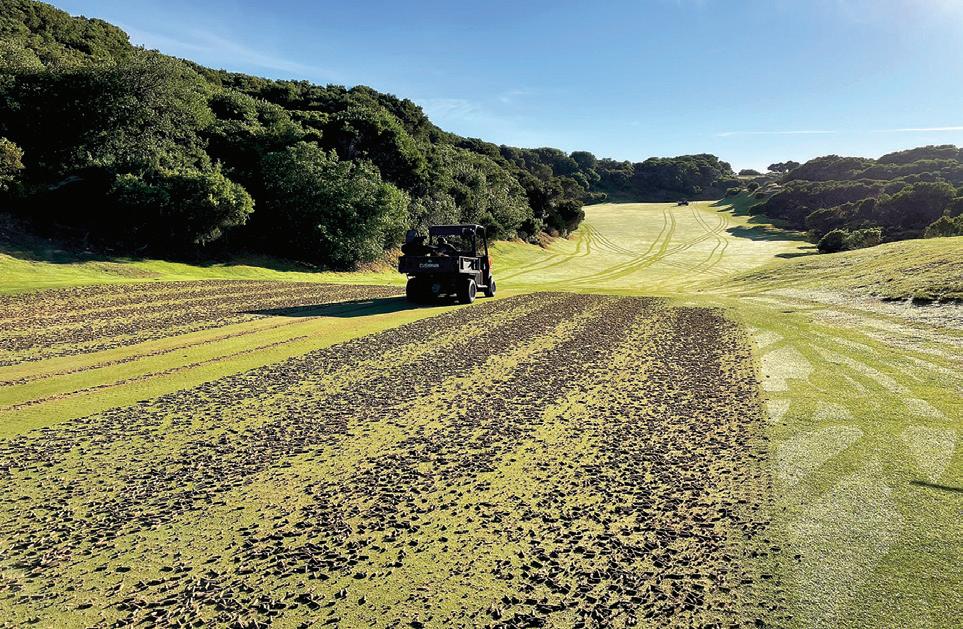
SEPTEMBER-OCTOBER 2022 55
continue to build on our successes, while still having time away to dedicate to family.
Has your family shifted your perspective and has it influenced the way you lead? My family had a business as I was growing up and the way my father cared for and interacted with his staff was amazing. However, they lost everything because they were not ruthless enough when they needed to be. They lived every second of their lives thinking about the business and stress took its toll on them severely. I would like to think I’ve taken a bit from their experiences. It’s important that you don’t take everything home with you and have that disconnect to freshen up the mind.
What is at the top of your priority list as a superintendent? My top priority is what I would want if I was on the groundstaff being led by another superintendent – a safe environment to come to work, a place where my views are considered and be supported by management, plus be proud of the product I am producing. I feel I’m required to stand up for the team underneath me. If one person doesn’t hold the link in the chain you are trying to make, it weakens the whole team. As most find out early in their career, there are experts around every corner, but people that can create strong culture and leadership are becoming rarer by the year it seems. As an industry we are crying out for more people, but we also need to consider the people we have and how we can retain them.
You have a relatively small crew. How do you structure and delegate your work?
I have a morning board that myself or the assistant will write tasks up on for the day. Then I’ll go through competitions, tee times and machinery issues prior to everyone
heading out. We all have two-way radios for communication and charts in our lunchroom showing if holes have had work on them. If staff are sick or away, the team can still see what has and hasn’t been done.
How would you describe your leadership style? I try to be consistent, firm when I need to be and supportive as much as I can to people that allow it. I want to have a legacy that I was easy to approach, able to have difficult conversations with and yet still walk away with the respect of everyone around me. I was someone who strived for perfection when starting here, though now working with a small and diverse team, including volunteers, I feel my soft skills have been key to creating relationships and building a strong culture.
I’m someone who won’t ask another to do something that I won’t do. There is nothing worse than being asked to do a job because leaders above you are too lazy or don’t like that job. That brings down enthusiasm and burns any beneficial team culture.
How do you juggle that balance between people and turf in your leadership? I have yet to refine this. I probably allow people to rule over the turf at times; we are in a time where people are hard to find and the turf is doing okay. Juggling priorities isn’t a great way to look at it. Yes, we are paid to look after the ground, but just as much investment is put into our people. So priority one is people and second is turf. I guess juggling what is essential and what is not efficient is something I stay strong on, which makes it easy for me to fall back on those values as the product produced needs to be held at a high level.

What are some of the biggest challenges facing the turf industry at the moment? The biggest issue is getting people in the industry,
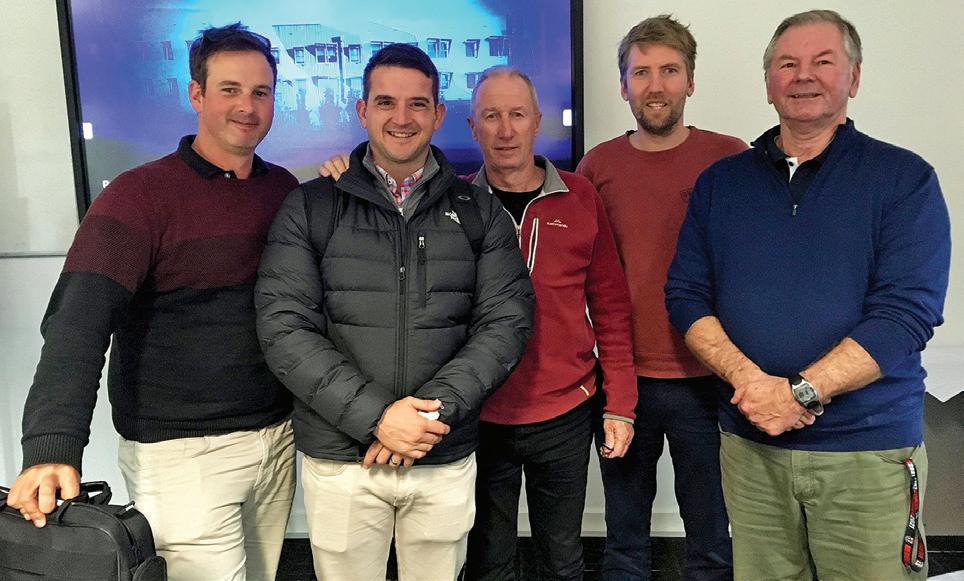
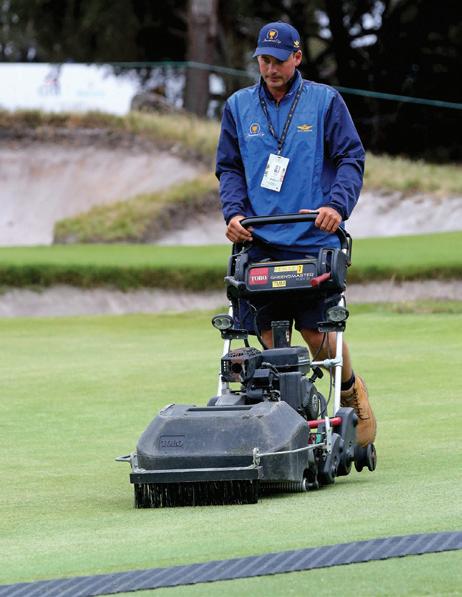
holding them and giving them education to excel. Some states have pulled the sports turf education completely which is a shame.
Are you currently looking for staff? If so, what is your pitch? Not currently, but with appraisals starting soon and restructuring our grounds team I know there will be more opportunities around the corner. With an exciting construction project ahead in 2023, the crew will have the ability to grow their knowledge and experience. As for a pitch, if you haven’t been down to the course in Warrnambool, it’s a must. I had no appreciation until I got here how incredible the layout, views and environment is.
Finally, any advice for those coming through the industry looking for their next opportunity? Do not be scared to approach other turf managers. Ask if there are roles coming up. A good leader will make you stand up taller, supporting you and make you into a better leader. If you feel you’re not good enough or not supported enough maybe it’s time to find a new position. Moving to new roles will help you find the way you want to lead one day. Everyone does it differently. Volunteering under some of the great leaders within the industry creates that mentorship and networking at the same time.
A huge advantage I had when applying for the job at Warrnambool was that they weren’t worried I had multiple positions previously. They saw I had a drive to find a course of my own and they realised that having a highly driven, ambitious superintendent would create an environment for all the staff to see promotion too. Businesses have shifted from the old mentality of working your way from the bottom to the top and being in the one place for 20-plus years. Businesses now are happy to see consistent growth and rejuvenation.
56 AUSTRALIAN TURFGRASS MANAGEMENT 24.5
Clarke volunteered at the 2019 Presidents Cup to help broaden his industry experience
MANAGEMENT
Despite reaching his goal of becoming a superintendent, Clarke (left) is continuing to invest in education by undertaking the Bachelor degree, completing two units a semester while continuing to run the golf course
Knock Stem Weevils Over


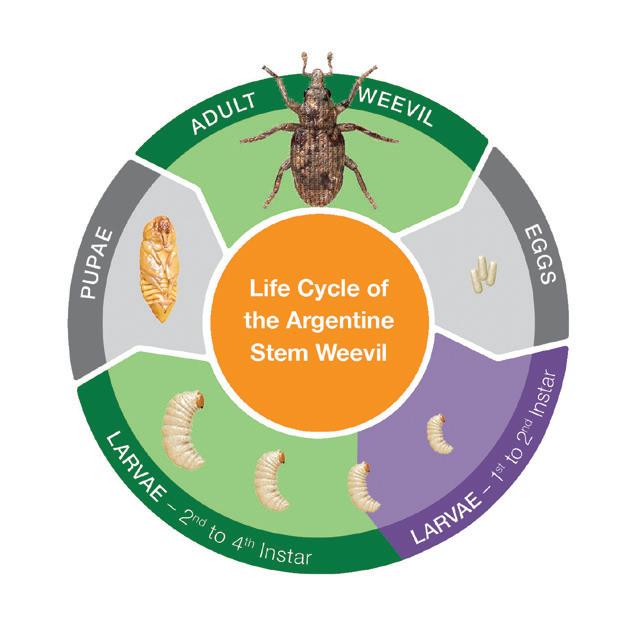


FLAME_SYN6454_8/21
Argentine Stem Weevils can be very difficult to control as there can be multiple lifecycle stages present at the same time. So, the key to ASW control is to target both adults and larvae and you can achieve this using PROVAUNT® Turf Insecticide and SPINNER® Turf Insecticide. When partnered with each other, PROVAUNT® and SPINNER® offer highly effective control by managing adults and all larvae stages, while also providing excellent management opportunities with overlapping life cycle stages. Syngenta Australia Pty Ltd, Level 1, 2 Lyonpark Road, Macquarie Park NSW 2113. ABN 33 002 933 717. ®Registered trademark of a Syngenta Group Company. ™Trademark of a Syngenta Group Company. All products written in uppercase are registered trademarks of a Syngenta Group Company. ©Syngenta 2021. AD 21-382. For more information call Syngenta Customer Service on 1800 022 035, contact your Syngenta Agent or visit www.syngentaturf.com.au
Dunsborough Lakes GC, WA
Having plied his early career in the UK and South Africa, Oliver Bell is coming up to five years as superintendent at Dunsborough Lakes Golf Club in the idyllic southwest of Western Australia.
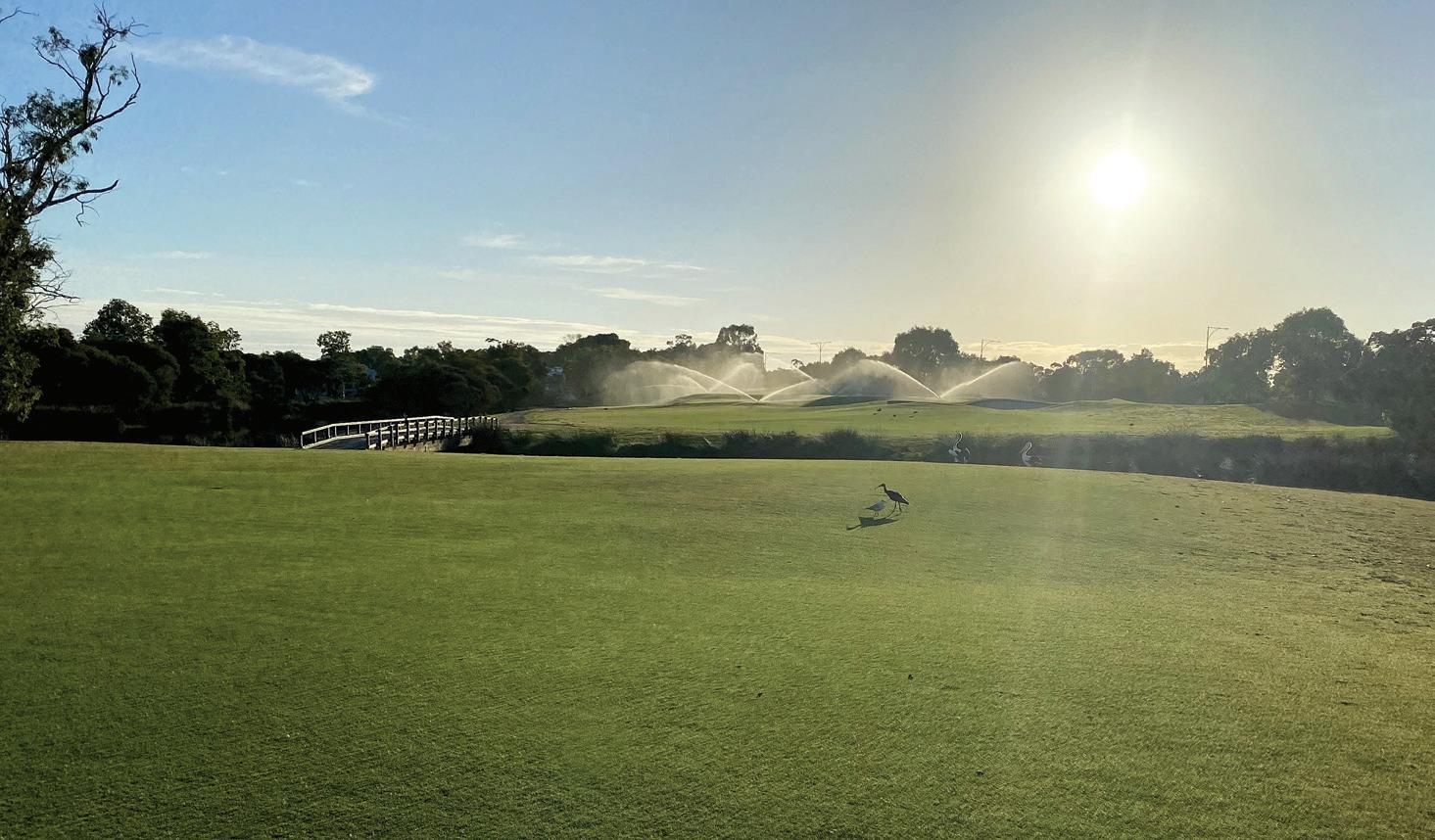
Superintendent: Oliver Bell (49).
Nickname: Olly.
Family: Wife Natalie, daughter Jasmine and son Alex.
Social media: Instagram @superollybell. Years as a superintendent/years in the industry: 14.5/30.
Association involvement: GCSAWA. Qualifications: Diploma in Sports Turf
Management (Ryde TAFE), Certificate IV in Frontline Management. Major hobbies/past-times: Hiking, reading and learning piano with my daughter.
Where in Australia is Dunsborough Lakes GC? Dunsborough Lakes is situated in the township of Dunsborough which lies in the southwest region of Western Australia about
three hours’ drive south of Perth. The region is known for its natural beauty, abundant vineyards, great beaches and world-renowned surf breaks.
Tell us a bit about your background and how you started out in the turf industry. I’m originally from the UK and at the age of 19, after a couple of tries at different professions, I decided I wanted to do something outdoorsy. At the time I was living with my parents in Cape Town, South Africa. My aunt in the UK happened to know a head greenkeeper in West Sussex, England who was looking for an apprentice. At that stage I knew very little about golf but I was keen to give it a go, so flew over and really took to the job. I worked on that particular course for 2.5 years before moving on to a larger course also located in southeast England for a further three years. During this time I completed my apprenticeship and gained my trade certificate.
After five English summers I moved back to sunny South Africa and ran an 18-hole
The Dunsborough Lakes course crew with superintendent Oliver Bell third from right
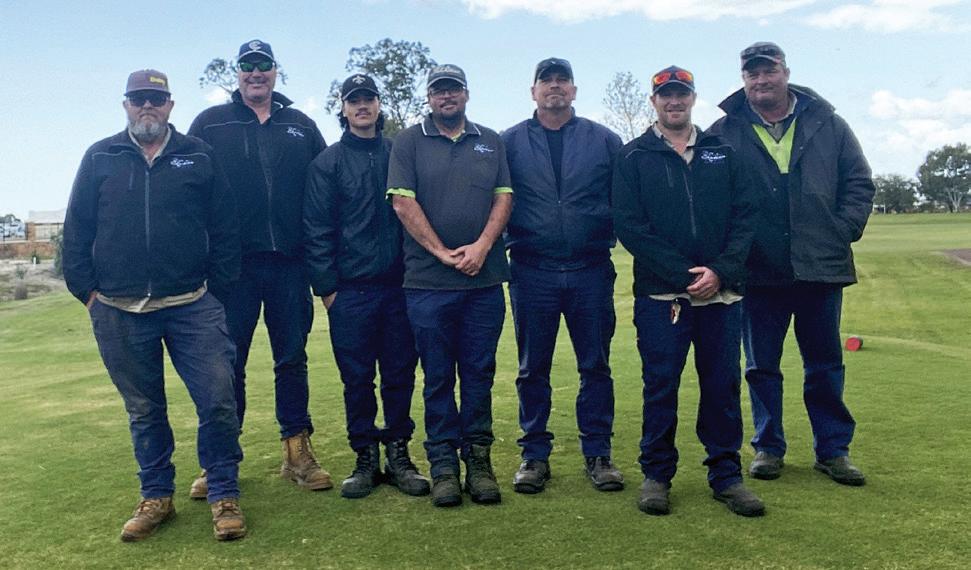
58 AUSTRALIAN TURFGRASS MANAGEMENT 24.5 REGIONAL PROFILE
championship course in Cape Town called Mowbray Golf Club for 10 years. Agronomically it was very different from the UK, mainly as I hadn’t experienced working with warm-season grasses before and irrigation played a far more significant role. The fundamentals of the job were essentially the same, however, in South Africa I had a far larger maintenance team and was able to keep the course manicured to a very high level.
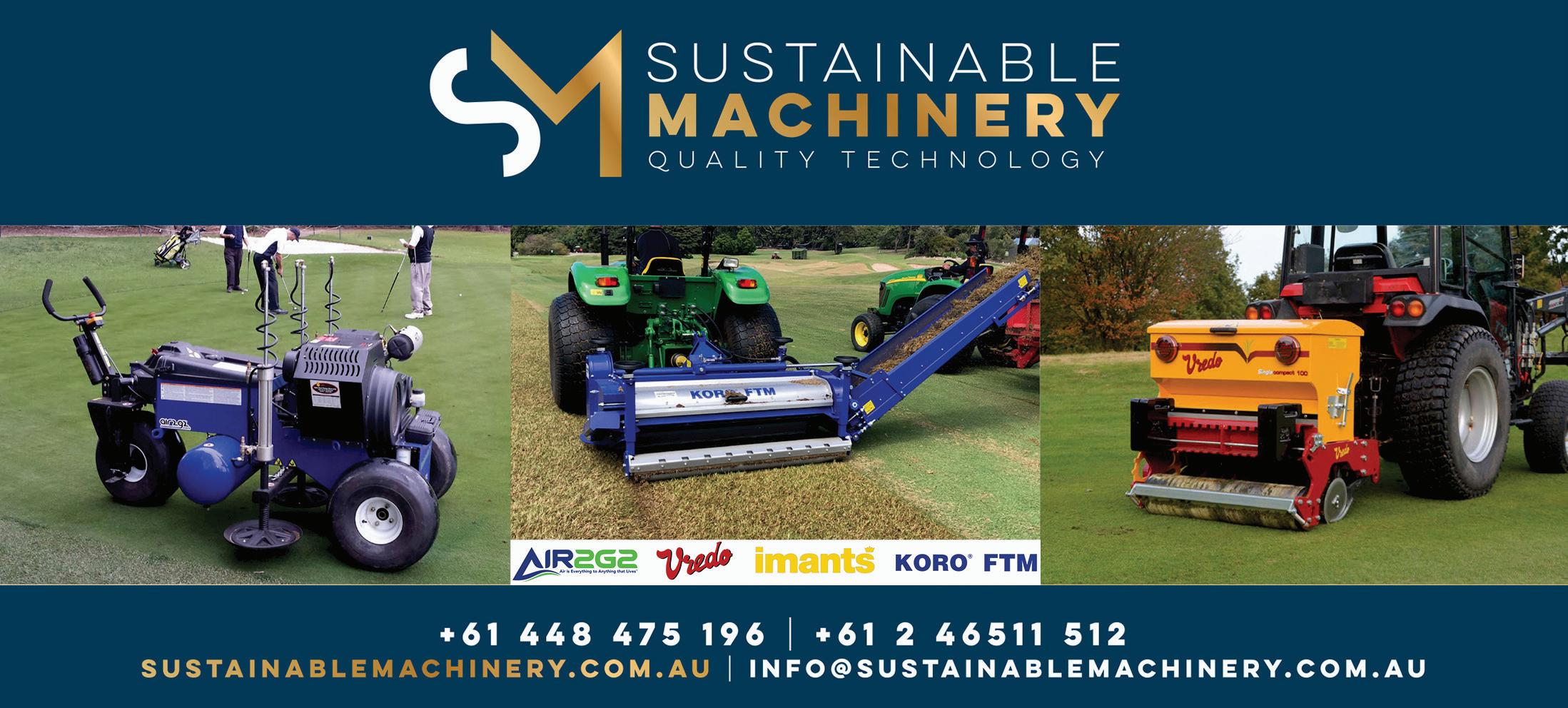
Things were certainly interesting working in South Africa and there was never a dull moment. One story that comes to mind was our course marshal who rode around on a motorbike followed by his 80-kilogram bullmastiff called Havoc! Needless to say any trespassers had to be prepared to run that gauntlet!
After your time in South Africa you headed to Australia. Had working in Australia always been on your radar? I met my wife in Cape Town and she had family living in Melbourne and was keen to relocate Down Under. It sounded like a great opportunity and we got the ball rolling applying for permanent residence. I didn’t have a job to come to, but I kept an eye on the AGCSA website and felt reasonably confident of finding work. About a year before coming to Australia my wife and I applied for a Skilled Sponsorship Visa and began a fairly lengthy migration process. Once our visas were granted we were given a short time frame to enter Australia and have been here ever since.
On arrival we initially stayed with my sisterin-law in Melbourne. I then started to look for
greenkeeping roles and landed a job as a senior greenkeeper at The Australian Golf Club in Sydney. We bought ourselves a little Holden Barina, packed our worldly possessions at the time (which was basically clothes as the rest of our belongings were being transported on a ship) and headed off to Sydney. Unbeknown to us rentals were in high demand at the time so we literally stayed in budget hotels and lived out of our suitcases while I started work. Eventually we secured a unit and settled in Sydney.
How were your initial experiences of greenkeeping in Australia and was it much of a change from what you had been used to in the UK and South Africa? Coming over from South Africa, with similar climate and grass types, the transition to Australian conditions was relatively straight forward.
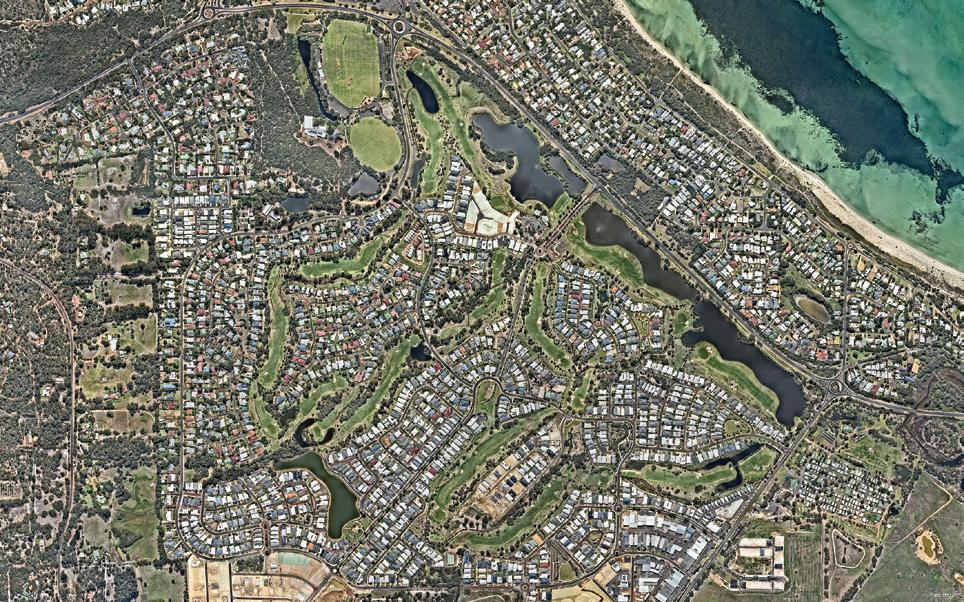
Initially I had to take a step back professionally
which allowed me to settle in and get used to the way things worked in Australia. After 18 months at The Australian I moved on to Terrey Hills Golf and Country Club in Sydney’s northern suburbs. In the early stages of my time there I was promoted to assistant superintendent and put myself through a Certificate IV in Horticulture (Turf Management).
Upon completion and in recognition of the work I’d put into the course, I was awarded a full scholarship to continue my studies and complete the Diploma in Sports Turf Management. This was certainly a highlight of my early days of greenkeeping in Australia. The Diploma course was very useful with regards to polishing my managerial skills. During my time in Sydney I also completed a Certificate IV in Frontline Management.
Apart from the obvious weather differences between the UK, South Africa and Australia, the major difference would be labour costs.
SEPTEMBER-OCTOBER 2022 59
Dunsborough Lakes is situated in the township of Dunsborough which lies in the southwest region of Western Australia about three hours’ drive south of Perth
The Dunsborough Lakes course wends its way through a major residential estate. Initially owned by the developer, about six years ago the members banded together to buy the club and take over operations
PHOTO: NEARMAP
South Africa is very much like the US where access to labour is cheaper, making for more of a supervisory and less-hands on role compared to the UK and Australia. Overall, however, the approach to the job is the same –to present the course in the best way possible with the resources available.
From Sydney you then headed west, landing at your current course Dunsborough Lakes. How did that come about and what attracted you to the role? At the time Sydney was getting astronomically expensive with few opportunities to further my career. The superintendent role at Dunsborough Lakes was advertised and after an initial online interview the club was good enough to fly me over to look at the course and meet in person. I liked the feel and beauty of the southwest (it reminded me of Cape Town) and I thought the golf course had a lot of potential.
You have been in the role coming up to five years now – the move must be agreeing with you. I’ve kind of come full circle and am
back to working with a smaller team, much like my early years in the UK. It’s far more hands on which is the aspect of greenkeeping that I find most enjoyable. The course has come along nicely and Dunsborough is a lovely part of the world to live and raise a young family.
Give us a quick overview of the Dunsborough Lakes course and some of its unique characteristics. The course sits within the Dunsborough Lakes Residential Estate. Initially the course was owned by the estate developers and was used as a drawcard for selling blocks of land. About six years ago the members banded together, bought the golf club and took over the operation. I think what sets the course apart from neighbouring courses is its size and the fact that on certain holes the course has a very links-like feel which is unique to the area.
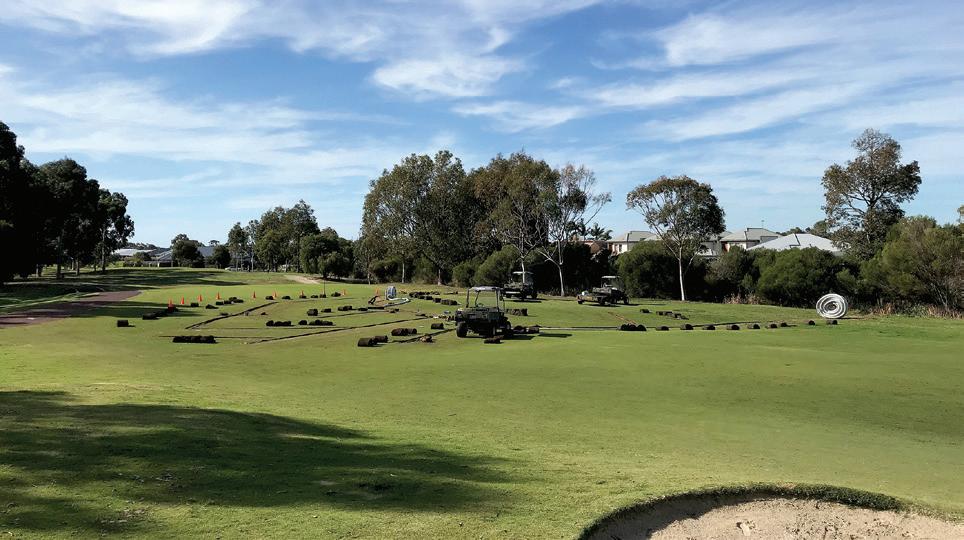
Is it an easy or hard facility to manage? In a sense it’s a difficult course to manage as there are no real shortcuts from A to B, so it is quite time-consuming to get around.
Being surrounded by houses does present challenges with noise (no super-early starts) and public access can be problematic as the course isn’t fenced. Having been built on lowlying farmland, drainage is also problematic over the heart of winter. Weed grasses also present a problem and are difficult to control due to the course being surrounded by numerous types of lawns which invariably seed/creep onto the course. On the flip side, the climate down here is a lot kinder than Perth with less extremes in temperature.
Since taking over as superintendent, what key changes have you implemented to the way the course is managed? My initial goal was to correct the pH of the site which was way out of kilter. Once we made in-roads with this there was a significant improvement in fertiliser uptake and turf quality. We have also done a tremendous amount of drainage work over the past four years which has helped playability over the wet winter months. I’m also bit of a neat freak and making sure the ‘one percenters’ are correct is important to the way I manage the facility. I’ve been very fortunate with the team I manage/inherited. Collectively they have a lot of experience and the majority have been employed at the golf club between 10-15 years.
Outline any significant projects that you have undertaken during your time at the helm. So far in my tenure we have re-built or extended three tee complexes and three individual tees, installed roughly 1600 lineal metres of herringbone drainage on our fairways, constructed several limestone paths, planted about 100 trees and built a 1000m2 bentgrass nursery.
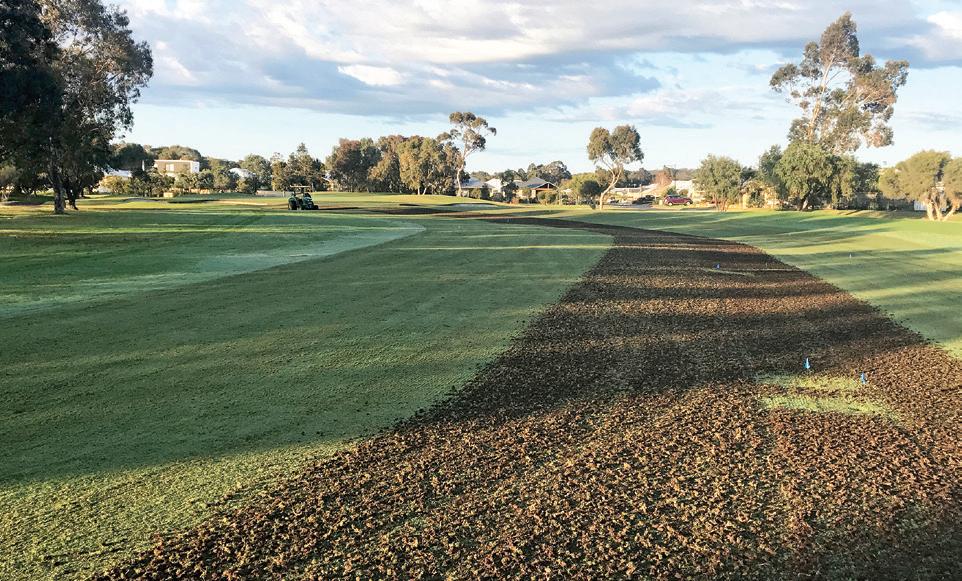
Any special environmental considerations that you have to incorporate into the management of the course? All water collected in the estate runs through the course and is stored in our dams to be used for irrigation in the summer. We run water tests on a regular basis to ensure any water that leaves the course in the wetter winter months meets local compliance.
How did the COVID pandemic impact your operations and the club? We were in one of the luckiest places in the world during the COVID pandemic. All up I think we had about two weeks of lockdown and my staff and I were allowed to continue working throughout taking the necessary precautions.
60 AUSTRALIAN TURFGRASS MANAGEMENT 24.5 REGIONAL PROFILE
Having been built on low-lying farmland, improving drainage on fairways has been a significant focus for Bell and his team over the past couple of years to improve playability over winter. Pictured is the 3rd
Dunsborough’s Wintergreen couchgrass fairways are hollow cored in spring using 19mm tines with the cores then dragged in
How is Dunsborough Lakes GC faring in the water management stakes? We are fortunate in that we are able to store roughly 130 megalitres on site and our main irrigation dams re-charge continuously for a couple of months after the rain stops. We also have five working bores that are licensed to extract 40ML per year. That being said, it is a large site and we tend to irrigate in the proximity of 1ML/ night over summer. At times our dams have been extremely low and it takes a lot of careful management to ensure we get through the growing season with surplus water.
How has Mother Nature treated the course in recent times? Last summer was the hottest on record in Dunsborough, however, we generally stay about five degrees cooler than Perth. For the majority of summer we get a fairly strong sea breeze due to our proximity to the coast which has a significant drying factor on the course. Generally, the course stands up well but we need to be vigilant and monitor for dry patch in the greens. Soil moisture probing and hand watering is carried out daily and we apply regular wetting agents and penetrants both manually as well as injecting directly into the mainline irrigation overnight.
The one product I couldn’t manage my course without is... Calcium, in its different
forms, plays a vital role in keeping the turf healthy at Dunsborough Lakes due to location and soil structure.

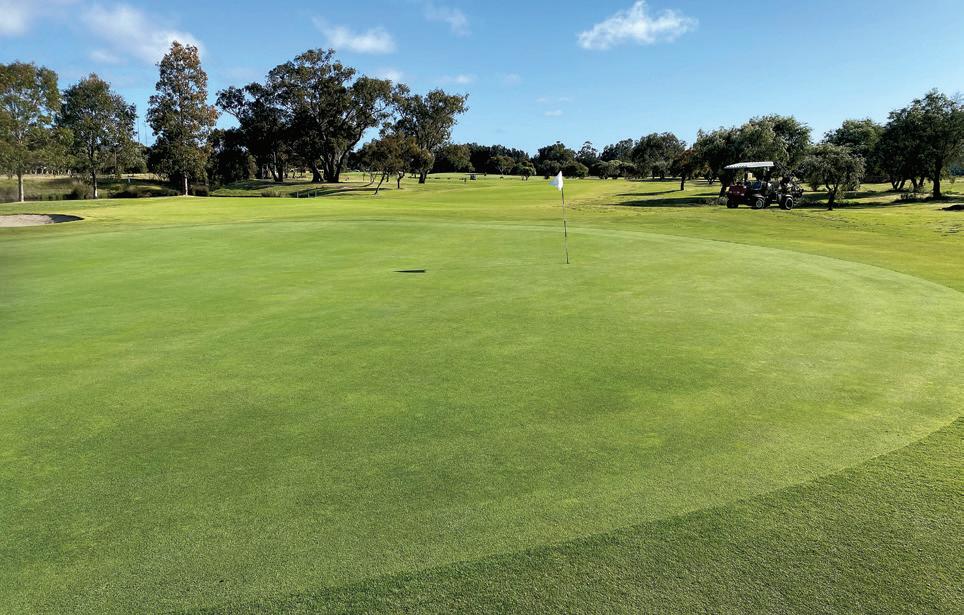
Do you use volunteers to assist with the management of the course? We are very reliant on volunteers and without them we definitely wouldn’t be able to present the course to the current standard. They have a ‘Busy Bee’ on Tuesday mornings and up
to 15 volunteers turn up and get stuck into minor arborist work, selective spraying, path maintenance and caring for the clubhouse gardens. We also have a dedicated team who cut roughs on a regular basis.
What have you got in your shed? Kubota 3680 rough mower, Toro 6500D fairway verticutter, Toro 6700D fairway mower, 3 x Toro 3150 greens mowers, Toro 4000D rough
SEPTEMBER-OCTOBER 2022 61
The Dunsborough Lakes greens are a 1019 bentgrass/Poa annua mix and are cored twice annually
mower, Toro 3500D Sidewinder, Toro eTriflex 3360, Turf Tech sweeper and verti-mower, John Deere corer, Toro Sand Pro, Toro TX1000 trencher, Toro Pro Pass 200 spreader, Toro 2300 topdresser, Ryan turf cutter, Massey Ferguson and John Deere 4610 tractors, Case 50 tractor and frontend loader, Ford 1520 tractor, Kubota tractor and backhoe, Yale forklift, 2 x Kubota RTV X900s, 4 x Toro Workman (three MDXs).
What’s your favourite piece of machinery and what’s on the wish list? My favourite piece of machinery would be our sprayer. It’s a great machine and really is the one piece of kit that’s hard to be without. We are hoping to replace our ageing fairway mower this financial year. Generally, we are pretty well placed machinery wise. I guess a new turf cutter would be nice too as we use it a fair amount for drainage and construction projects.
Best advice you have received about being a superintendent/greenkeeper and who
gave it to you? Be patient as you can’t hurry nature. This advice was given to me by the first superintendent I worked under and it still rings true. Often it takes months, if not years, in sticking with programs or letting a large project settle to see the results really flourish. I think in this fast-paced world we all want instant gratification and at times this can put the pressure on to try and rush things that really can’t be rushed.
What is the most challenging aspect of a superintendent’s role today? Without a doubt the expectations. When I started greenkeeping in 1990 we cut our greens at 4mm which was standard at the time. Very often we are sitting on a knife’s edge over the summer which is a precarious place to be for months on end.
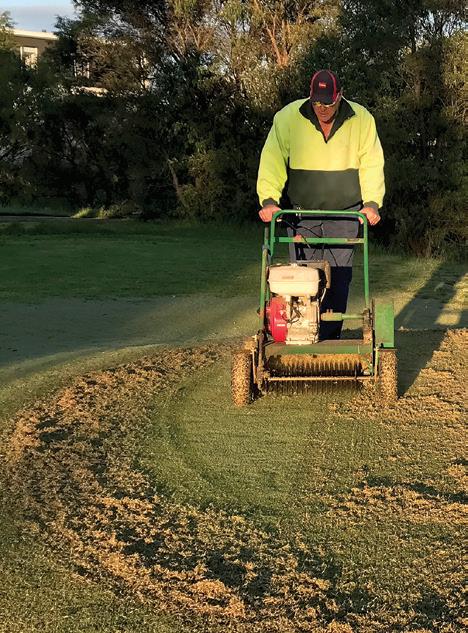
What have you worked on personally in recent years to improve your skills? The biggest aspect I’ve worked on is personal growth and being consistent in my approach to management.
AT A GLANCE – DUNSBOROUGH LAKES GC, WA
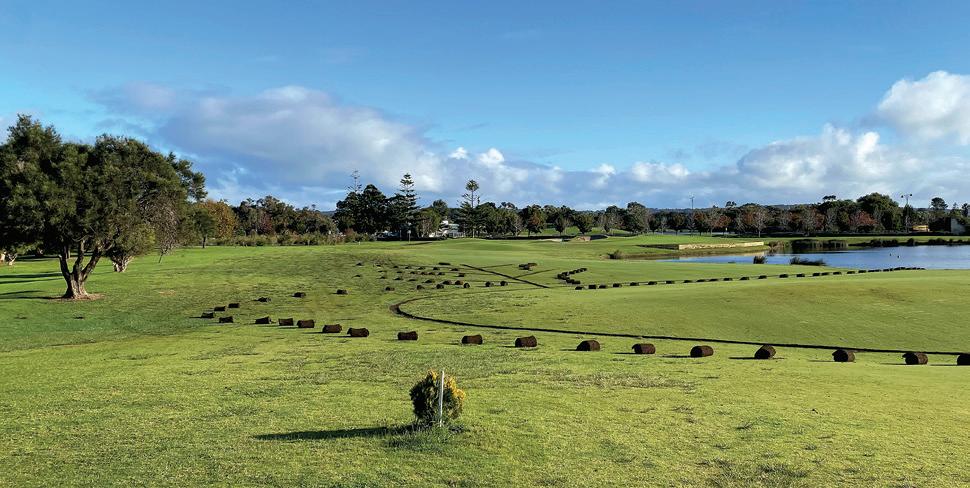
Course specs: Par 72, 6200m. Site covers 81 hectares with 40ha of maintained turf. Greens are a 1019 bentgrass/Poa annua mix, tees and fairways are Wintergreen couchgrass and roughs (non-irrigated) are a mix of whatever grows.
Members/rounds: Approx. 400/50,000.
Major tournaments: Annual Pro-Am. Course budget: $260,000 (excl. wages).
Staff structure: Oliver Bell (superintendent), Justin Boynes-Butler (assistant superintendent/irrigation technician), Wayne Butler, Dean Ebert and Darren Nisbet (groundsmen), Nick Carroll (parttime groundsman) and Seamus Demou (apprentice). We also have a strong volunteer contingent that perform minor arborist work, selective spraying, path maintenance and rough mowing.
Climate/rainfall: Mediterranean climate – hot dry summers, cold wet winters. We tend to get 600-800mm of annual rainfall generally from June to September.
Terrain/soil types: Combination of parkland/ links. Acid sulphate soils (sand/clay combination).
Water sources/irrigation system: Ten dams on site with a Rain Bird irrigation system.
Cutting heights/regimes: Greens 2.7mm-3mm, tees 9mm, fairways and green surrounds 11mm, primary rough 25mm and rough 50mm.
Major disease pressures: On the greens, in spring we experience dollar spot and a touch of rhizoctonia. I generally remain on a preventative program from spring until autumn, rotating fungicide groups. In the second half of summer I have experienced
What gives you the most job satisfaction and what has been the most rewarding moment during your time at Dunsborough Lakes? It’s a great feeling when driving around the course on a Friday afternoon thinking the course looks good. It doesn’t happen all the time which makes it particularly pleasing when it does. The club won Regional Course of the Year at the WA Golf Industry Awards a couple of years ago which was very pleasing and rewarding for all involved.
Being a superintendent can be unforgiving but ultimately rewarding. What keeps you coming back every day? Over time I’ve learned to view greenkeeping as a bit like building an intricate jigsaw puzzle. We constantly chip away adding pieces until the whole picture forms. We enjoy the picture for a bit then start again on a slightly different puzzle.
anthracnose and sodium-induced pythium generally brought on by a lack of rain and elevated sodium levels in our storage dam water. To counteract this we have built calcium applications (foliar) into our greens nutritional program. We also apply gypsum monthly to assist with sodium reduction.
As for the couchgrass (tees and fairways), I tend to leave it to its own devices. We do experience winter fusarium and some patch diseases, but generally these are superficial and non-disruptive.
Renovations: We hollow core greens every spring and autumn generally using 8mm or 12mm tines. All couch surfaces are aggressively scarified each spring using fairway verti-cutting reels set at a 5mm depth. We core fairways each spring if feasible using 19mm tines, dragging in the cores.
62 AUSTRALIAN TURFGRASS MANAGEMENT 24.5 REGIONAL PROFILE
Above: About 1600 lineal metres of herringbone drainage has been installed on the Dunsborough Lakes fairways in recent years. Pictured is the 18th hole. Right: All couch surfaces are aggressively scarified each spring
ASTMA CERTIFICATION PROGRAM
The ASTMA congratulates the following sports turf managers who have achieved certification and can proudly use the ‘Certified Sports Turf Manager’ (CSTM) designation after their names…
Tim Allen The National Golf, Belgium
Dean Bailey Rosanna GC, Vic
Shane Baker Mosman Park GC, WA
Brett Balloch Anglesea GC, Vic
Ed Barraclough Cardinia Beaconhills GC, Vic
Mark Bateman Kooringal GC, Vic
Tim Bayard Evergreen Turf, Vic
Duncan Begley Horizons Golf Resort, NSW
Nathan Bennett The Royal Adelaide GC, SA
John Berthon St Georges Basin CC, NSW
Paul Bevan GTS, Qld
Shane Bisseker Tablelands Council, Qld
Robert Bloom Pelican Waters, Qld
Andrew Boyle GTS, Vic
Justin Bradbury Camden GC, NSW
Nathan Bradbury Nuturf, NSW
Harry Brennan Dubbo City Council, NSW
Brendan Brown The Sands Torquay, Vic
Fraser Brown Lake Karrinyup CC, WA
Ben Bruzgulis Cronulla GC, NSW
Hamish Buckingham C’wealth GC, Vic
Chris Burgess Yarrawonga Mulwala GC, Vic
Greg Burgess K&B Adams, Vic
Jacob Burridge Victoria GC, Vic
Jason Bushell Rowes Bay GC, Qld
Aaron Cachia Toronto CC, NSW
Stuart Campbell Maroochy River GC, Qld
Brad Carey Riversdale GC, Vic
Patrick Casey Kalgoorlie GC, WA
David Cassidy The Cut, WA
Brian Cattell Wagga Wagga CC, NSW
Peter Cawsey Eastwood GC, Vic
Paul Chalmers Tamworth JC, NSW
Brenton Clarke Warrnambool GC, Vic
Dan Cook The Australian GC, NSW
Lincoln Coombes RACV Royal Pines, Qld
Phillip Cooper GTS, NSW
Dion Cope Redland Bay GC, Qld
Mick Cornish Cazaly’s Stadium, Qld
Shaun Cross Byron Bay GC, NSW
Joshua Cunningham All Outside, NSW
Bruce Davies CIT, ACT
Luke Diserens Roseville GC, NSW
Nicholas Douglas Cranbourne GC, Vic
John Downes Regional Turf and Hort, Qld
Mark Doyle Hume City Council, Vic
Cameron Dunn Woolooware GC, NSW
Peter Dunn Federal GC, ACT
Ben Evans Ryde TAFE, NSW
Tim Fankhauser ASTMA, Vic
Timothy Fewster Doncaster BC, Vic
Peter Fitzgerald Belmont G&BC, NSW
Aaron Fluke NSWGC, NSW
Matthew Foenander Keysborough GC, Vic
Jason Foster Riverway Stadium, Qld
Jason Foulis HG Turf, Vic
Patrick Fraser Green Options, NSW
Peter Fraser Hervey Bay G&CC, Qld
Adam Fry Kooyonga GC, SA
Ryan Fury Killara GC, NSW
Jake Gibbs Elanora GC, ACT Danny Hack Wellington Shire, Vic Cameron Hall Kew GC, Vic
Gareth Hammond Terrey Hills GC, NSW Brendan Hansard Kew CC, NSW
Dean Hardman Indooroopilly GC, Qld Nick Harris Wentworth Club, UK
Marcus Hartup Vattanac Golf, Cambodia Mitch Hayes Living Turf, Qld
Martyn Hedley Landscape Solutions, Qld Matthew Heeps Evergreen Turf, Vic Luke Helm Meadowbrook GC, Qld Tony Hemming Optus Stadium, WA
Kirsty Herring Mackay Regional Council, Qld Tim Hoskinson Cairns GC, Qld Ian Howell Bonnie Doon GC, NSW Rhys Hunichen Atlas Golf Services Vic Jay Infanti Eastern GC, Vic Nick Jeffrey St Joseph’s College, Qld Mark Jennings Racing Victoria, Vic Steven Johnson Al Mouj Golf, Oman
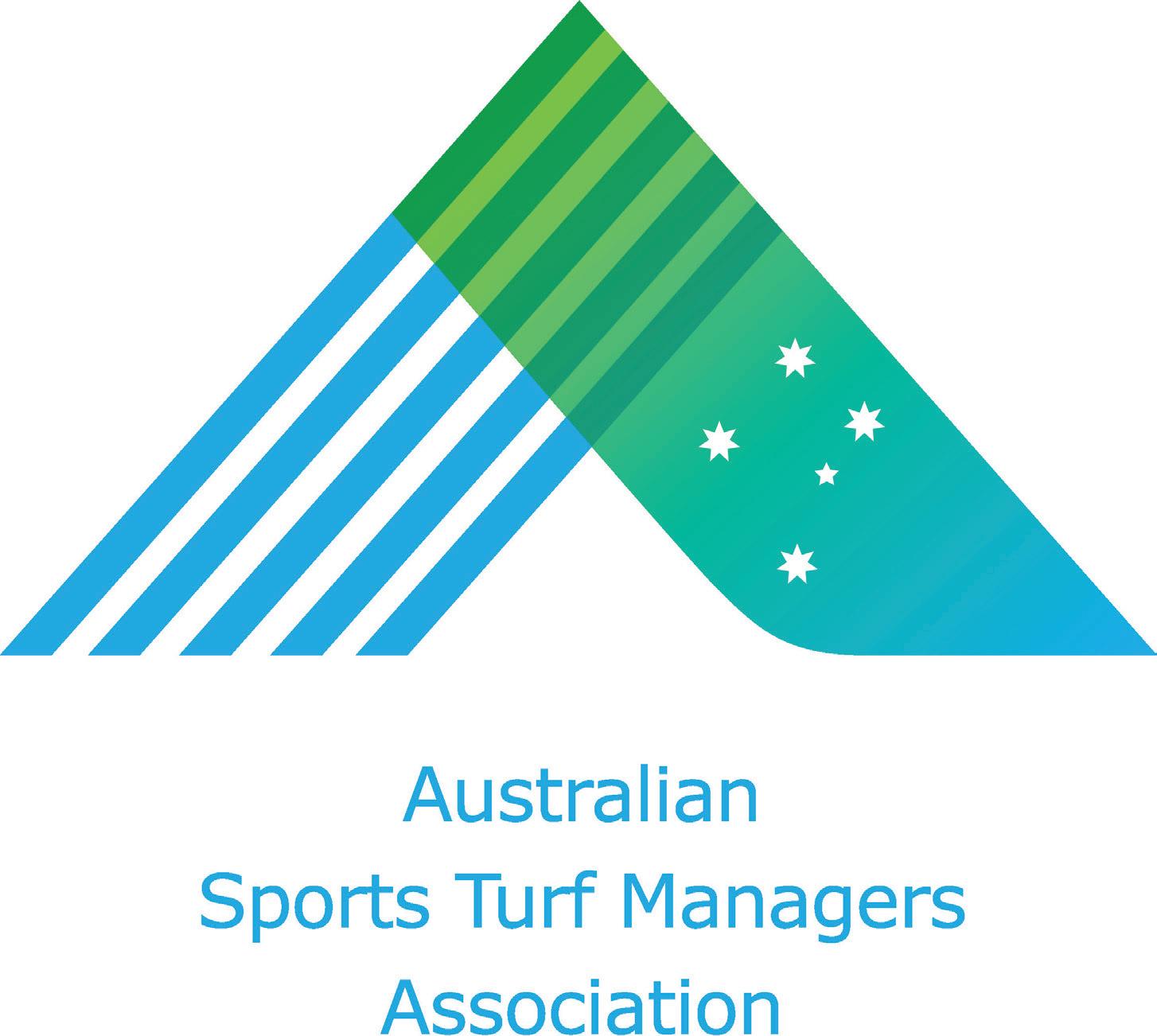
Jason Kelly Royal Fremantle GC, WA Nick Kinley Hartfield CC, WA Dylan Knight Gisborne GC, Vic Blaine Knox Palm Meadows GC, Qld Lance Knox Busselton GC, WA Steve Lalor Townsville GC, Qld Kane Latham The Australian GC, NSW Nick Launer Keysborough GC, Vic Ben Lavender Newington College, NSW Jason Lavender Beenleigh RSL & GC, Qld Dean Lenertz St Michael’s GC, NSW Dean Lewis Thurgoona CC, NSW Josh Leyland Box Hill GC, Vic Nathan Lindsay Marrickville GSCC, NSW Peter Lonergan CTHGC, NSW Ben Lucas Tocumwal GC, NSW Toby Lumsden ICC Academy, UAE Bruce Macphee ASTMA, Vic Stephen Mallyon Renworx, NSW
Dave Mason Brisbane GC, Qld Garry McClymont Twin Waters GC, Qld Mick McCombe Maleny GC, Qld Tony McFadyean Programmed, WA Paul McLean Sanctuary Cove G&CC, Qld Michael McMahon GTS, Qld Peter McNamara Brisbane GC, Qld Ryan McNamara Rosanna GC, Vic Keith McPhee Maitland City Council, NSW Brett Merrell Merrell Golf Consultancy Daniel Metcalfe Beverley Park GC, NSW Kieran Meurant North Sydney Oval, NSW Jack Micans Elanora GC, NSW Braydan Millar Rowes Bay GC, Qld Ben Mills Hawks Nest GC, NSW Craig Molloy Barwon Heads GC, Vic Colin Morrison AIMU P/L, Vic James Newell Magenta Shores G&CC, NSW
Kelvin Nicholson Palmer Coolum Resort, Qld Matthew Oliver QSAC, Qld
Shaun Page Southern GC, Vic Luke Partridge Manly GC, NSW Mick Pascoe Noosa GC, Qld
Ben Payne Peninsula-Kingswood CGC, Vic Michael Pearce RACV Torquay GC, Vic Jeff Powell Ballarat GC, Vic Keegan Powell The Sands Torquay, Vic Luke Primus Deakin University, Vic Scott Prince Manningham City Council, Vic Shaun Pritchard PEGS, Vic
Justin Rankin Kooindah Waters GC, NSW Peter Rasmussen STRI, Hong Kong
Marc Raymond Waterford Valley GC, Vic Scott Reid Launceston GC, Tas Lachlan Ridgewell Blacktown ISP, NSW Brent Robinson Ballina G&SC, NSW
Chris Rogers Portsea GC, Vic
Brett Saggus BRG Legend Hill, Vietnam
Wesley Saunders Dunblane New GC, UK Robert Savedra Wesley College, Vic Travis Scott Riversdale GC, Vic
Bill Shuck Evergreen Turf, Vic
Cameron Smith Bonnie Doon GC, NSW Gary Smith Commercial Albury GC, NSW
Jacob Smith The Coast GC, NS Thomas Smith STRI Australia Mathew Soles Royal Perth GC, WA Clinton Southorn Troon International John Spraggs Royal Wellington GC, NZ Daniel Stack Windaroo Lakes GC, Qld Kenji Steele Riverway Stadium, Qld David Sutherland The Ridge GC, NSW Lee Sutherland St Michael’s GC, NSW Shay Tasker Carnarvon GC, NSW
Aaron Taylor Cronulla GC, NSW Heath Taylor Blacktown ISP, NSW
Nigel Taylor Sports Turf Solutions, Malaysia
Shaun Taylor Southern GC, Vic James Thomas Bayview GC, NSW
David Thomson Bermagui CC, NSW
Colin Thorsborne Parkwood Village, Qld Ben Tilley Headland GC, Qld
Steve Tuckett Holmesglen TAFE, Vic Dallas Voss Grass Up, Vic
Michael Vozzo Fertool, Vic
Earl Warmington Newcastle GC, NSW Tim Warren Glenelg GC, SA
Rob Weiks Hoiana Shores GC, Vietnam Shannon White Baileys Fertilisers, WA George Widdowson Eden GC, NSW
Darren Wilson Wembley GC, WA Issac Wojewodka Camden GC, NSW
Simon Wood Sth Metropolitan TAFE, WA Tim Wright K&B Adams, Vic Matthew Young Moonee Valley CC, Vic
For more information on the ASTMA Certification Program visit www.agcsa.com.au
ASTMA Platinum Partner Toro Australia is excited to announce that the new Workman UTX vehicle will be arriving into Australia soon. The Workman UTX is a 4-wheel drive vehicle designed for tough daily work in a variety of demanding environments, including golf courses and facilities maintenance.
“This new, rugged utility vehicle is designed to tackle jobs like tree maintenance, landscaping, event setup and teardown, rubbish collection and transportation of people, materials and tools. It is truly very versatile and durable,” says Toro’s equipment product manager Brian Goodridge.
The commercial-grade, 4-wheel drive vehicle uses a proprietary ground speed governing system. The Workman UTX’s ground speed and RPM are not directly connected, allowing the operator to limit the speed of the machine without gutting the power. This system allows for the right amount of power to be applied to the job, no matter the desired ground speed. This can mean lower RPMs, and with it lower fuel consumption and sound, or higher RPMs for more power to haul a heavy load.
Like a full-sized vehicle, the Workman UTX comes standard with turn signals, brake lights, hazards, LED headlights and a horn. It also comes with a corrosion resistant spray-in bed liner. An all-weather cab with heat and air conditioning is available to keep operators comfortable in any conditions.
The Workman UTX offers a choice of petrol or diesel power and comes in a two-person configuration. Push button 4-wheel drive and selectable front and rear diff-locks give operators peace of mind, whether on fine turf or in hauling heavy loads. For more information on the Workman UTX, contact your local Toro representative or visit www.toro.com.au.
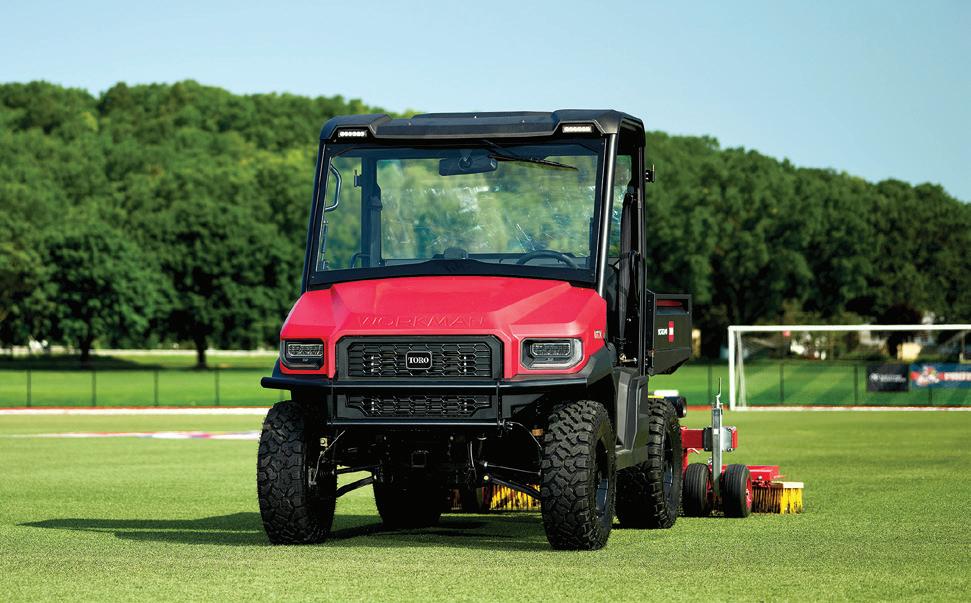
TORO LEADERSHIP CHANGES
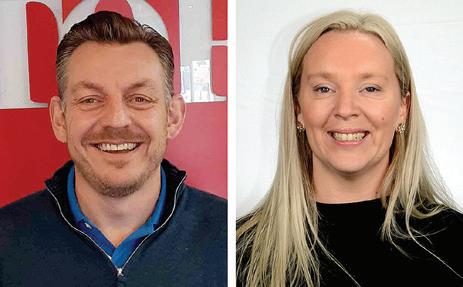
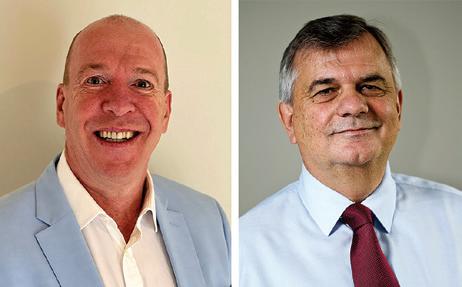
managing marketing, sales, service, logistics and channel strategy for the Australian region. He has done so for numerous customer groups including DIY/homeowners, landscape contractors, construction dealers, professional golf and grounds accounts, agricultural farmers and more.
Toro Australia recently announced a number of significant changes to its leadership structure as a result of growth in both the Australia and Asia Pacific regions over the last few years. Both areas now require an additional focus, with an increased product portfolio, channel portfolio and different go-to-market strategies.
As a result, Richard Walne (pictured above right), managing director APAC, has transitioned his focus to the Asia Pacific region. Walne will lead the Asian team and is looking to increase Toro’s service levels to customers and further support Toro’s distributor partners in the region. The regional manufacturing and engineering functions will continue to be overseen by Walne’s leadership.
Walne has been with The Toro Company since 1979, holding sales and marketing positions in Europe and the United States and, from 1991, within the Asia region. He was based in Singapore for more than 10 years during this time. He has also served as a founding member and, later, president of the Asian Golf Industry Federation (AGIF).
With Walne’s focus on the Asia Pacific region, senior director Laurence Bingham (pictured above left) has assumed overall responsibilities for the Australian business. Bingham has been with Toro for 23 years and has been an integral member of the executive management team in Australia. His tenure has covered vast portfolios within the business,
A few weeks after the Walne and Bingham announcements, Toro unveiled further changes to consolidate its business units into three – Garden and Trade Irrigation, Residential Landscape Contractor Equipment and Commercial (Equipment and Irrigation).
The Garden and Trade Irrigation business unit will now be led by Luke Ognibene (pictured above left) who will join the Toro Australia leadership team. Since starting at Toro 15 years ago, Ognibene has spent time in all divisions. Starting in the dealer-based equipment business, he then managed the Bunnings account nationally before spending time managing all of the customer service teams and spare parts. This was followed by time as the national sales manager for the Irrigation division. Most recently Ognibene was Toro’s aftermarket services manager, where he looked after service centres, the technical team, spare parts and pre-owned equipment.
Elise Willemsen (pictured above right) has also been promoted to business manager of the Residential Landscape Contractor Equipment unit encompassing consumer, professional and construction equipment. She also joins the Toro Australia leadership team. Equipment customer service is also part of her portfolio. Willemsen started with Toro in 2010 as a product manager for the Pope brand. She took on the role of senior marketing manager for the equipment side of Toro and looked after the golf, consumer, construction, professional and sports fields and grounds equipment markets.
K&B ADAMS GOES BRONZE
Melbourne-headquartered company K&B Adams has recently become a Bronze Partner of the Australian Sports Turf Managers Association (ASTMA). K&B Adams has been
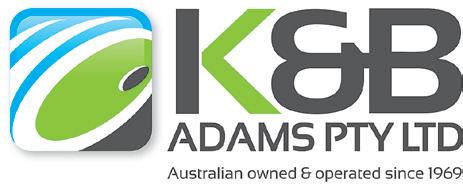
64 AUSTRALIAN TURFGRASS MANAGEMENT 24.5 AROUND THE TRADE ALL-NEW TORO WORKMAN UTX SOON TO LAND IN AUSTRALIA
Toro’s versatile and durable 4-wheel drive Workman UTX will be shortly available in Australia
servicing the Australian turf industry since 1969 and in that time has been responsible for establishing many now popular products into the turf market.
K&B Adams has been a distribution partner of ICL for over 50 years in Victoria and 20 years ago expanded to South Australia and the Northern Territory. At this year’s ASTMA conference in Melbourne, K&B Adams formally launched their extended distribution partnership with ICL which now sees them as the main dealer partner for ICL in Queensland, NSW and the ACT. As part of this expansion, K&B Adams has appointed Mat Fitzgerald and Richard Odd as technical sales representatives in Queensland and NSW respectively.
Fitzgerald has recently relocated to Queensland from Melbourne where he was superintendent at Ringwood Golf Course. Fitzgerald has 28 years’ experience in the industry including golf and local government and has completed a Diploma in Sports Turf Management and an Advanced Certificate in Horticulture. Odd, likewise, is closing in on three decades in the industry, having held various turf management roles at a number of councils, as well as 10 years as grounds and gardens manager at Sydney’s Barker College. Fitzgerald can be contacted on 0456 794 090 or mat@kbadams.com.au, while Odd can be reached on 0419 613 215 or richard@ kbadams.com.au.
“K&B Adams is delighted to be an ASTMA Bronze Partner,” says managing director Mark Eardley. “With our recent expansion into Queensland and NSW as well as our exclusive distribution of ICL turf products along Australia’s east coast, we know this will be a fantastic partnership. K&B Adams remains entirely Australian owned and operated since 1969, and will offer the same quality products and expertise to Queensland and NSW as it has to Victoria and South Australia for years.” For more information on the company and its product offerings, visit www.kbadams. com.au.or contact head office on 1800 887 343.
NEW AND IMPROVED SYNGENTA TURF APP
ASTMA Gold Partner Syngenta has recently unveiled its new Turf app which is free to download from Apple or Google Play stores. The new and improved app is integrated with the Syngenta Turf & Landscape website, meaning users only need to use one set of login details. The app provides instant online application tools and calculators to enable quick and accurate sprayer set-up and calibration. The new and improved app design also comes with:
l Easy access to Syngenta product label and SDS information;
l Tank mix calculations with saved areas, sprayers and operators;
l Diseases, pests and weed information; and
l Application records and reports.
The new app gives greenkeepers and turf managers the opportunity to improve the efficiency of all spray applications, as well as maintain their spray records simply and effectively and eliminating the need for manual record keeping. Using the app, course managers can quickly create any required recommendations, which can be sent direct to the sprayer operator, cutting out the risk of errors or misinterpretation of instructions. Furthermore, the information can be sent back to the office to compile a comprehensive and accurate report of precisely what has been applied, where and when.
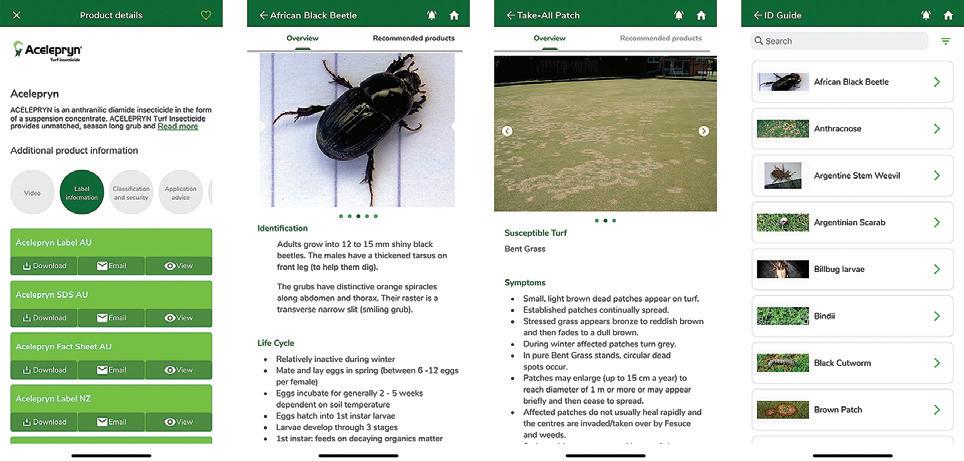
With turf managers using more complex tank-mix combinations, the app also provides invaluable guidance. Tank-mixes and recommendations can now be created and saved for later application, optimising use of time and ensuring operators are ready to go when conditions are right. This can also
INDUSTRY APPOINTMENTS
LIVING TURF BOLSTERS TASMANIAN, NZ TEAMS
ASTMA Silver Partner Living Turf announced in August the appointment of Adam Spargo (pictured) to its Tasmanian team. Spargo has over 21 years’ experience in the turf industry and most recently was operations co-ordinator at University of Tasmania Stadium in Launceston. During his time at UTAS, Spargo was involved in preparing the stadium and adjacent Inveresk precinct for cricket, AFL, A-League fixtures and other significant community events. He was also president of the Tasmanian Sports Turf Managers Association for a short period.
Spargo’s initial years in the industry were spent at Riversdale Golf Club in Melbourne, rising from apprentice to be assistant
aid store management and help to ensure sufficient products have been ordered and are available when required.
The easy-to-use auto-fill product database now includes the complete Syngenta product range. Any additional products can be added into a custom database, which will be available for instant reference with subsequent applications. The Syngenta Turf App can be fully customised to an individual’s own golf course or facility, including details such as turf areas, sprayer details and operators, which can be quickly included during the spray recommendation process and for course records. It also gives operators a nozzle recommendation to optimise application for any given water volume and spray target, including the ideal Syngenta XC nozzle to deliver the best result.
The Syngenta Turf App supersedes the previous Greencast Turf App which is no longer supported. Turf managers are encouraged to switch over to the new app and can find out how to do so by visiting www. syngentaturf.com.au/syngenta-turf-app.
superintendent during his 11 years there. He also worked at Northern and Launceston golf clubs before moving to UTAS.
“I am absolutely thrilled to accept this position and to take on this next challenge in my career,” says Spargo. “I look forward to helping continue to build upon Living Turf’s service and reputation in Tasmania and nationally.”
Living Turf has also appointed Craig Gosney to its New Zealand-based team. Gosney started his career in 2004 at Waimairi Beach Golf Club where he worked as assistant superintendent for nine years. Gosney has worked as a sales manager for Advanced Irrigation Systems in Christchurch and has been in operations roles within landscaping. He also worked with PGG Wrightson Turf as a territory manager in the Canterbury, Otago and Southland regions.
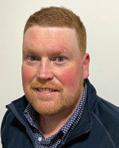
SEPTEMBER-OCTOBER 2022 65
The new and improved Syngenta Turf App is now available for download and supersedes the Greencast app
NEW SPECTICLE PACK SIZE
September saw ASTMA Gold Partner Envu (formerly Bayer ES) introduce a new 250mL pack size for Specticle herbicide onto the market. The new pack size treats one hectare in turf situations and is now available from Envu’s appointed turf agent network.
Specticle is a highly effective tool that turf managers can rely on to provide pre-emergent control of many grass and broadleaf weeds for up to eight months. Specticle’s high effectiveness on some of the hardest to control annual grass weeds in turf, coupled with low use rate and Group O mode of action, makes it a valuable tool in effective and sustainable weed management programs.
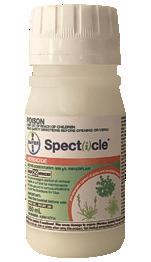
Preventing warm-season sports turf and passive recreation surfaces against the infestation of annual weeds like Poa annua, summer grass, crowsfoot grass and broadleaf weeds such as bindii and white clover, can optimise surface quality, consistency and safety, reduce weed competition for warmseason turf and reduce costs and public inconvenience associated with the presence of weeds and application of post-emergents.
As well as applications in turf, Specticle can also be used for pre-emergent weed control to maintain bare ground in many landscape and hardscape areas in and around maintained sports turf facilities, such as fencelines, cart paths and other pathways. For further information on the latest Specticle trial work, please contact your Envu representative or visit www.au.envu.com.
NEW 007XL BENTGRASS

ASTMA Bronze Partner Advanced Seed has introduced a new bentgrass variety from the ‘Super Bents’ range out of Seed Research of Oregon. The variety 007XL is the result of a long-term bentgrass breeding program conducted at Rutgers University working in cooperation with Drs Stacy Bonos, Richard Hurley and Leah Brilman.
A Super Bents variety, 007XL is an advanced generation bentgrass, bred for disease resistance for use on closely maintained golf greens, fairways and tees. 007XL is one of the top-rated bentgrass
TRAILER-MOUNTED PUMP SET TO AID FLOOD-PRONE BEENLEIGH COURSE
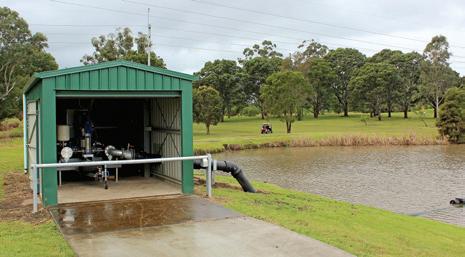
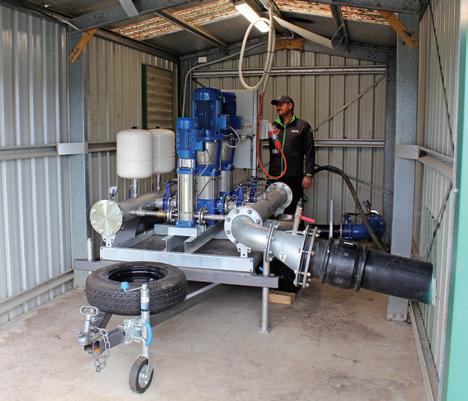
In a bid to lessen the impact that flood events have on its irrigation infrastructure, southeast Queensland’s Beenleigh RSL and Golf Club (Mt Warren Park) has taken delivery of a novel solution with regards to its pumps. Home to course superintendent and ASTMA member Jason Lavender (CSTM), the course irrigation pump station was recently upgraded by Brown Brothers Engineers and Nutrien Water (Nerang) with a custom-made mobile booster set that can be transported to higher ground in the event of flooding.
With the course located next to the Albert River, floods are a regular occurrence with the most recent flood in February 2022 particularly devastating to the course. With irrigation infrastructure costly to replace and insurance expenses rising, an innovative solution was required. This was no more evident than during the recent flood when the pump shed was left completely submerged with the suction line washed more than 100m away.
The Beenleigh course has one primary, run-off fed irrigation dam which is supported by a secondary dam that is set up to feed it water if required. Before the major February flood, Brown Brothers Engineers, in conjunction with Nutrien Water, had already designed a new pump system, which was scheduled for installation in early March. This ended up being exactly one week after the flooding. For several years, the course had relied on a mobile solution for the existing pump set, however, it had become cumbersome and inefficient meaning a change was needed.
“The old pumps were on a platform on wheels that needed eight people to get it out in rising water and hook it up to a vehicle to tow it,” explains Lavender. “And flood waters rise fast here! In the recent flood, we did get it
out of the pump shed, but we had more rain than was forecast, and it turned out that we didn’t move it high enough and it ended up going under.”
And it wasn’t just the issues around the mobility of the system. According to Lavender the existing pump set was only operating at about 50 per cent capacity, indicating it was time for a new system.
When Steve Moncrieff, project manager for Nutrien Water, was contacted by club, he sought advice from Brown Brothers Engineers regarding the design of a trailermounted pump. As a solution they developed a trailer-mounted custom dual booster set with jockey pump, complete with INCA
control panel. In case of flooding, the Lowara e-SV Series pump set was designed to be readily disconnected and relocated to higher ground if necessary. Along with the pumps, an INCA control panel was also mounted on the trailer using a quick-release Clipsal threepin electrical connection, meaning course staff can quickly and safely shut off the power to the panel and transport the entire pump unit in the event of flooding.
“The main difference to a traditional system is that it was a bit higher off the ground than usual, being on the trailer,” explains Moncrieff, who oversaw the installation of the new pump system by Prolinks. “Brown Brothers took this into consideration in the design to ensure there was no vibration or movement. But essentially the methodology is no different to installing a pump set in a shed.”
Lavender says the new system is considerably more user-friendly: “The pumps can be moved by two people in 15 minutes. It’s just a process of hitching the trailer to a vehicle and towing it to higher ground.” If flooding is predicted, they can simply move the trailered pump set to another shed near the clubhouse which stands above the flood zone.
The new set-up has quickly garnered the attention of local council representatives and managers of other golf courses who have visited the club to learn more about it. While the mobile trailer-mounted system is the first of its kind that Moncrieff has worked on, he anticipates more of them will be seen in the future.
“This is not something that has been done much before, simply because it’s not the traditional approach and it hasn’t occurred to people to do it. I think it could become an option for many flood-prone golf courses and sports grounds.”
66 AUSTRALIAN TURFGRASS MANAGEMENT 24.5 AROUND THE TRADE
Beenleigh RSL and Golf Club’s irrigation pump station was recently upgraded with a custom-made mobile booster set that can be transported to higher ground in the event of flooding
varieties in the latest NTEP trials and is now in stock in Australia. For more information on this new variety, please contact Advanced Seed’s Matt Scott via email matt@adseed.com.au.
SIR WALTER NOTCHES MAJOR SALES MILESTONE
One of Australia’s iconic lawn varieties, Sir Walter buffalo grass recently reached a unique sales milestone. In late August, ASTMA Bronze Partner Lawn Solutions Australia (LSA) announced that Sir Walter had passed the 100 million metres sold mark, an achievement no other buffalo grass has purportedly achieved.
Brent Redman discovered ‘Sir Walter’ in the NSW Hunter Valley in 1996. Redman grew buffalo grasses on his farm, but there were always particular issues that prevented them from achieving high quality. This was until Redman noticed a small area on his farm where an off type was growing. This off type maintained a greener winter colour, had a healthier root system and it was taking over the existing buffalo.
Realising its potential, he began propagating the grass to protect the purity and integrity of the variety and it was from these first few square metres that Sir Walter was born. The rest is history with Sir Walter now produced right across Australia. Sir Walter ‘DNA Certified’ is now supplied nationally through the LSA network.
SILVAN INTRODUCES NEW ESSENTIALS RANGE

and horticultural herbicides for weeds and insecticides to plants. Also included is a chemical-resistant diaphragm pump which produces an open flow of 2.6 litres a minute with a maximum pressure of 50psi. Other features include 3m of wiring loom with alligator clips, inline on/off switch and fuse.
The sprayer consists of a translucent poly tank for viewing the content level and comes with a trigger jet spray with 450mm lance and adjustable spray nozzle, which delivers a coarse pencil straight stream through to a fine mist. Attached to the nozzle is a 6m x 8mm long agricultural hose.
Three new sprayers are featured in Silvan’s new Essentials Range
Silvan has released three new sprayers as part of its Essentials Range this spring. The range has been specifically designed for general weed management, insect and pest control around the garden, home or small property. Besides the new sprayers listed, the range also includes a 12L rechargeable backpack sprayer and a 15L backpack sprayer.
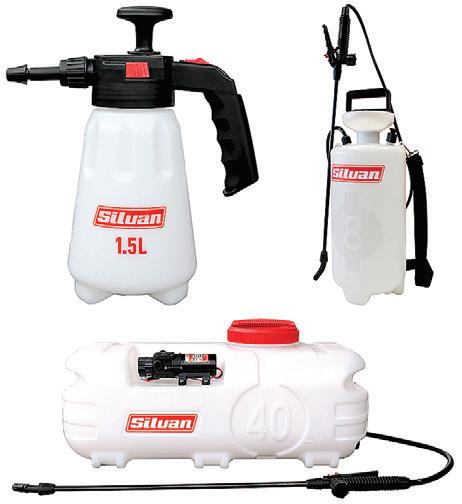
The new compact 40L Spot Sprayer has been designed to be an affordable solution for applying pesticides, agricultural
The new 8L portable hand sprayer has a maximum operating pressure of 3bar/45psi and comes with several stand-out features. Among them is a translucent poly tank for viewing the content level and a gun holder for storing the 660mm fibreglass lance. The lance is equipped with an adjustable poly nozzle that produces a coarse straight stream through to a fine mist spray. Other features include a piston type pump for smooth and easy pressurising through the hand lever and a 1100mm delivery hose. Options include a two Jet T Boom and a Spray Shield. Silvan has also released a new 1.5L hand held sprayer which has an operating maximum pressure of 2bar/30psi.
For more information on the full range of Silvan spraying equipment, visit www.silvan. com.au.
SEPTEMBER-OCTOBER 2022 67
CONTACT THE AGCSATECH TEAM (03) 9548 8600 Senior agronomist - Bruce Macphee Agronomist - Tim Fankhauser bruce@agcsa.com.au 0409 183 710 tim@agcsa.com.au 0422 418 038 www.agcsa.com.au/agcsatech The Australian turf industry’s leading provider of independent agronomic services. l EXPERT AGRONOMIC ADVICE l GOLF COURSE, SPORTSFIELD AND RACETRACK ASSESSMENTS l DESIGN AND CONSTRUCTION SPECIFICATIONS l DRONE DIAGNOSTIC SERVICES AND AERIAL IMAGERY l SOIL, PLANT AND WATER ANALYSIS l DISEASE AND NEMATODE ANALYSIS l COST EFFECTIVE NUTRITION AND MAINTENANCE PROGRAMS l WATER MANAGEMENT PLANS l PROJECT MANAGEMENT
NZGCSA

Greetings from the other side of the ‘Ditch’. It has been a wet winter for a lot of regions in New Zealand with a couple in particular experiencing flooding along similar lines to what NSW and Queensland did earlier in the year. Times like that certainly bring out the resilience in people and the photos which appeared in the MarchApril edition of this journal certainly showed the extent of the damage and the scale of clean-up that was required.
As tends to happen at times of disaster, communities rally around each other and the turf sector is no different. Reports of greenstaff going above and beyond to get their courses cleaned up are numerous as was the outreach from colleagues at other golf courses that weren’t affected. It is at these times we realise the spirit and camaraderie of our industry is supreme. I hope those of you affected are well on the way to recovery and a warm spring will see good growth to get your golf courses back to where they were.
It has been a busy time here in NZ with a first-of-its-kind golf conference, award presentations (finally), our AGM and the launch of a recruitment video. In early August the NZ golf community came together at Te Pae – the Christchurch Convention Centre.
The NZGCSA, GolfNZ, NZPGA, GMANZ, Golf Tourism NZ and trade companies all came together under the New Zealand Golf Industry Council umbrella to stage the inaugural Golf Matters Conference and Expo.
Te Pae Christchurch was built after the 2011 earthquake devastated the original convention centre and what a great venue it is. Officially opened in December 2021, Te Pae (meaning ‘a meeting place’) is a state-of-the-art centre with a 1400-seat auditorium, 24 meeting rooms and banquet areas for 1800.
With recent COVID travel restrictions to NZ being lifted, it meant we attracted speakers of the calibre of Micah Woods (Asian Turfgrass Center) and the effervescent Ben Gibson (The Toolbox Team). Thanks to modern technology we also enjoyed Zoom calls from Lisa Cornwell of PGA Tour Entertainment fame, Tom Doak and Kyle Phillips, two of the great modern course architects, and Shona McRae from The R&A rules committee.
My personal favourite was listening to Ben Gibson for two sessions. His philosophies on leadership, workplace culture and mental health in the workplace are excellent. He returned to NZ in September for an Auckland GCSA meeting and I hope he becomes a regular visitor – he is well worth hearing.
Another highlight of the conference was the awards dinner. Because of COVID restrictions this was the first sit-down awards dinner the NZ golf industry has hosted for a few years. The NZGCSA was proud to be
able to present two awards to a couple of very deserving recipients – the NZGCSA Excellence Award sponsored by Parkland Products and the NZGCSA Environment Award sponsored by PGG Wrightson Turf and proudly supported by GolfNZ.
The Excellence Award is one of the NZGCSA’s most prestigious awards with the winner this year being Rick Machray from Arrowtown Golf Club. Sadly, Rick was unable to attend the dinner due to starting a new position as superintendent at the Kinloch Club near Taupo. Prior to the conference I went to Kinloch to present the award to Rick and was able to record a video message which was played at the awards dinner.
Mark Hooker and the Royal Auckland and Grange Golf Club took out the 2022 NZGCSA Environment Award. This award recognises the great work taking place towards environmental management and sustainability. Mark and his team at Royal Auckland and Grange were

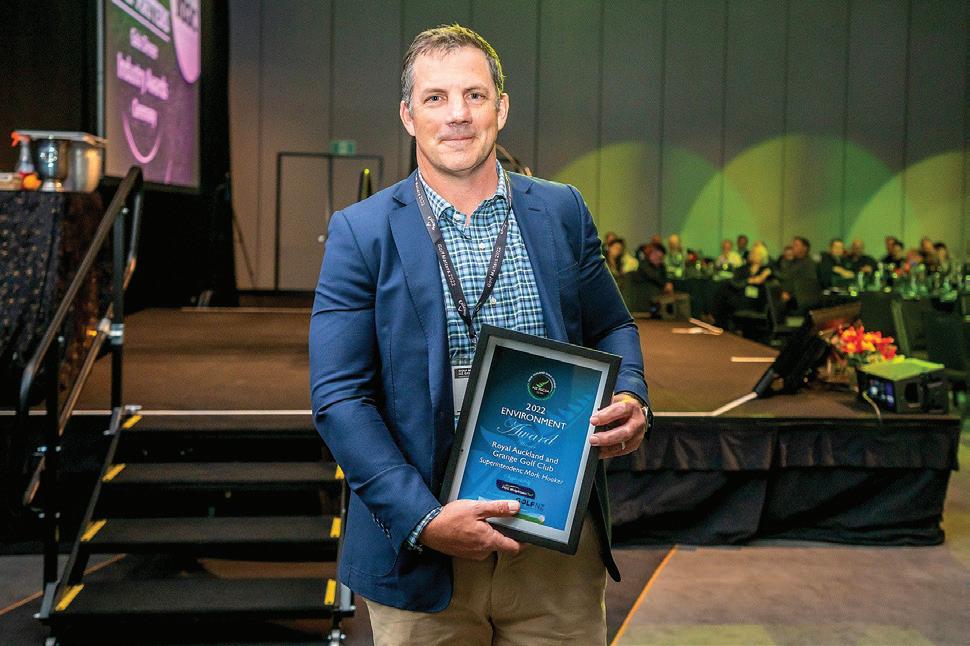
able to achieve exceptional standards in their environmental stewardship and it certainly showed through with the quality of their entry. Congratulations to both Rick and Mark and the NZGCSA sincerely thanks Parkland Products and PGG Wrightson Turf for their continued support and sponsorship of these awards.
The NZGCSA AGM took place during the conference on 9 August and a big thank you to all those who attended, especially at such an early time during a Christchurch winter! We welcomed Mark Hooker to the NZGCSA Board which is made up of the following members: l President: Jason Perkins (Omanu GC); l Executive members: Spencer Cooper (Remuera GC), Rick Machray (Kinloch), George Flynn and Mark Hooker (RAGGC), Brad Sim (Cape Kidnappers), Sam Davis (The Hills) and Fiona Izzard (administration officer).
At the AGM we also presented a recruitment video that the NZGCSA Board has been working on. Our members asked us to provide them with something to use to attract more staff to our industry. Like the current climate in Australia, we are struggling to fill positions and we are also looking to encourage more females to join our industry. The ‘Science Behind the Game’ video and four associated profile interviews were presented to our members with very positive feedback. The videos will be used in a variety of situations to enhance our industry and promote participation. To view the videos go to the NZGCSA Facebook page and click on the ‘Videos’ link.
JASON PERKINS PRESIDENT, NZGCSA
68 AUSTRALIAN TURFGRASS MANAGEMENT 24.5 ASSOCIATION REPORTS/NEWS
Former Arrowtown Golf Club superintendent Rick Machray took out the 2022 NZGCSA Excellence Award
2022 NZGCSA Environment Award winner Mark Hooker from the Royal Auckland and Grange Golf Club
Ithas been a while in between reports for me as I was away overseas for about seven weeks. So I just want to send a belated thanks to Mark, Simone and the ASTMA team for a great conference in Melbourne back in June. I thought the partnership with Golf Management Australia (GMA) was great and very beneficial and hopefully it can be done again somewhere in the future. Also congratulations to new ASTMA president Ben Tilley (CSTM) – all here in the West wish you well in the new role.
Perth has had a decent winter and start to spring, with 157mm in July, 174mm in August and 77mm in September. That’s a total of 639mm for the year. We don’t get heavy falls with 38mm the highest so far over a 24-hour period. But we have had some strong winds and rain which caused a lot of mess which coincided with club championships for many.
In late July we hosted the Trade Challenge at Secret Harbour. Sixteen teams entered with Baileys Fertiliser taking home the trophy and Nuturf runners-up. On 29 August we joined with the GMA to hold the Management Challenge. We had 74 players at the Western Australian Golf Club (WAGC) that afternoon with Chequers GC the big winners, 13 points ahead of Hartfield CC and Nedlands GC.
Carrying on the recent workings with the GMA, we held our second joint personal development day in mid-September. Paraparaumu Beach Golf Club superintendent/ general manager Leo Barber flew over from New Zealand and presented to the attendees. It wasn’t a great turnout on the
ACTSTMA
Thewet weather has certainly hit us here in the nation’s capital, with the month of August seeing a total of 160mm of rain and, as I write, 50mm to date for September. Golf courses have been busy dodging this wet weather and completing greens renovations in the past few weeks, but the trusty Canberra weather hasn’t disappointed with frosts still persisting, including a -2 on 20 September! Hopefully some warm weather is around the corner to encourage quick recovery times.
In August the ACTSTMA committee attended the Canberra Career Expo to promote the sports turf industry to over 1000 visiting Year 10-12 students (see photo, right). Across the two-day event committee members were able to speak and give out information to students regarding apprenticeship opportunities, school-based apprenticeships, the ASTMA’s Women in Turf Strategy and work experience opportunities. We have received great feedback and hopefully can gain more kids experiencing our great trade.
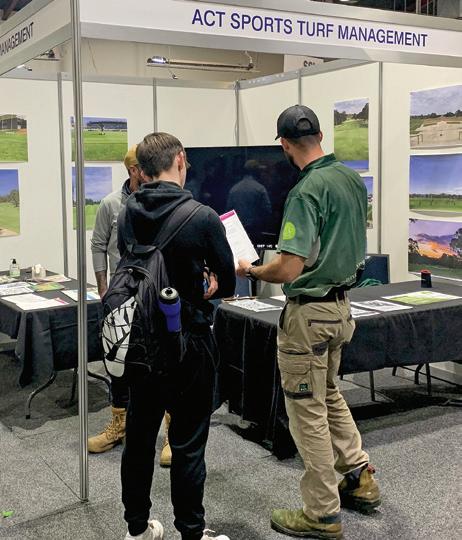
superintendent’s side, so the timing has already been altered for next year’s event. For those that did make it, I’m sure they got a lot out of it and to meet and interact with GMs and clubhouse staff I feel is very beneficial.
In a busy month we also held our AGM and Rain Bird/Living Turf Golf Day at Melville Glades. On the committee side Dave Cassidy stepped down after a two-year stint, with Busselton Golf Club superintendent Lance Knox joining the committee.
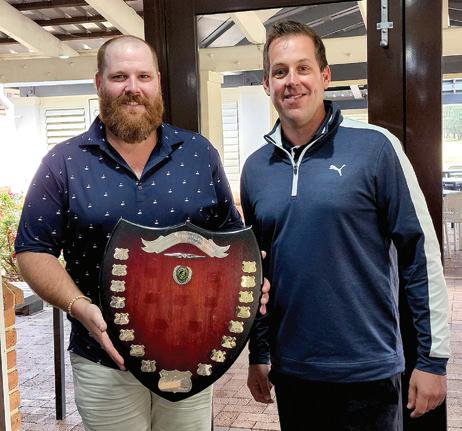

It has been a huge past 12 months for Lance, or ‘Knocka’ as he is affectionately known over here. He won last year’s Rain Bird/ Living Turf stableford event, won the NAGA at the Margaret River conference golf event, won the GCSAWA Superintendent of the Year Award before going on to win the ASTMA Excellence in Golf Course Management Award in Melbourne. He also won the John Deere Championship qualifier event in Perth, before heading to Melbourne where he won the national John Deere Championship title at Moonah Links. And to round it off, he successfully defended his stableford trophy at the AGM. The stroke event was won by Scott Barnett (Marri Park GC) who finished three shots clear of Toro’s Brad Anderson
In mid-to-late October Kalgoorlie Golf Course hosted the WA PGA Championship with a number of volunteers heading across to help out for the week which was great to see. A week later WAGC hosted the WA Open. Congratulations to course superintendents Pat Casey and Idris Evans and their teams for delivering exceptional playing surfaces at their respective courses. Good luck to everyone heading into the warmer months.
SHANE BAKER PRESIDENT, GCSAWA
On 29 September our Gold Sponsor Living Turf put on a walk ‘n’ talk day at Federal GC, with an educational component in the morning and nine holes of golf in the afternoon. There was a great turn out and a big thank you to host superintendent Peter Dunn and his team and Living Turf for sponsoring a great day. In early October we saw two T20 International games played at Manuka Oval, with Australia taking on England. Congratulations to curator Tom Fahey and his team.
We will be putting on Christmas drinks for anyone wanting to come on 25 November at Thoroughbred Park. We have a reserved area next to the finishing post and with a nine-race card starting from 1pm it should be a great day for everyone to catch up and reflect on another hectic year. A big thanks to Adam Ayres at Thoroughbred Park for organising this.
Finally, the ACTSTMA will be hosting the National Turf Education Working Group in December at Canberra Institute of Technology’s Bruce campus. We look forward

SIMON SNEDDEN COMMITTEE, ACTSTMA

SEPTEMBER-OCTOBER 2022 69
GCSAWA
Rain Bird/Living Turf Golf Day winners Lance Knox (above left) and Scott Barnett (below left) with Living Turf rep Tyson Riley
to welcoming turf educators from around the country for this important meeting.
MAJOR CHANGES AT SUNCORP AS CADDIES DEPARTS FOR HONG KONG
Oneof Australia’s most iconic sporting arenas has had a change of guard. After nearly two decades at Brisbane’s famed Suncorp Stadium, grounds manager Malcolm Caddies departed at the end of September to take on the role of general manager of sports and landscape at Kai Tak Sports Park in Hong Kong. Caddies finished up at Suncorp on 30 September and started his new role at the ASM Global-managed facility on 17 October.
Kai Tak Sports Park is a fully integrated sports, leisure and entertainment destination that is set for completion in the second half of 2024. Built on the site of the former Kai Tak Airport on Kowloon, the 280,000 square metre park features a 50,000-seat main stadium with a retractable roof, a 10,000-seat indoor sports arena and a public sports ground with a capacity of 5000 seats.

Caddies’ new role involves leading the operation and management of the sports fields and landscape at the sports park, as well as managing an off-site turf farm. Initially he will work with the design and build team to oversee and advise on the construction and operation of the playing surfaces in the main stadium and public sports ground.
Caddies’ move to Hong Kong sees the end of a 19-plus year tenure at Suncorp Stadium, including the past 15 as ground manager. Caddies joined the team in 2003 as an assistant groundsman after spending six years as the assistant superintendent at nearby Nudgee Golf Club. He then took over as grounds manager in 2007. Caddies says he is extremely proud of all that he and his team had achieved at Suncorp Stadium and is relishing the new opportunity now in front of him: “Kai Tak Sports Park is an incredible project and I am looking forward to playing my part in making it an enormous success on the world stage.”
Chairman and chief executive of ASM Global (Asia Pacific), Harvey Lister AM, says Caddies’ appointment is recognition of his professionalism and dedication during his many years at Suncorp Stadium: “Kai Tak Sports Park is set to be one of the greatest sporting precincts in the world and this appointment will highlight Malcolm’s skills in being able to accommodate all sporting codes, delivering world class pitches for international competition.”
Adds ASM Global’s executive director at Kai Tak Sports Park, Darren Burden: “Malcolm has a fantastic reputation and will no doubt make an invaluable contribution to the success and performance of the Sports Park. I believe his extraordinary knowledge, experience and skills as an internationally acclaimed groundsman will bring unique qualities to the role and very much look forward to welcoming him to Hong Kong.”
Caddies’ departure has opened the door for Matthew Oliver who in the week following the announcement was officially appointed as Suncorp Stadium’s new grounds manager.
Originally from Victoria, Oliver moves across from the Queensland Sports and Athletics Centre (QSAC) where he has been grounds manager for the past three-and-a-half years.
Oliver started at Suncorp Stadium in midSeptember, spending a couple of weeks working alongside Caddies and the team before officially taking over on 1 October.
“I am very humbled and proud to have been appointed as grounds manager of one of Australia’s leading stadiums,” says Oliver. “Taking over from Mal after such a long and storied stint is a daunting task, but one I am ready to embrace. I am joining a thoroughly experienced grounds team and am really looking forward to leading the team into an exciting new era.
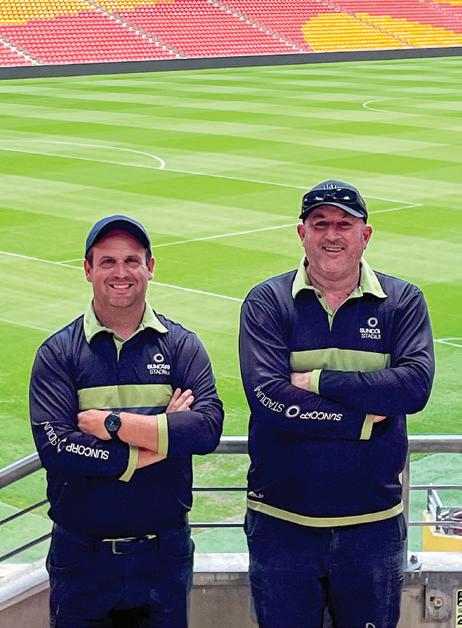
“The playing surface is in excellent condition heading into the warmer months and it’s a testament to Mal’s management practices over a long period and the dedication from the wider grounds team to consistently deliver a world-class playing surface in a time where
hirer, player and public expectations have never been greater. The summer ahead is going to be an extremely challenging one as Suncorp Stadium (and Australia) welcomes back large scale music and entertainment acts among our summer sporting calendar.”
The appointment is the pinnacle of Oliver’s turf management career which has spanned nearly two decades. He began his apprenticeship through PGA Links at Sandhurst in Melbourne’s southeast in 2004, before joining the team at what is now Marvel Stadium. After five years there, during which time he also assisted with the maintenance of AFL side North Melbourne’s Arden Street facility, he then spent two years as grounds manager at Melbourne Grammar School’s seven hectare Port Melbourne sports complex.
In the latter half of 2016 he took up a seven month secondment to Papua New Guinea where he was project operations manager at the National Football Stadium in Port Moresby. Returning home in early 2017, he re-joined the Marvel Stadium crew as a senior groundsman, during which time he was also responsible for Carlton Football Club’s Ikon Park (Princes Park) facility. At the start of 2019, Oliver and his young family relocated to Brisbane where he took on the QSAC role, overseeing the management of the 27-hectare facility with a team of six qualified permanent staff and five casual staff.
Oliver has hit the ground running in his new role, with his first official event in charge being Brisbane Roar’s opening A-League season match against Macarthur FC on 8 October. That was followed six days later by another A-League clash, before bump in began for the two-day Nitro World Games on 22 and 23 October. The stadium then plays host to two major concerts – Guns n’ Roses on 22 November and Justin Bieber on 3 December.
ON THE MOVE…
MARK BILSBOROUGH: From assistant at Royal Fremantle GC, WA to superintendent Links Kennedy Bay, WA.
TIM CATES: From assistant superintendent Ballarat GC, Vic to superintendent Buninyong GC, Vic.
JAMES COCKER: From assistant superintendent Woodlands GC, Vic to a position with Precision Irrigation, Vic.
MICHAEL ERVIN: From assistant superintendent Kooindah Waters, NSW to assistant superintendent The Lakes GC, NSW.
GLENN FARAC: From assistant superintendent Monash CC, NSW to superintendent North Turramurra GC, NSW.
BRAD HEBBLE: From superintendent at Chequers GC, WA to superintendent Nedlands GC, WA.
70 AUSTRALIAN TURFGRASS MANAGEMENT 24.5 ASSOCIATION REPORTS/NEWS
An artist’s rendering of the impressive new Kai Tak Sports Park development in Hong Kong
Departing Suncorp Stadium grounds manager Malcolm Caddies (right) and new grounds manager Matthew Oliver who has come across from QSAC
NSWGCSA
AsI started to write this report it began raining again, which probably best sums up what we will remember most about 2022. If 2021 was all about lockdowns and isolation, 2022 will certainly be known for rain, rain and more rain. I know this has certainly challenged all of us, and some more than others, but we remain determined and supportive.
This year we celebrate the 90th anniversary of the association. We weren’t always known as the NSWGCSA. When we formed in 1932 we were known as the New South Wales Greenkeepers Association (NSWGA). In 1950 we were the NSW Golf Course Curators Association, in 1965 it was changed again to the NSW Course Managers Association and finally, in 1971, the current day name NSW Golf Course Superintendents Association was adopted.
We continue to hold our association events and have the chance to meet face to face. Our most recent events have included an Education Day hosted by Tura Beach Country Club in August. We also hosted a ‘Walk & Talk’ event at Pymble Golf Club on 10 October where superintendent David Stone showed
ON THE MOVE…
STEVE JAHOUR: Promoted to superintendent at Chequers GC, WA.
BHODI JOHNSTON: From foreman Terrey Hills G&CC, NSW to assistant superintendent Kooindah Waters, NSW
JOHN KEDEY: Elevated to operations co-ordinator for UTAS Stadium and the adjacent Inveresk Precinct in Launceston following the departure of Adam Spargo.
STUART McFADYEN: From Yering Meadows to assistant superintendent Woodlands GC, Vic.
LUCAS MUIR: From assistant superintendent Patterson River GC, Vic to assistant superintendent Kew GC, Vic.
us the great work in progress to renovate Pymble’s green complexes.

The year will be capped off with the Elite Sand & Soil Rube Walkerden Golf Day on 3 November at Killara Golf Club. We haven’t been able to hold this particular event for over a year, so it promises to be a good one as we get together for our AGM, golf, lunch, awards and no doubt many a story!
As you may have read through our social media channels in recent times, there have been some changes within the NSWGCSA Board. Mark Spraggs, Aaron Cachia and Simon Blagg have resigned from the Board and I would like to thank them for their

outstanding contribution to the association during their time. Recently we announced some wonderful additions to the Board with the appointments of Jake Gibbs (Elanora Country Club), James Newell (Magenta Shores Golf Club) and Gareth Hammond (Terrey Hills Golf and Country Club). We have also welcomed Mandy Henry in the newly created role of marketing consultant.

As my first year of presidency comes to a close, I would like to take the opportunity to thank my fellow Board members – vice president Peter Donkers, secretary/treasurer David Stone, Ben Mills and Pat Wilson
It has been another challenging year, but I sincerely appreciate the time and energy they have committed to the association. Also, a big thank you to Alison Jones for the work she does for us in administration.
We finish the year with a strong team in place and I am looking forward to working with them to fulfill the objectives of the association and, more importantly, to focus on the value we can provide our members and sponsors.
LEON HENNESSY PRESIDENT, NSWGCSA
JOHN NELSON: After an incredible 41 years at Grafton & District Golf Club, NSW, including the past 33 years as course superintendent, Nelson bid farewell to the club in midSeptember.
SAM NEYLON: From superintendent Mona Vale GC, NSW to superintendent Strathfield GC, NSW.
BRENT ROBINSON: Departed as superintendent Ballina GC, NSW.
JOSH STRAUB: From superintendent Lismore Workers GC, NSW to assistant superintendent Alice Springs GC, NT.
NICK TAPLIN: Appointed superintendent at Mona Vale GC, NSW.
NATHAN TURNER: From superintendent Growling Frog, Vic to superintendent Latrobe GC, Vic.
LACHLAN VASSALLO: From assistant superintendent Kew GC, Vic to team leader in the Parks Department Greater Shepparton City Council, Vic.
JOSHUA WILLARD: After nearly six years at Oaks Cypress Lakes Resort in the Hunter Valley, Willard has been elevated to superintendent following the recent departure of Craig Molloy to Barwon Heads GC.
BRAD WINNELL: From assistant superintendent Latrobe GC, Vic to assistant superintendent Rosanna GC, Vic.
SEPTEMBER-OCTOBER 2022 71
New NSWGCSA Board members James Newell (left) and Gareth Hammond


Performance of bermudagrass cultivars under different shade, irrigation, and wear treatments. AU106983 May 2020 STRI Research Exclusively available from Proven drought tolerance, speedy recovery and toughness TifTuf is the smart grass AUSTRALIA’S #1 COUCH GRASS LESS WORK MORE PLAY
The name says it all – TifTuf is tough! This variety has a very fine leaf blade with dense growth, making it ideal for all levels of sports fields, golf courses and public spaces, from community ovals up to professional stadiums and golf courses. Its strong lateral growth and ability to selfrepair make it the perfect choice for high-wear areas.

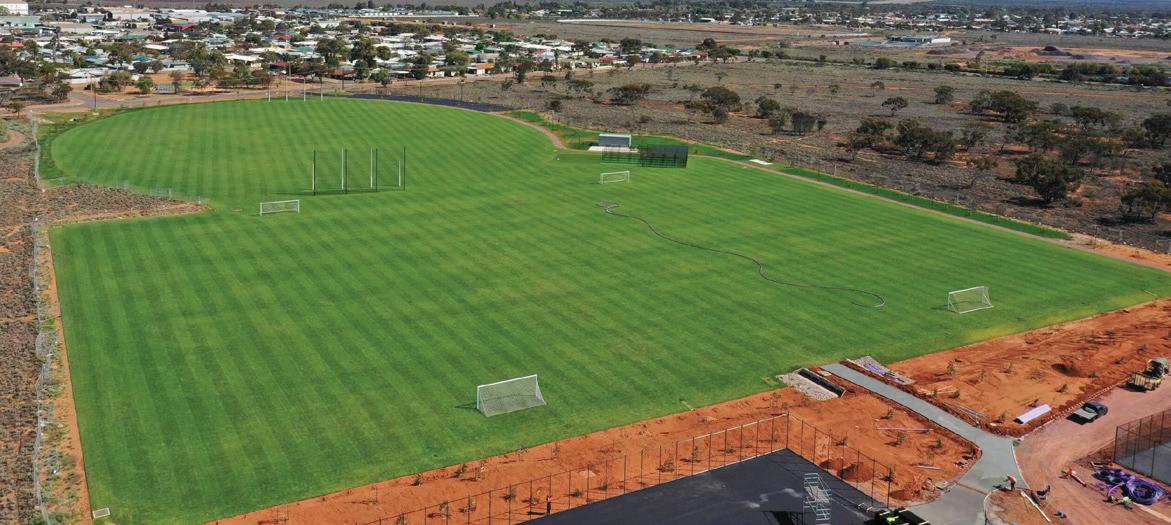
Featured at:
Campbelltown Stadium
Redcliffe Stadium

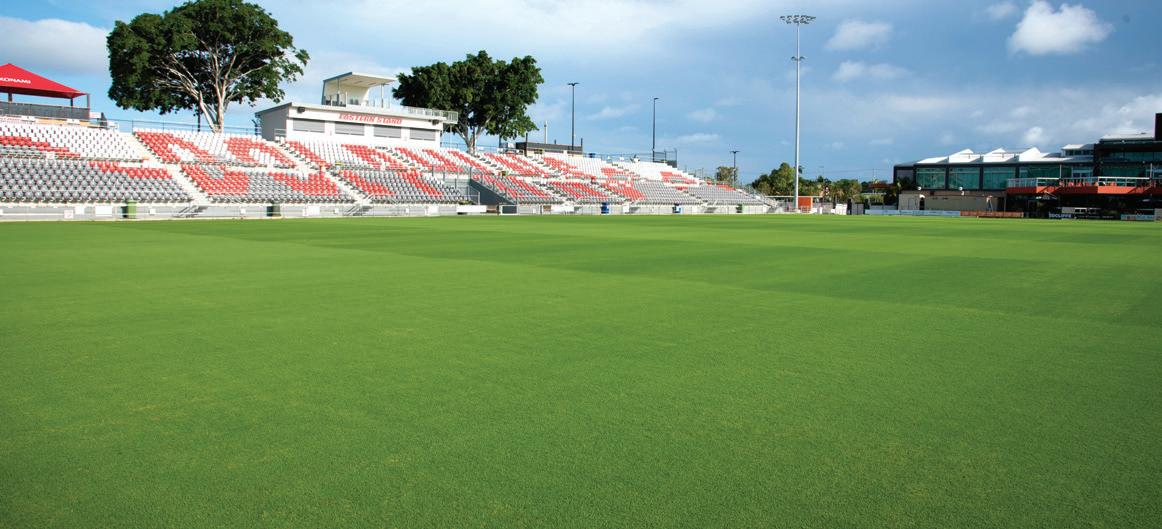
West Wyalong Golf Course
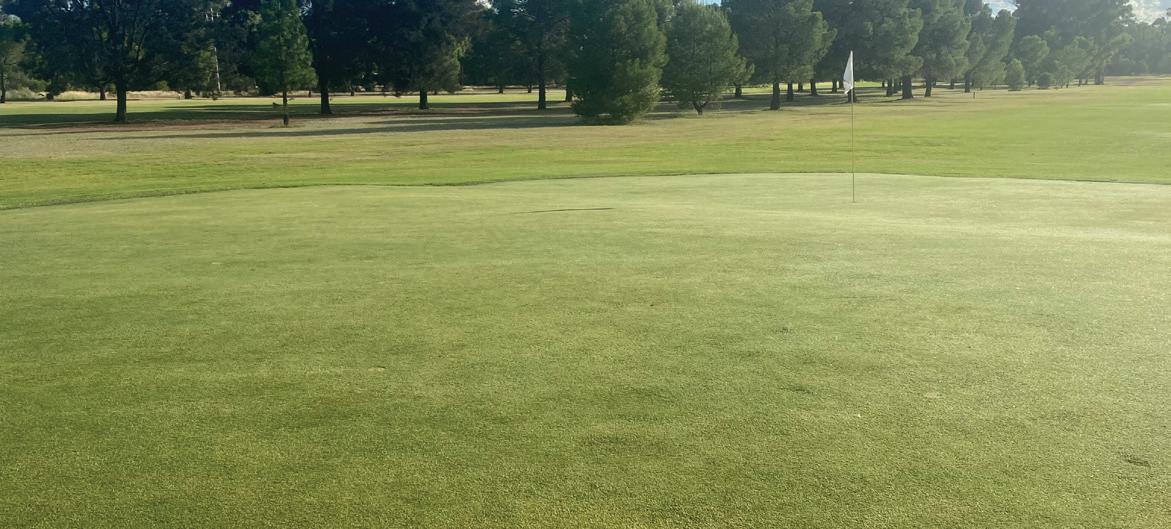
Whyalla Secondary College Kooyong Lawn Tennis Club
Outstanding Wear Tolerance
Dense surface growth and rapid regrowth after disturbance make TifTuf superior to other couch varieties regarding wear tolerance.
Requires Very Low inputs
It has one of the lowest fertiliser requirements of any couch turf and only requires 1/5th of the nitrogen of common couch grasses.
Improved Shade Tolerance Among Couch Grasses
Couch grasses are not generally renowned for being shade-tolerant, but TifTuf has been growing in areas of low light where other couch grasses would not survive.
Stays Greener for Longer
TifTuf stays greener longer, not only under drought stress but, due to its greater cold tolerance, during the transition times of spring and autumn.
• • • • •
1300 883 711 lawnsolutionsaustralia.com.au
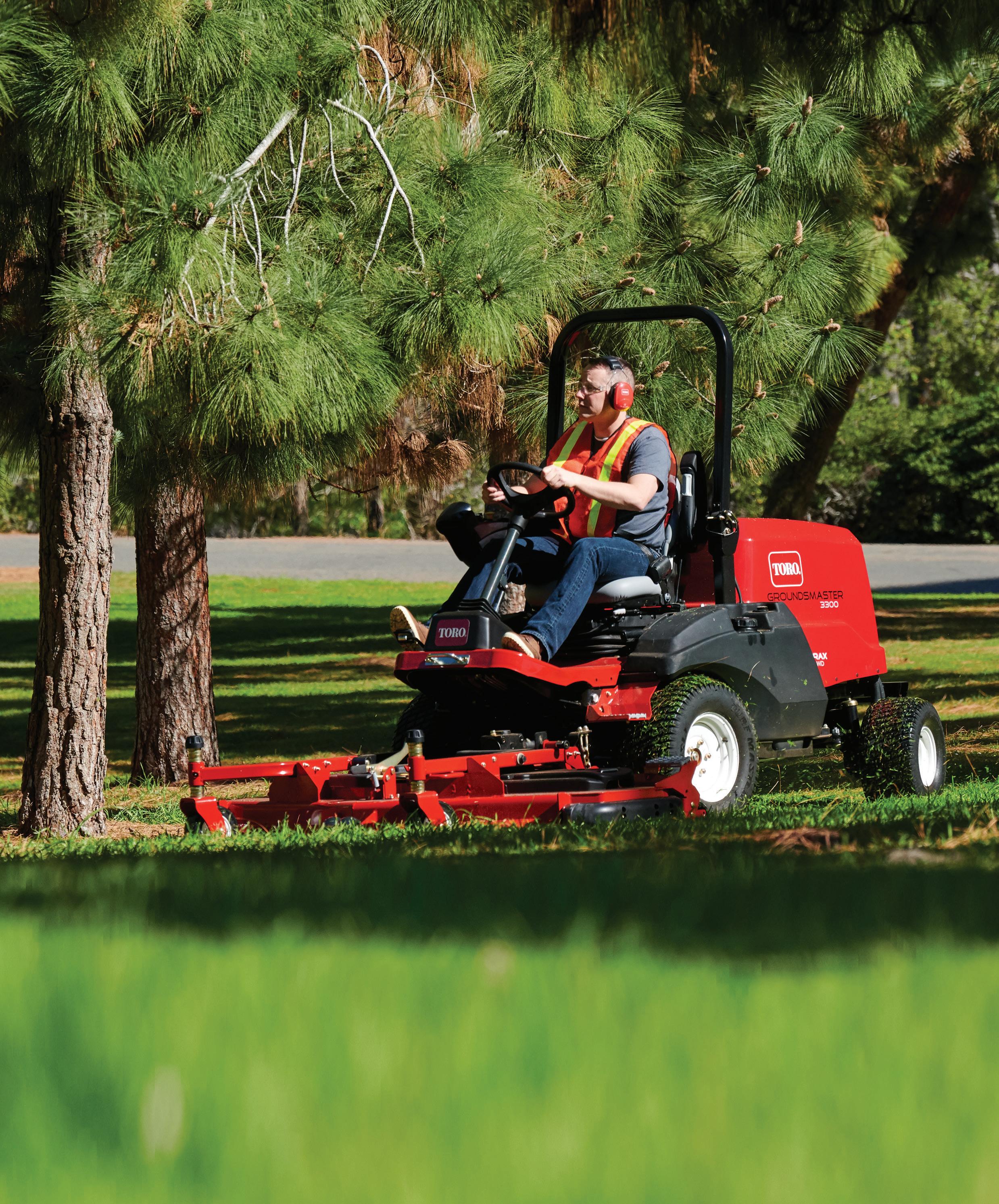
For more information call 1800 356 372 or contact your Toro Golf Area Sales Manager toro.com.au From Legendary Durability to All-Season Versatility The Groundsmaster® 3200/3300 Series delivers unparalleled productivity. Featuring a powerful 37.4 hp or 24.7 hp Yanmar® engine, CrossTrax® all-wheel drive and legendary Groundsmaster decks that deliver an exceptional quality of cut. From the fully adjustable suspension seat and steering column, fingertip engine controls and optional all-season cab, this new mower is designed for all-day comfort. Routine maintenance is also easy with the innovative tilt-up deck design. Productivity, comfort, reliability. That’s the Groundsmaster® 3200/3300. OUT-FRONT PERFORMANCE









































































































































































































































































